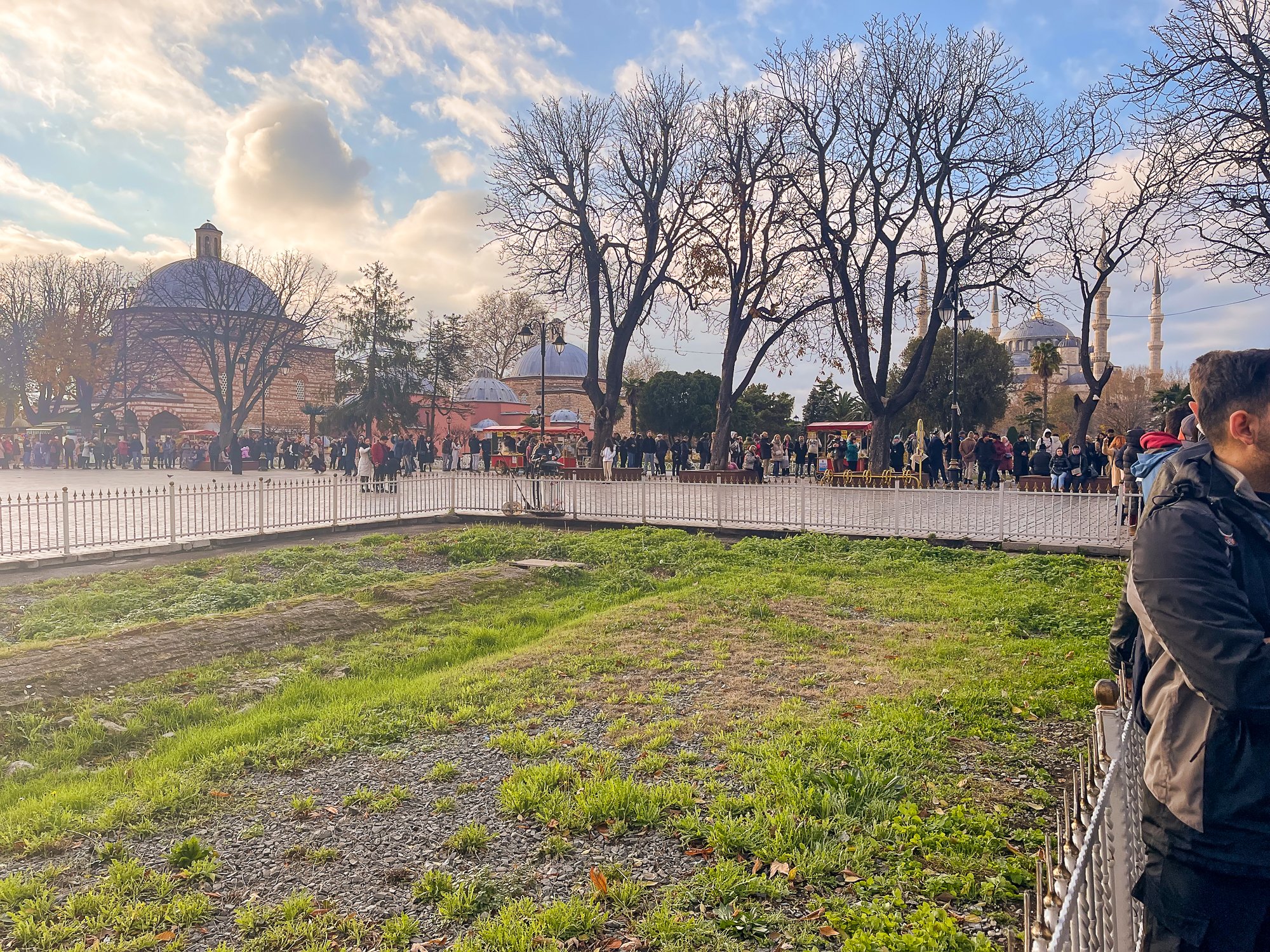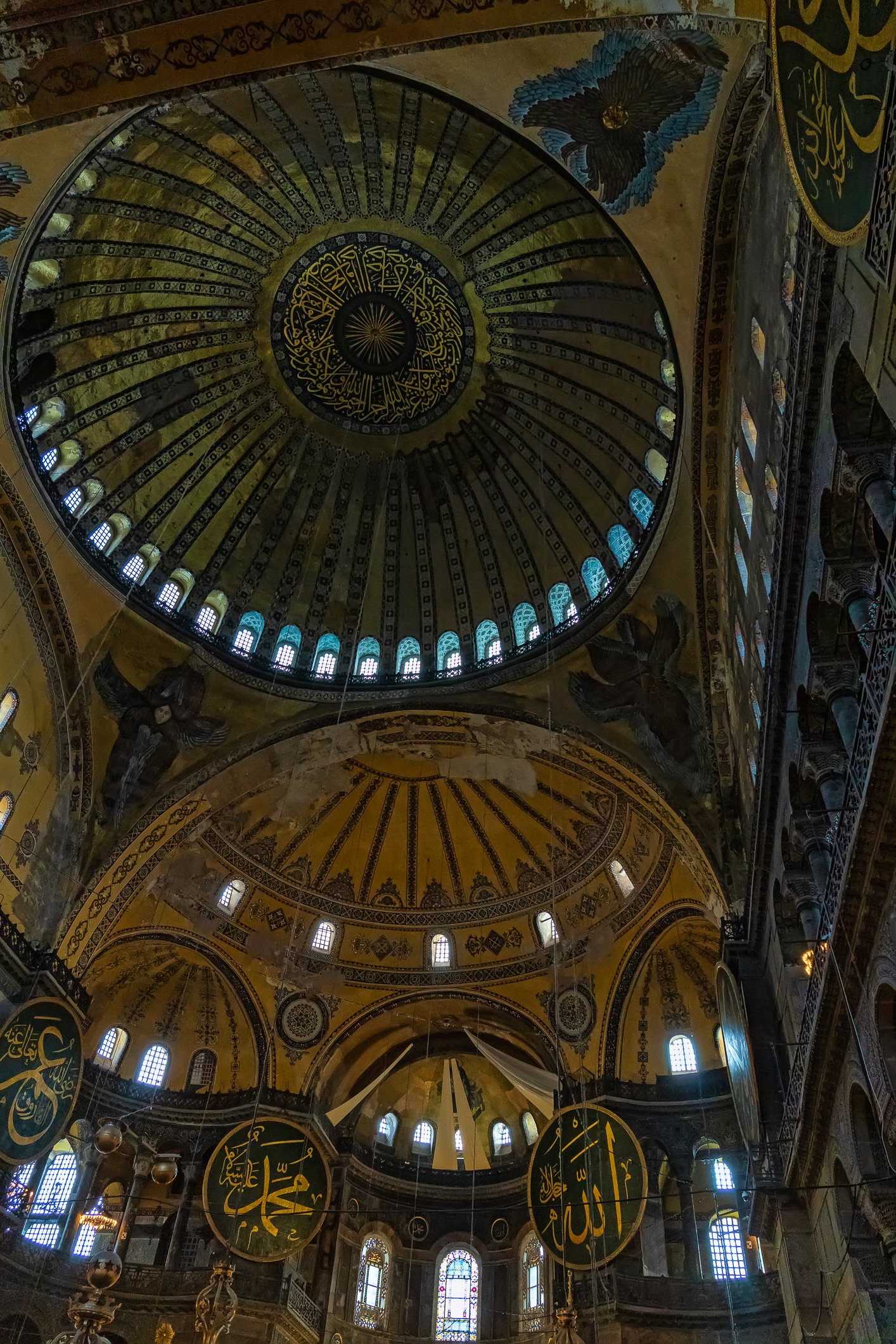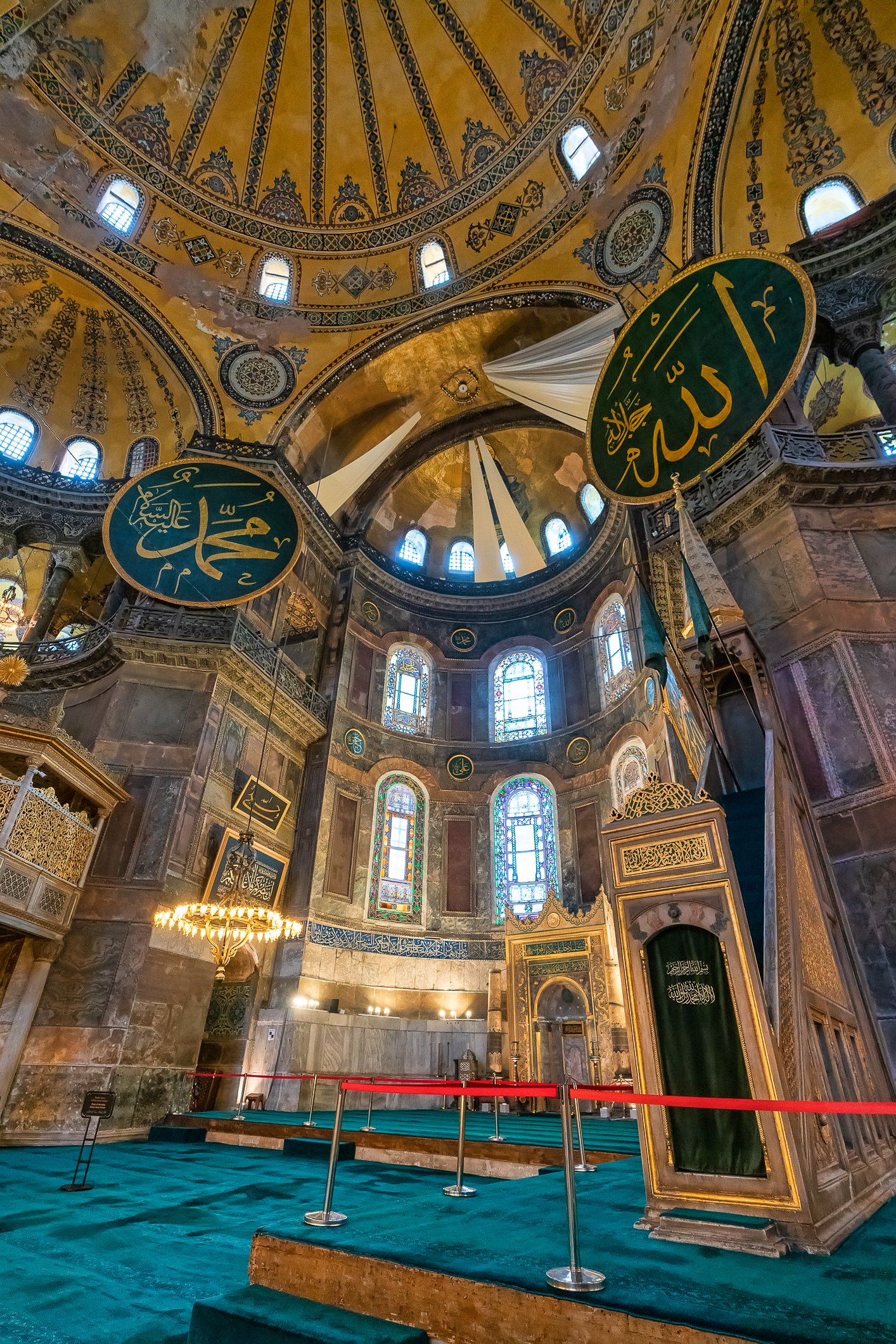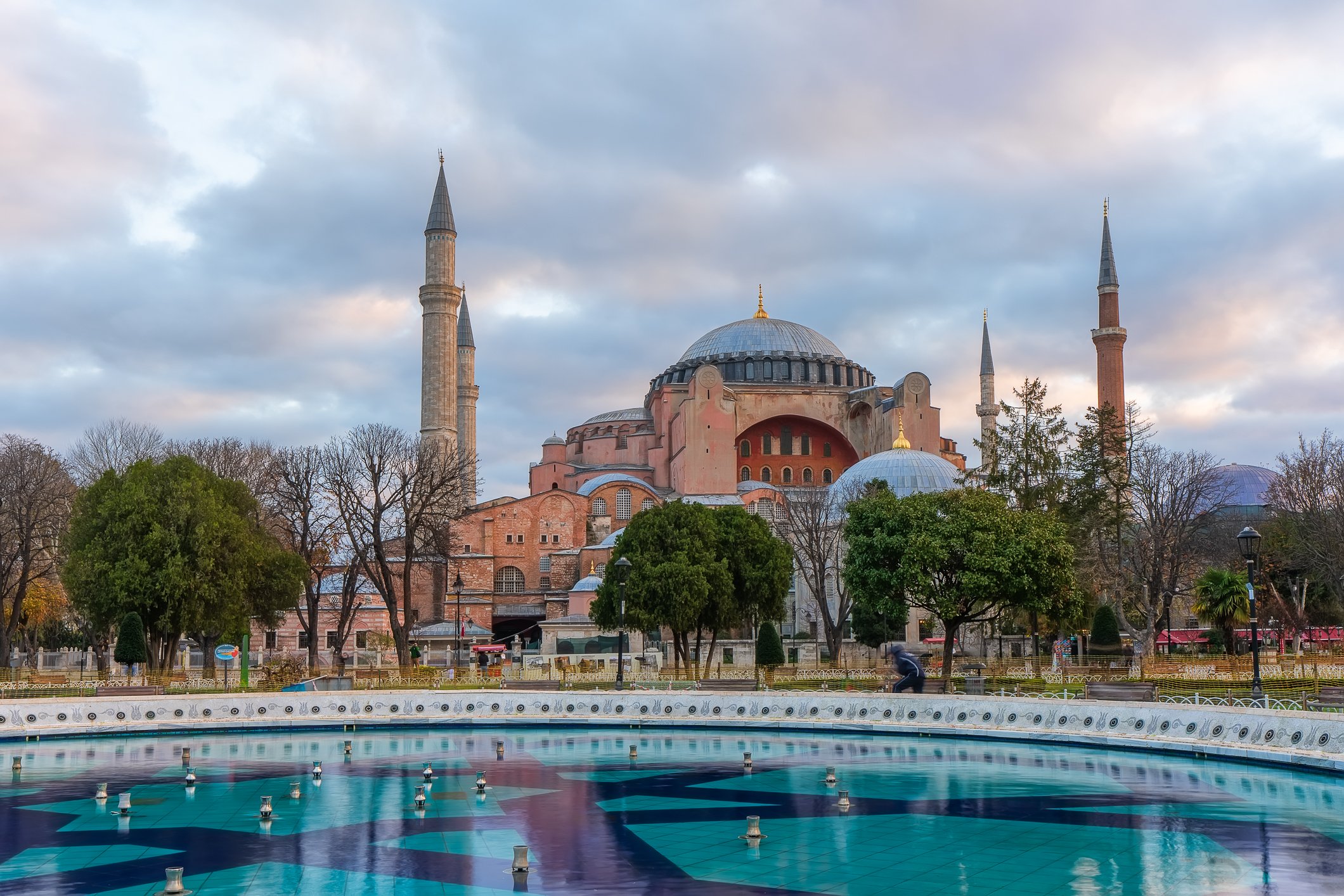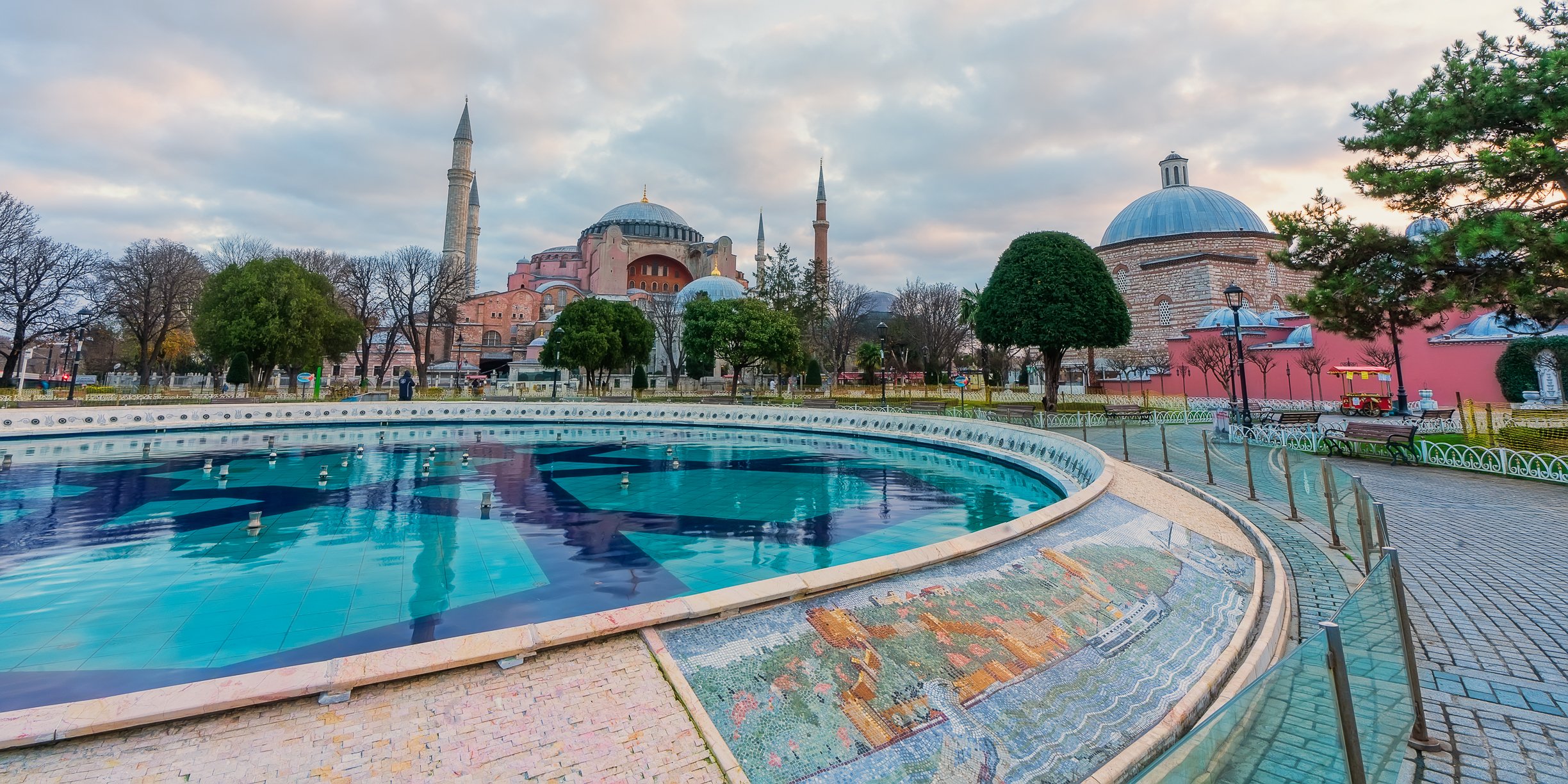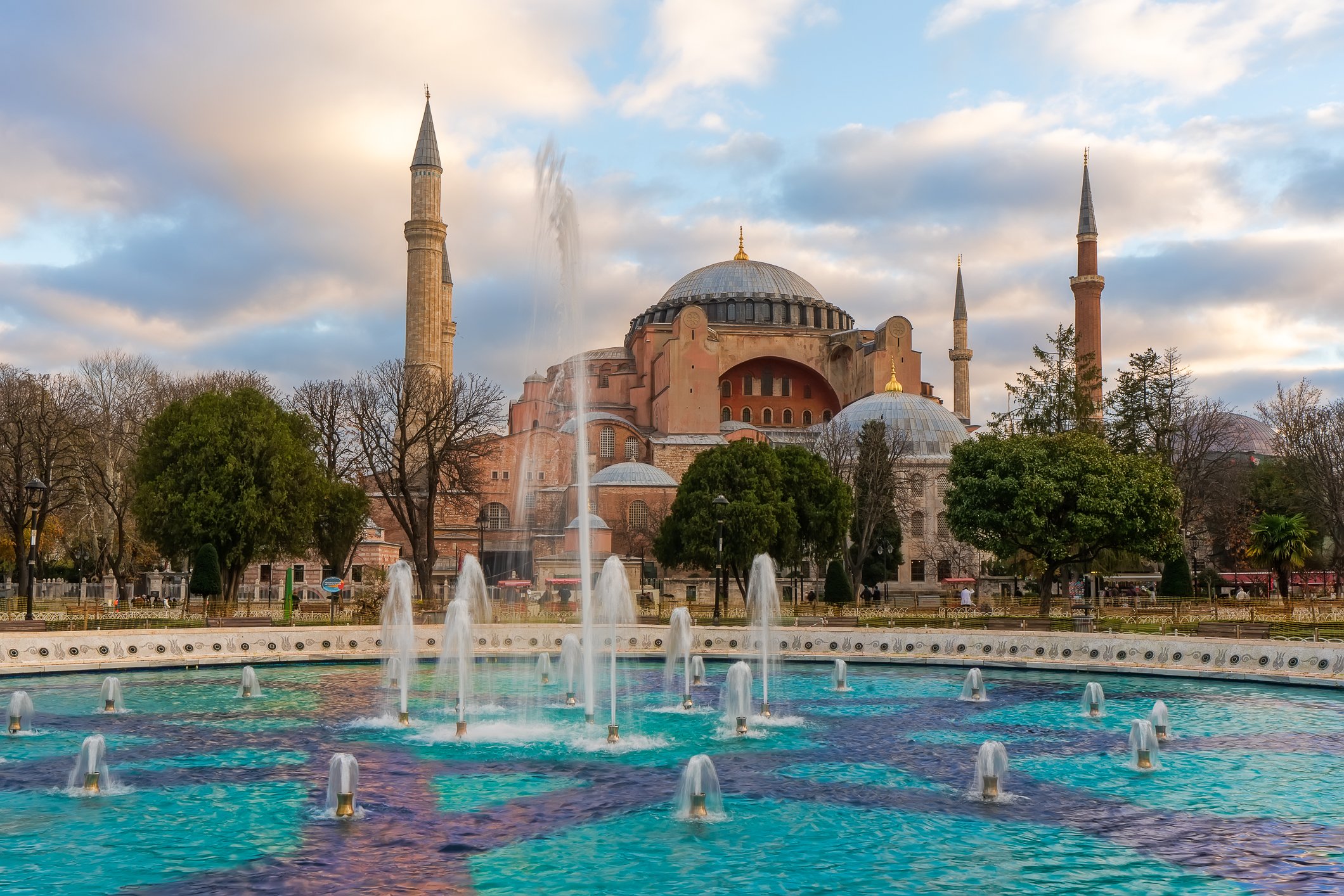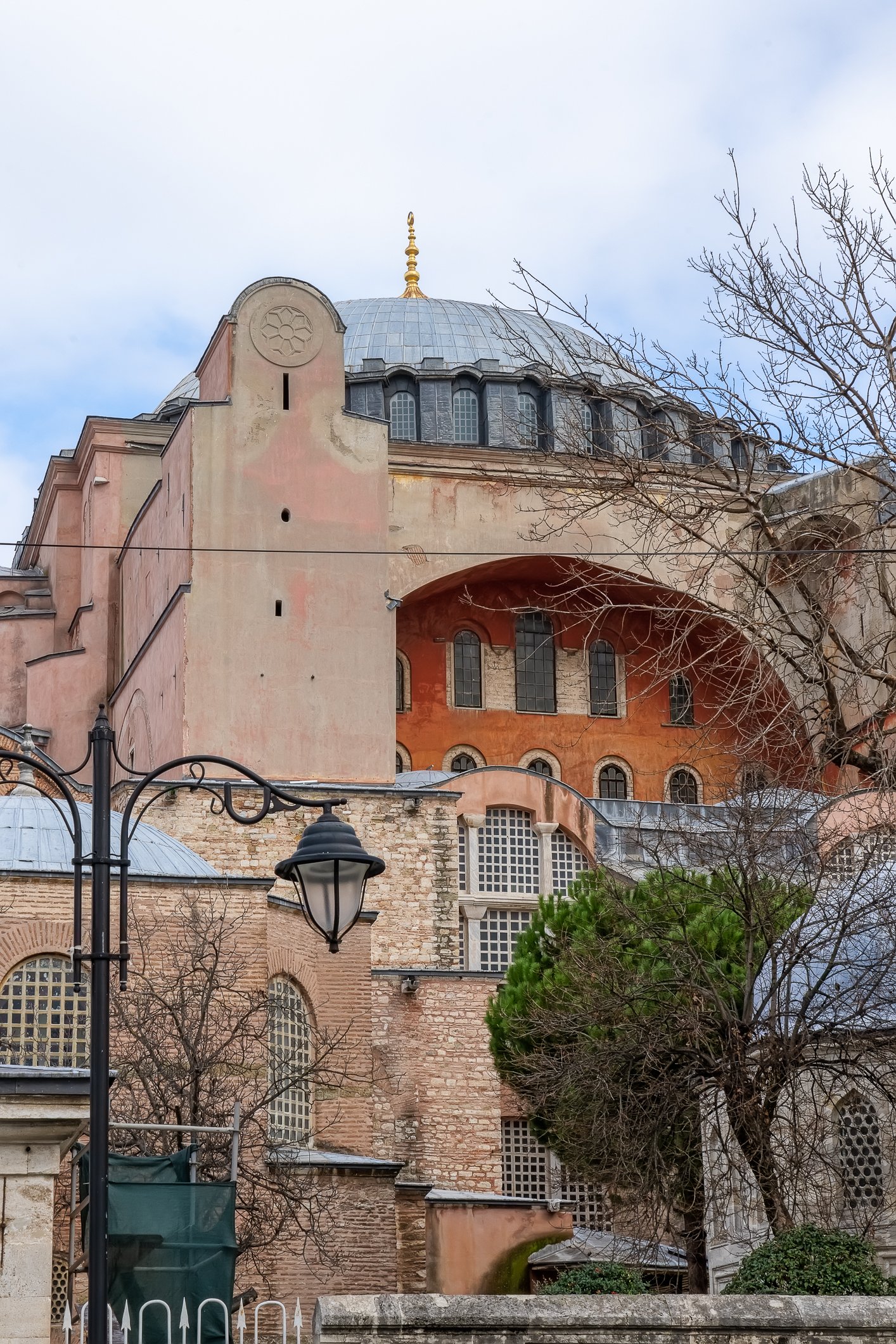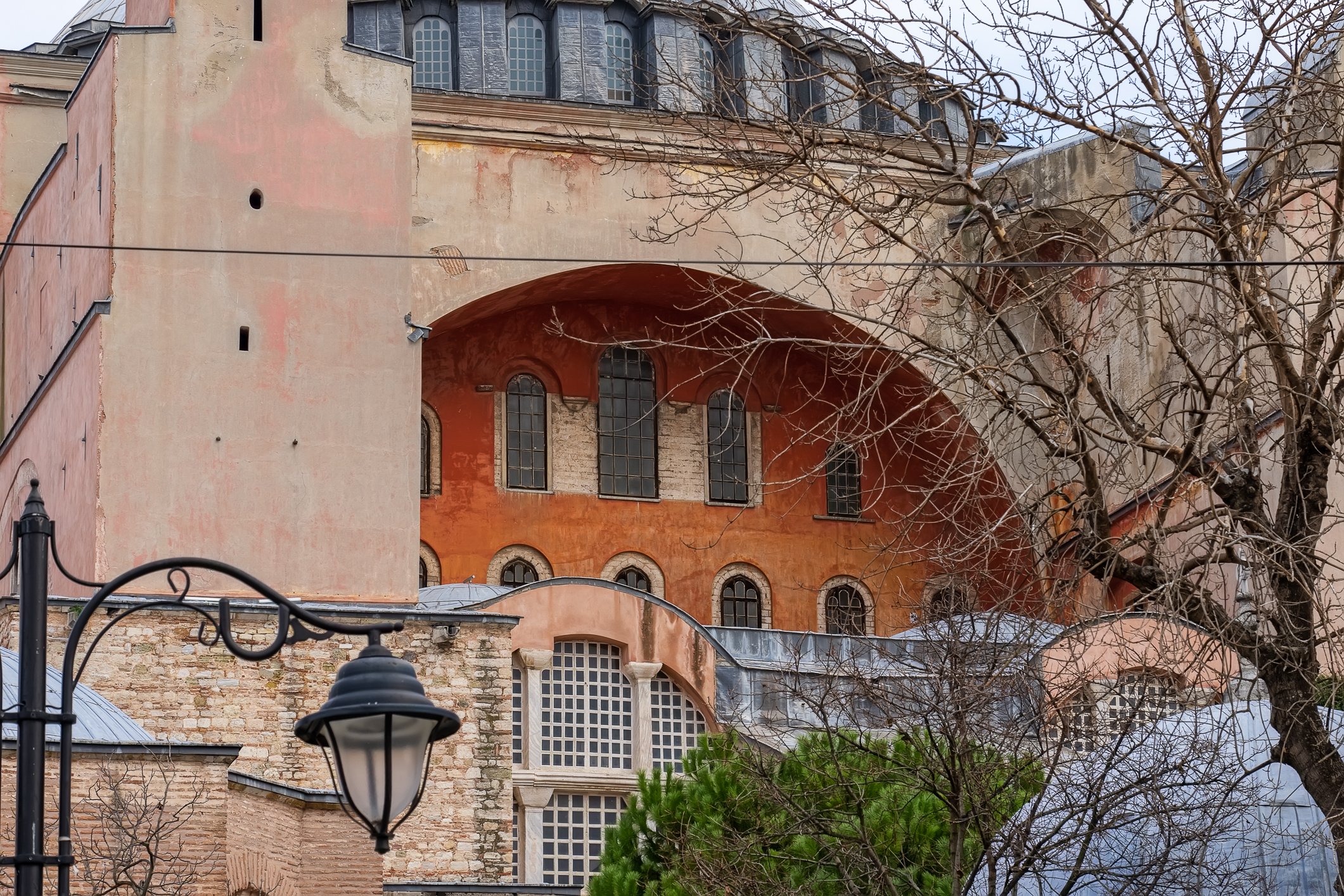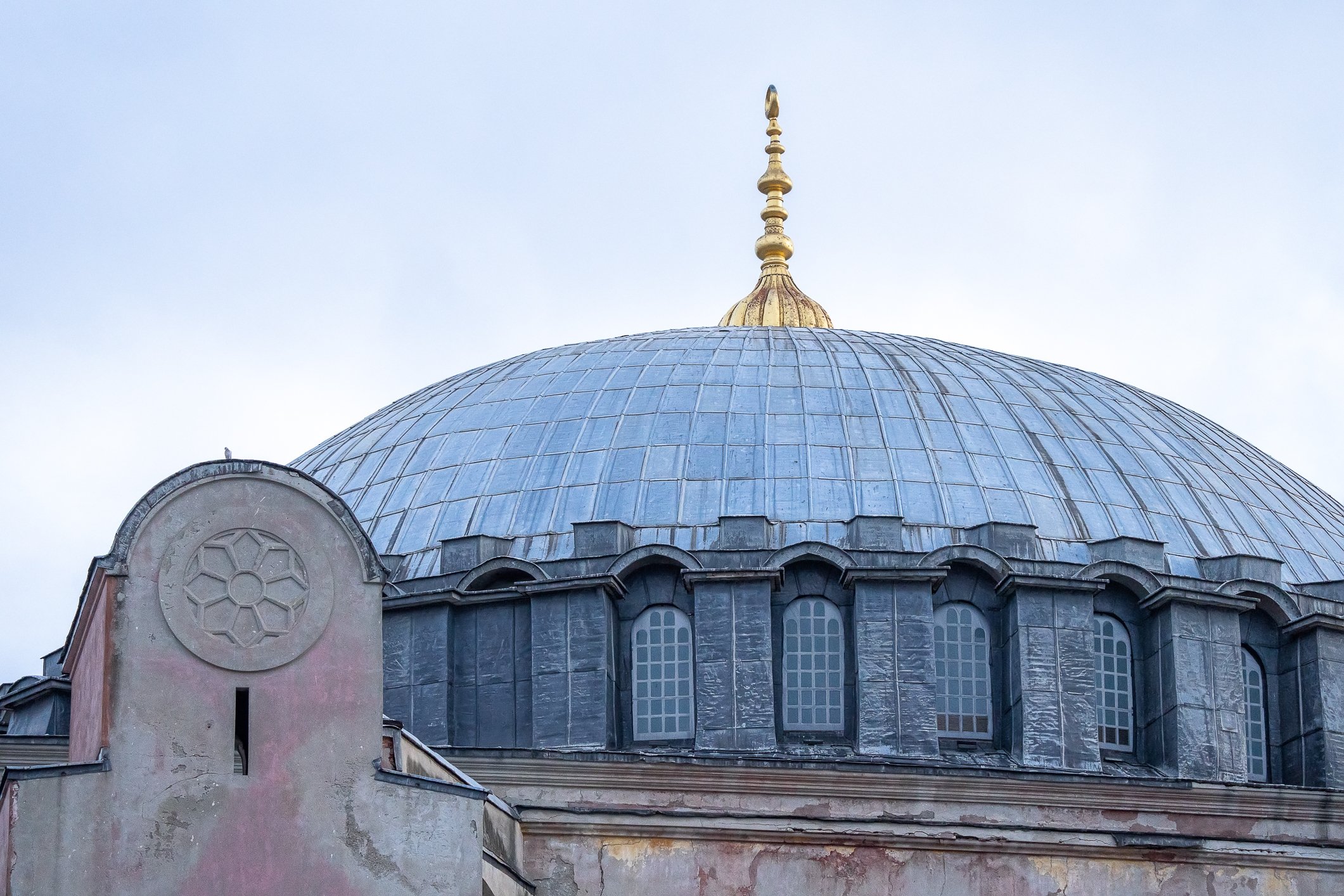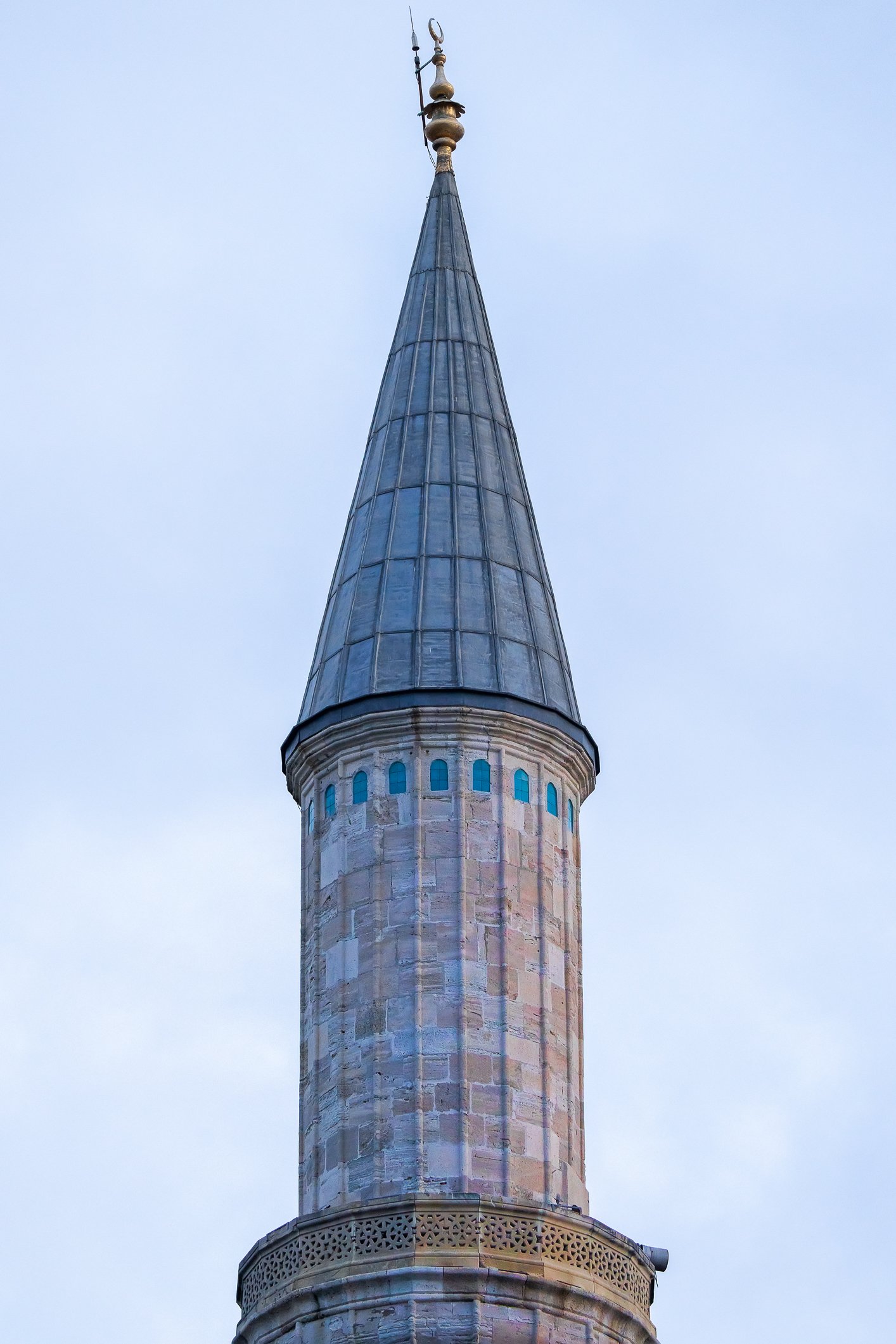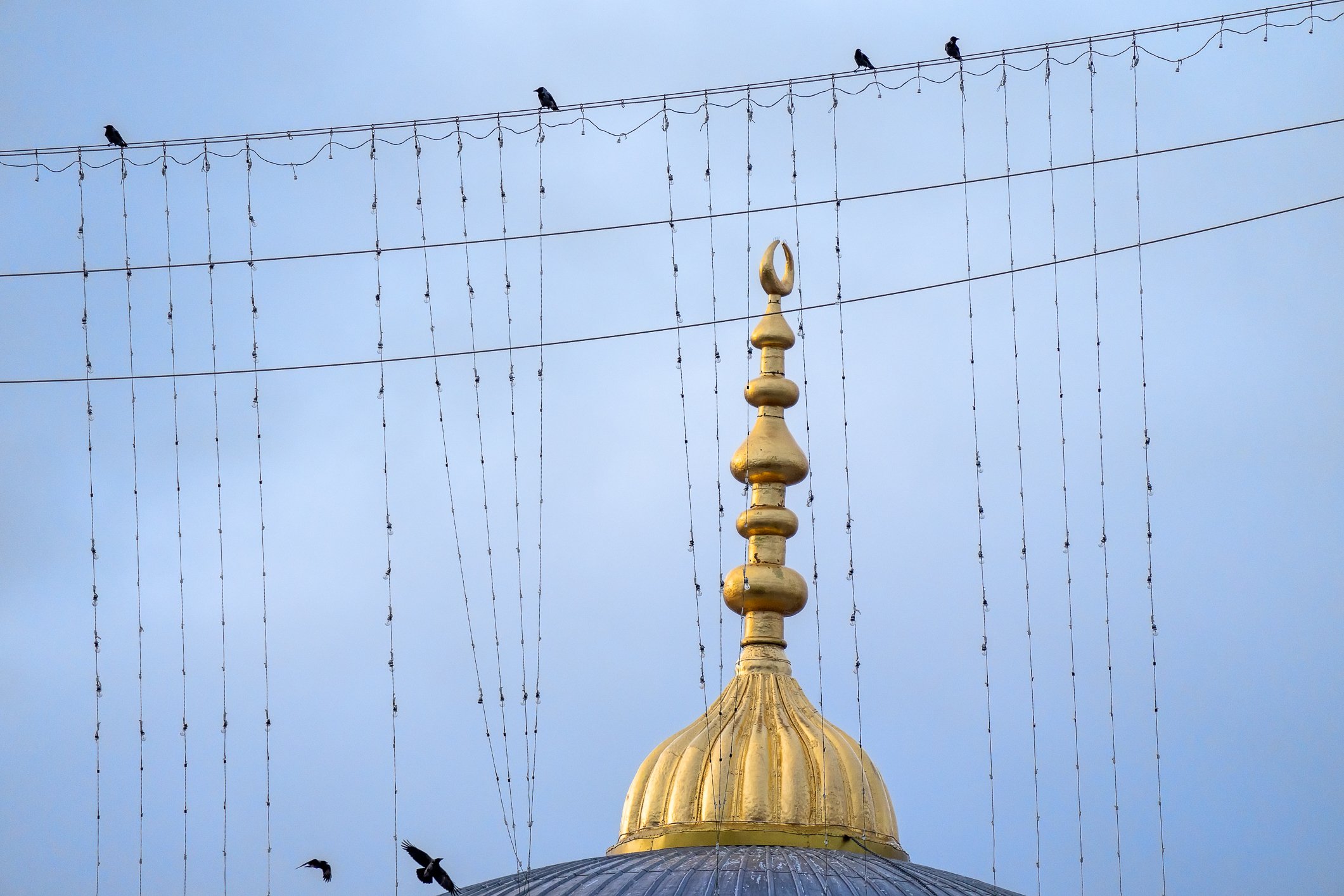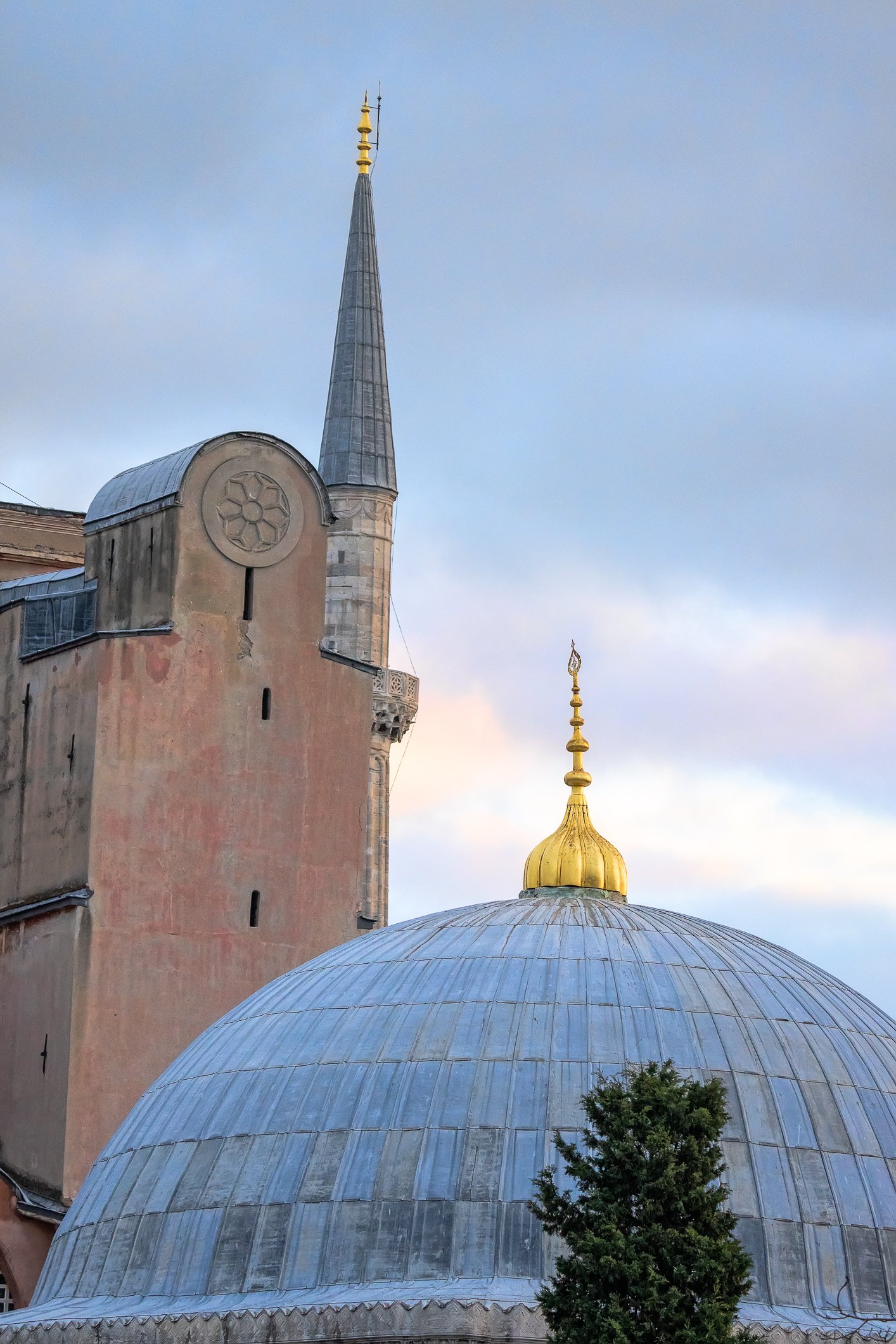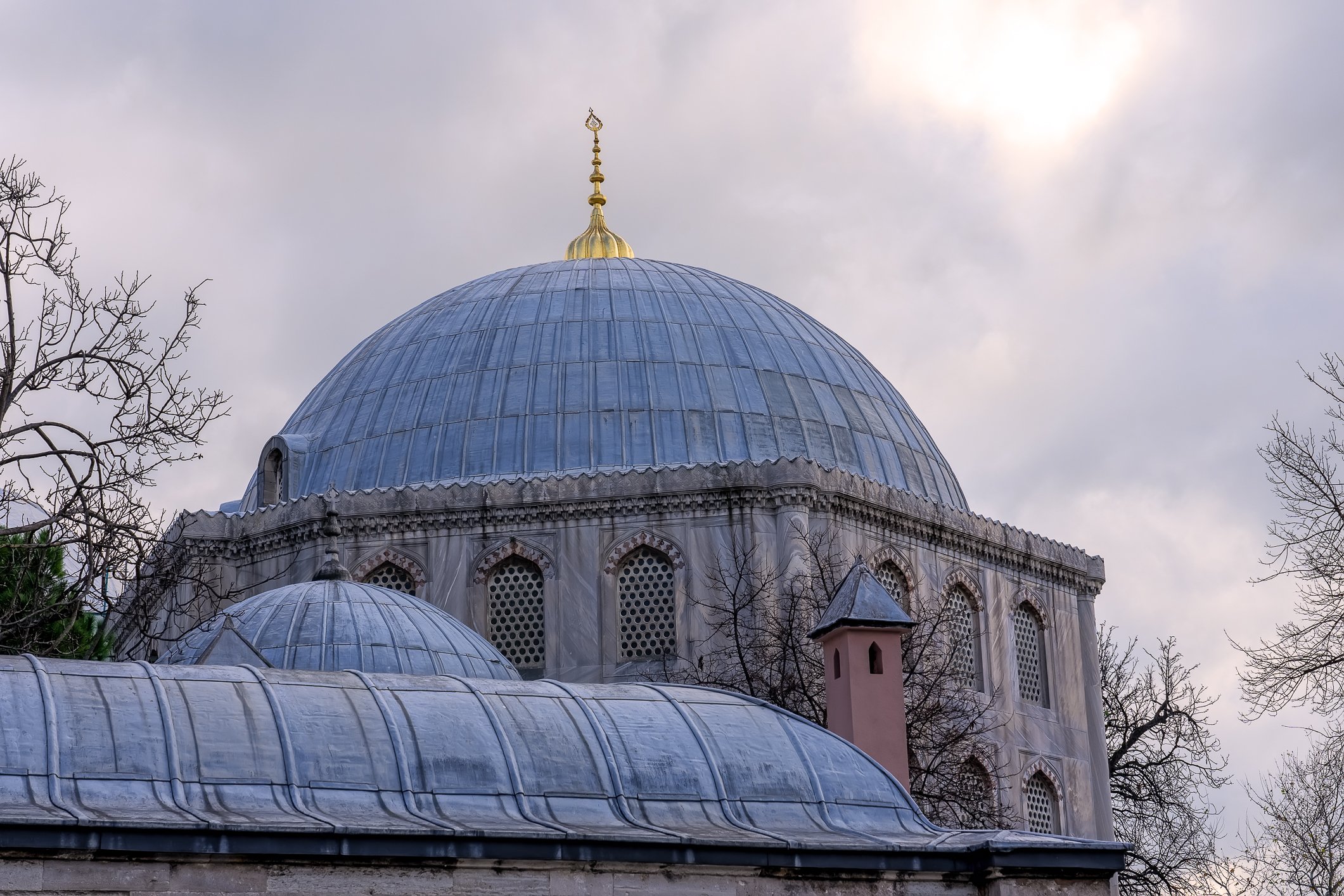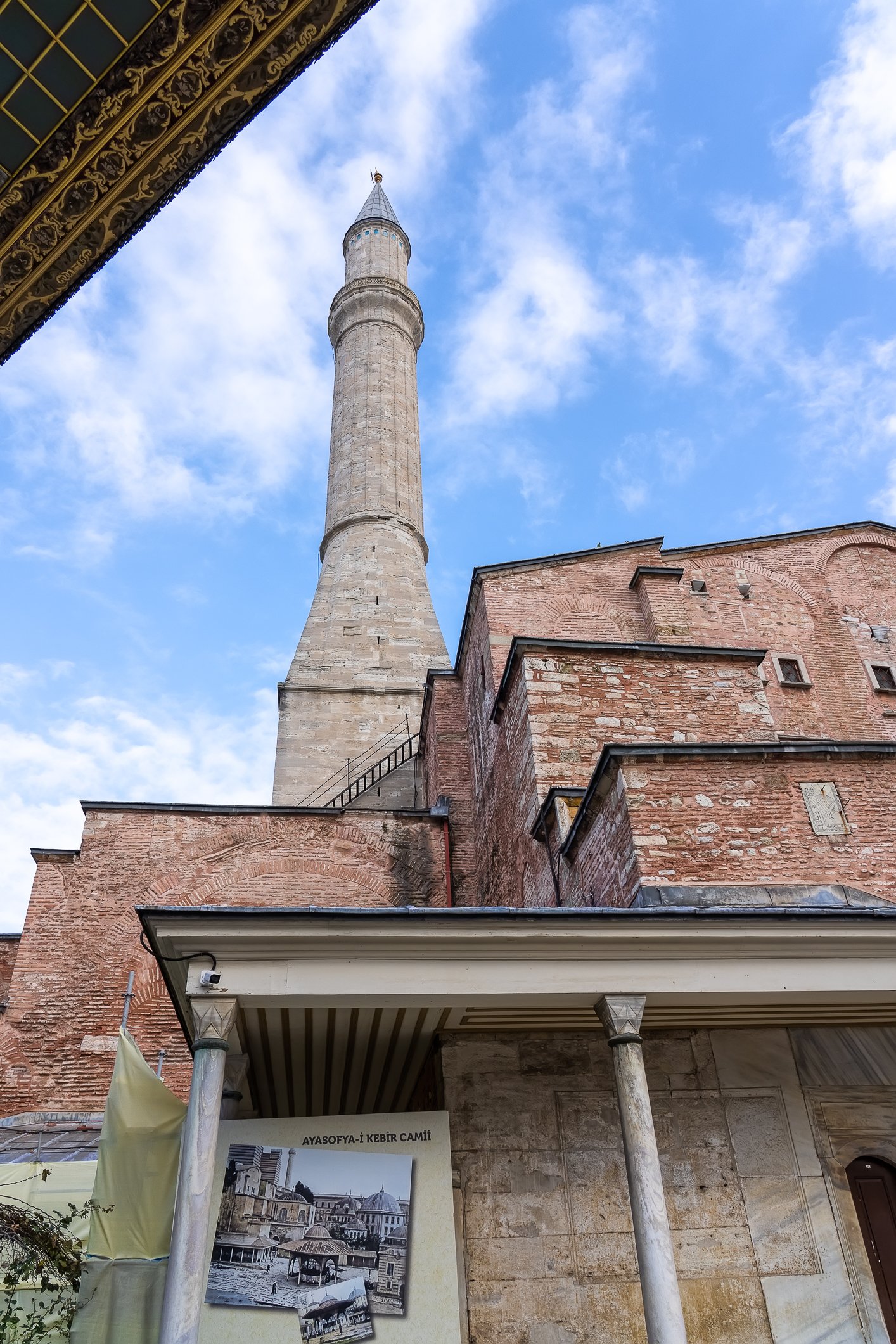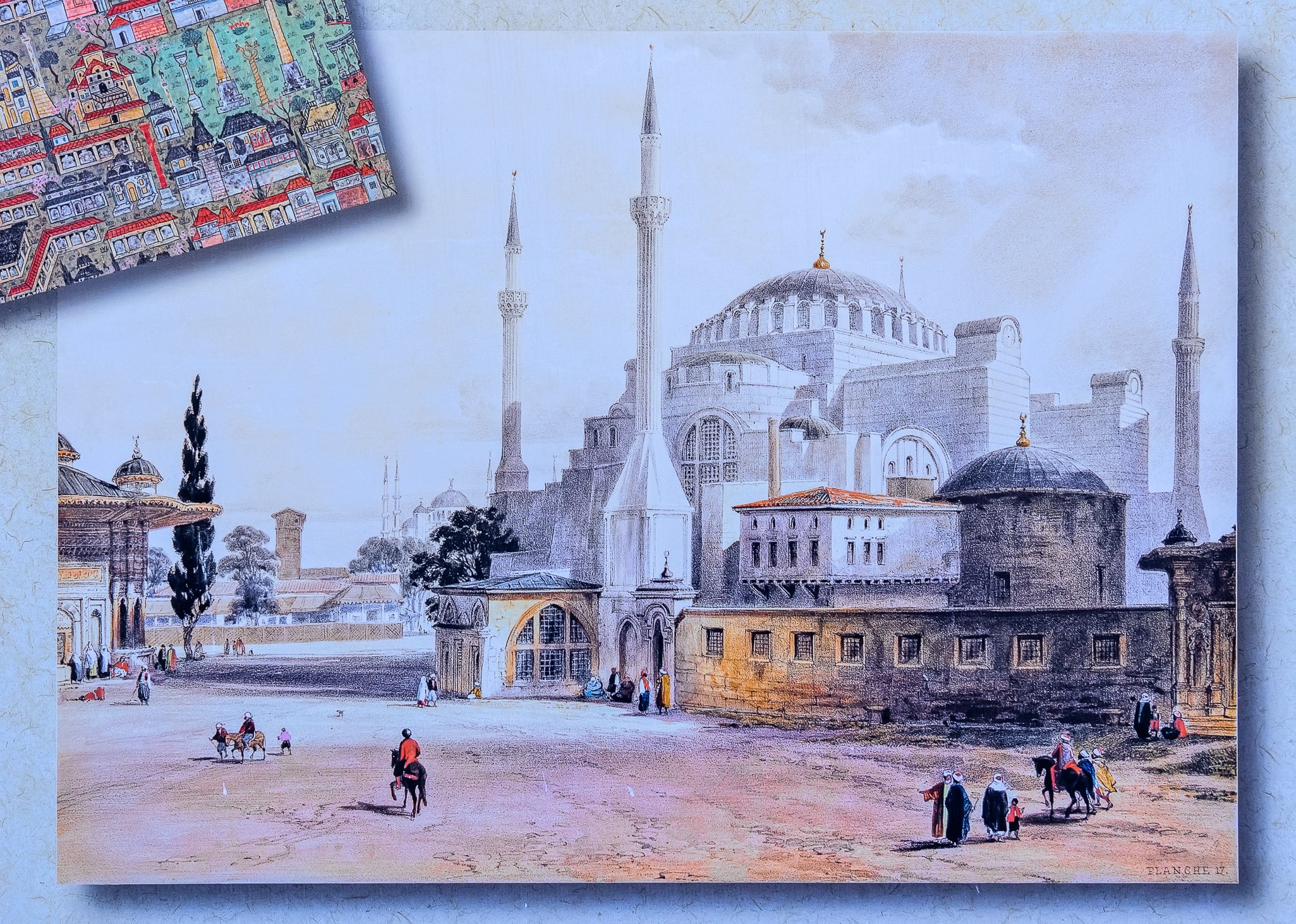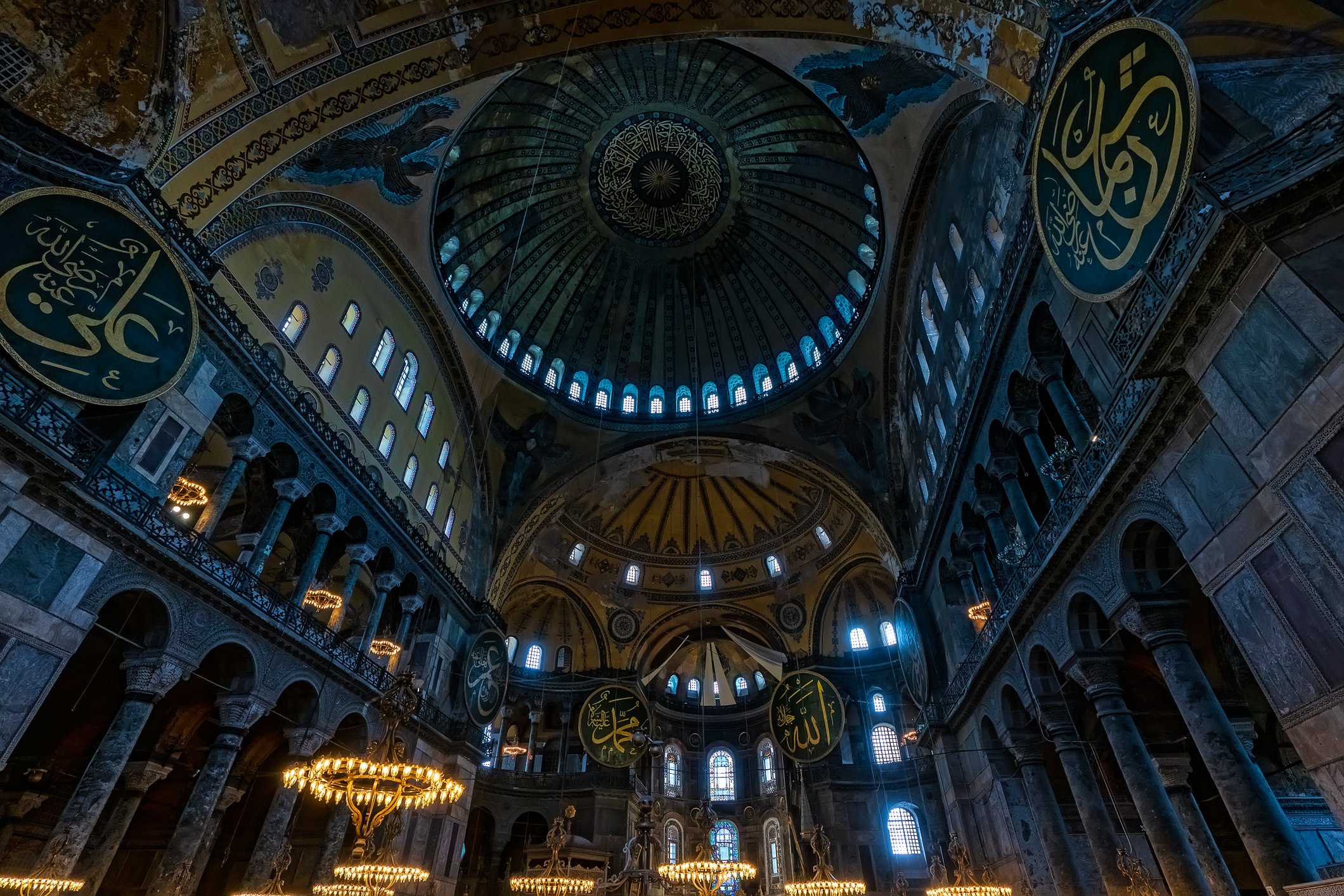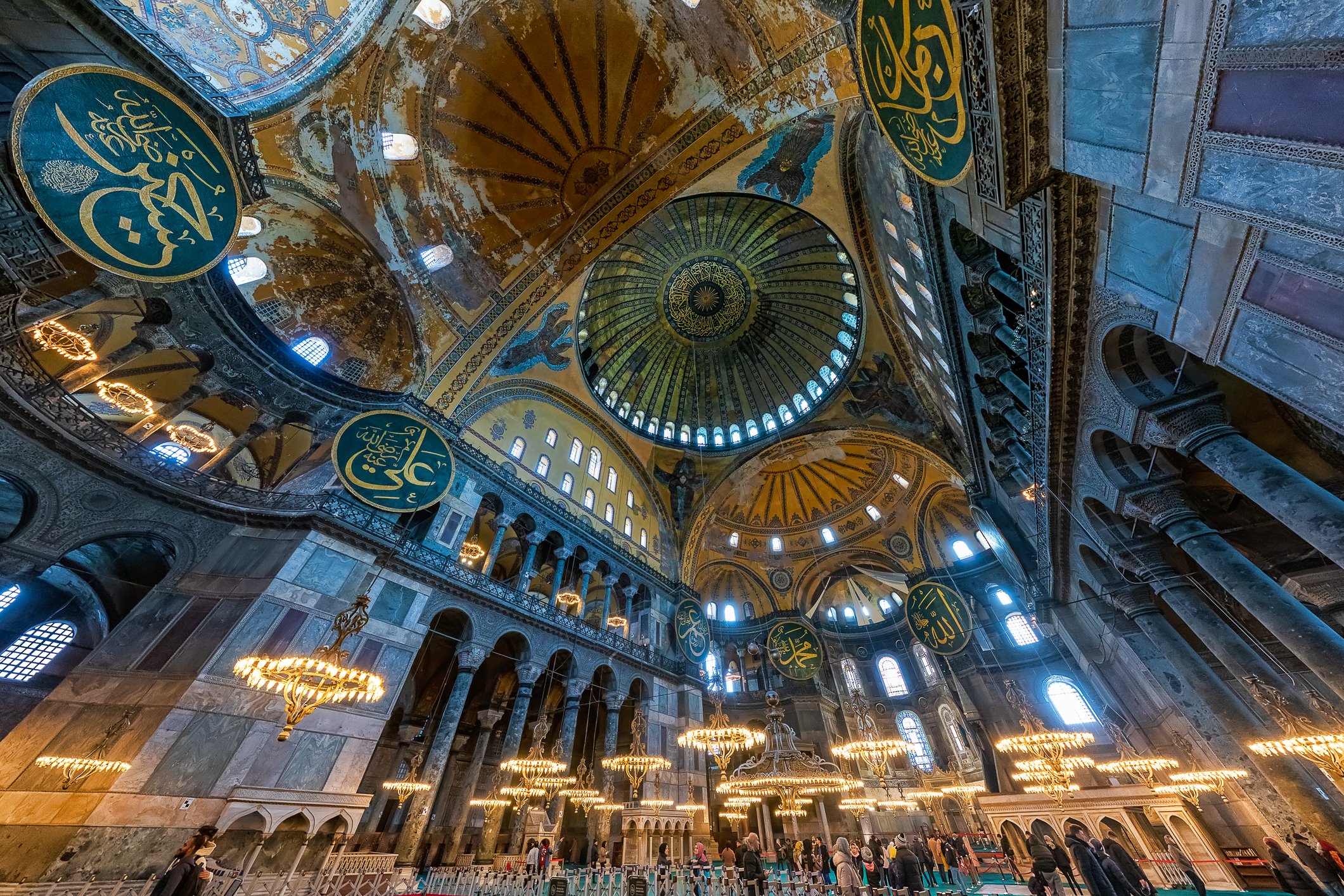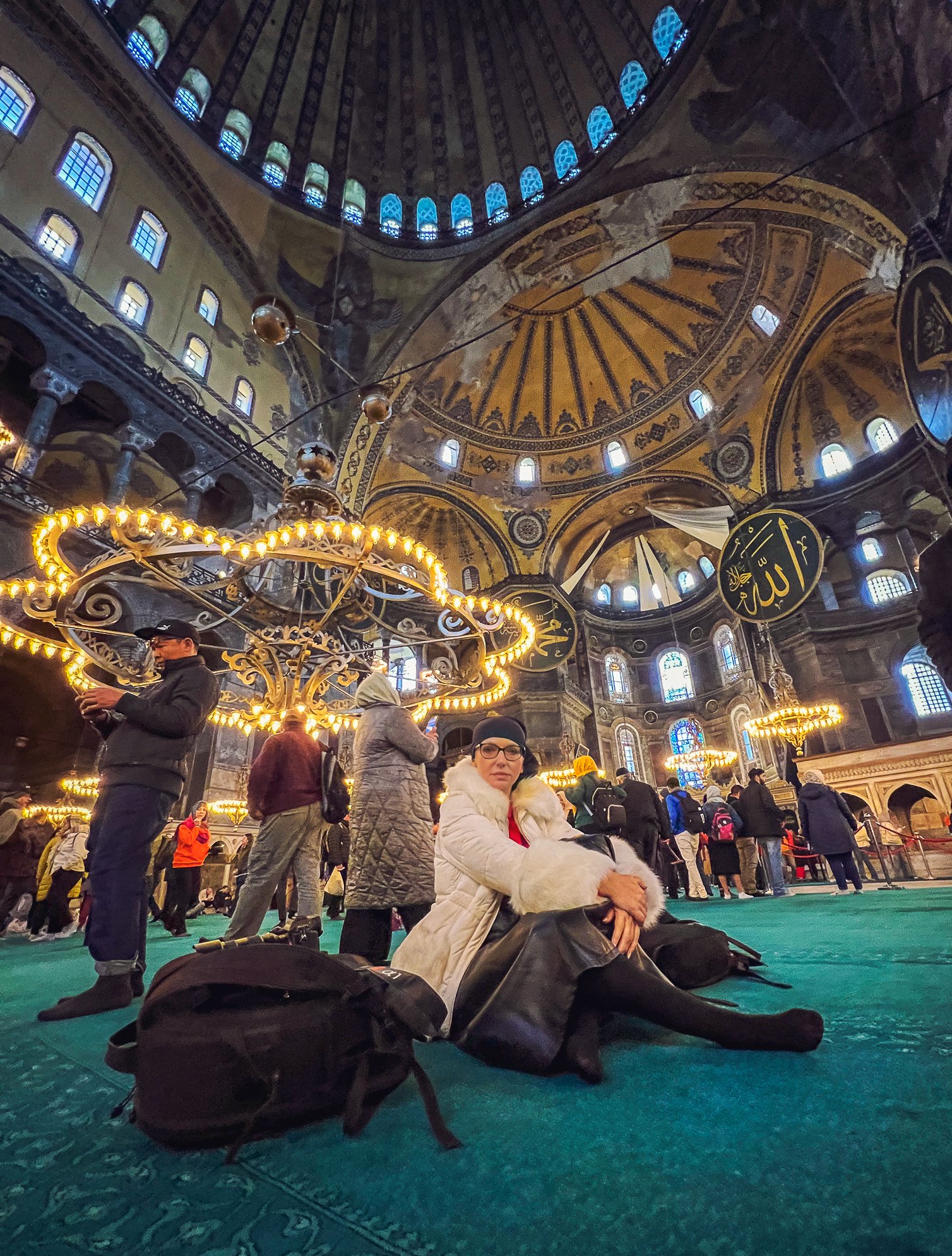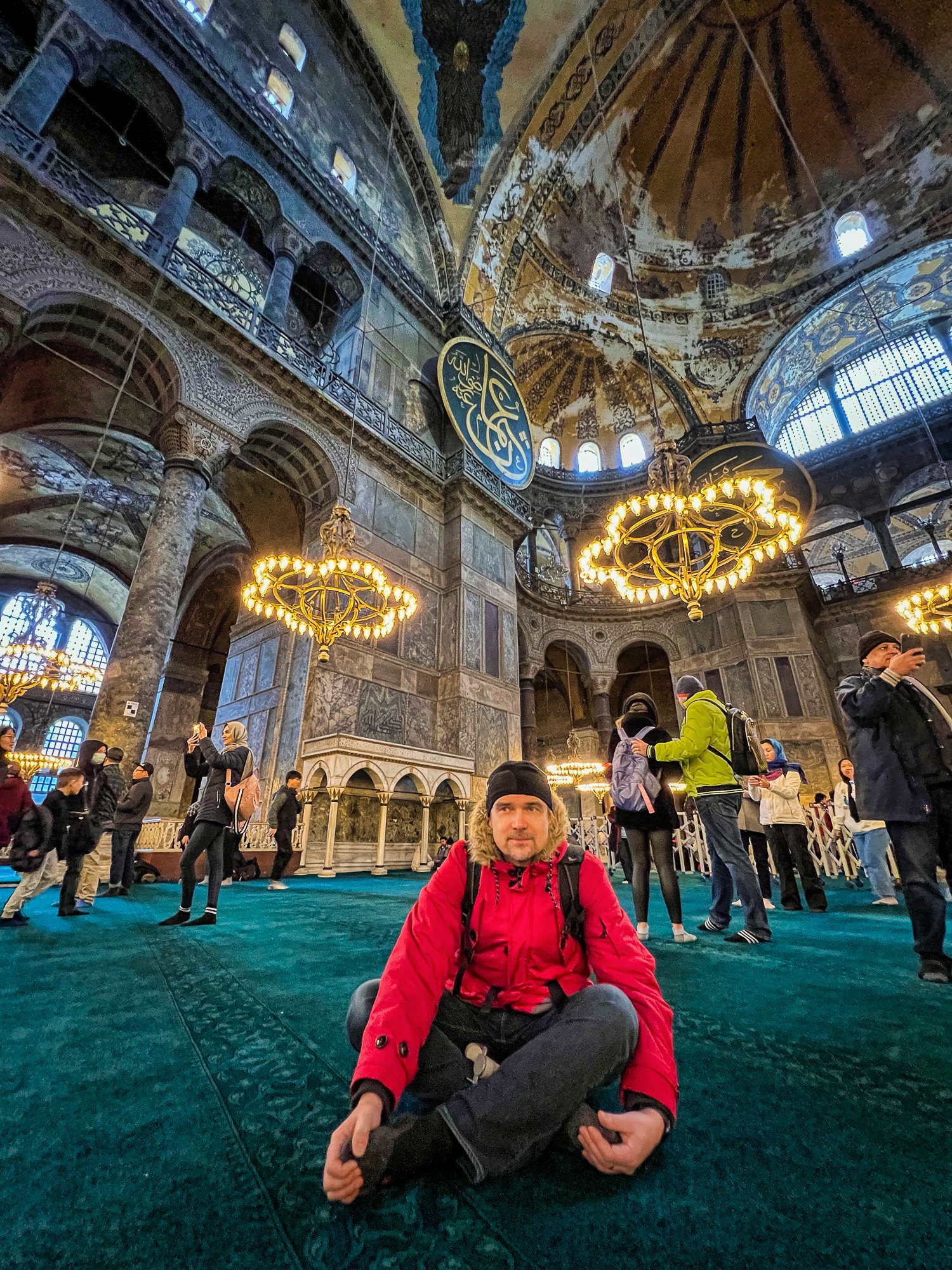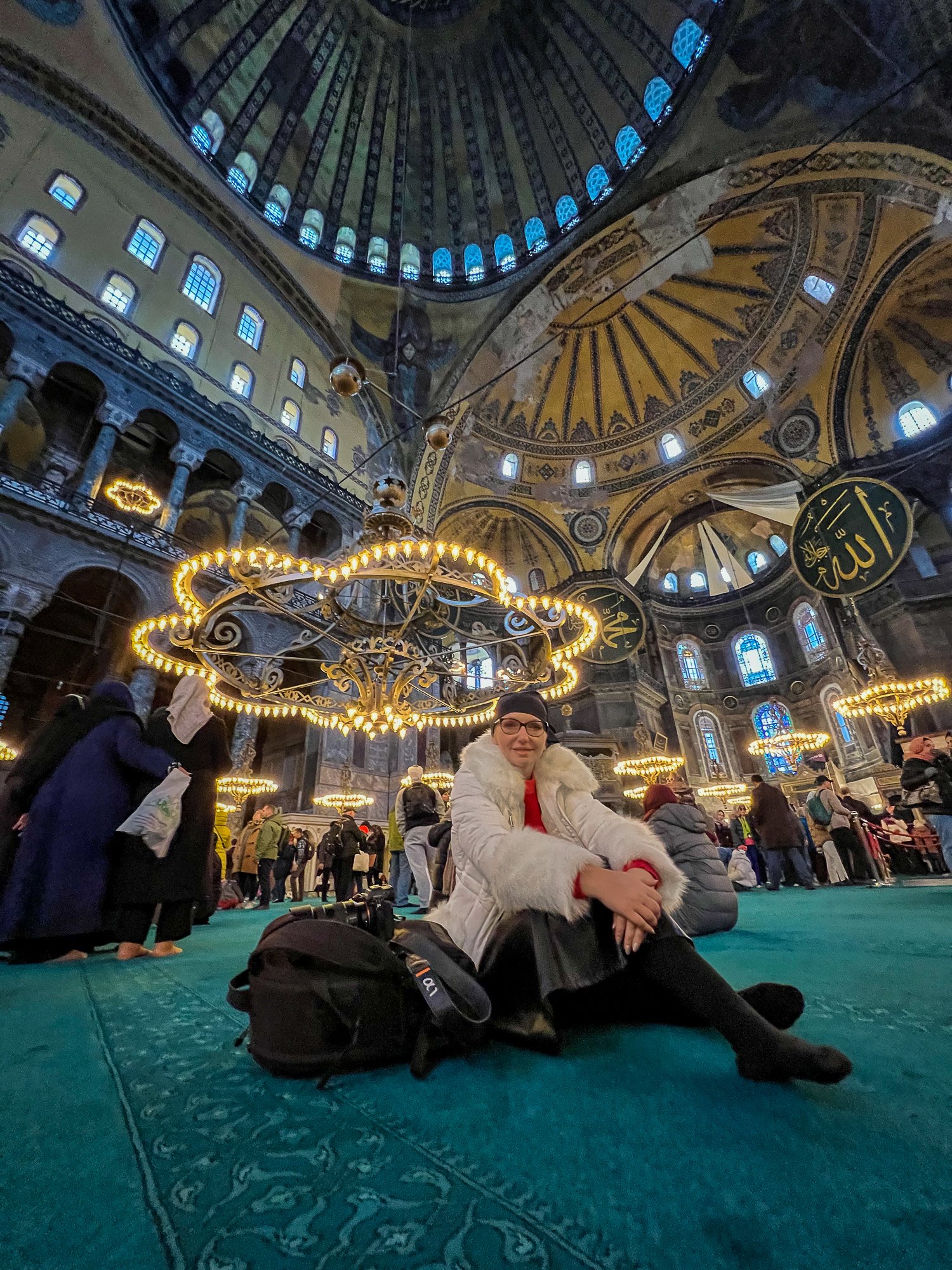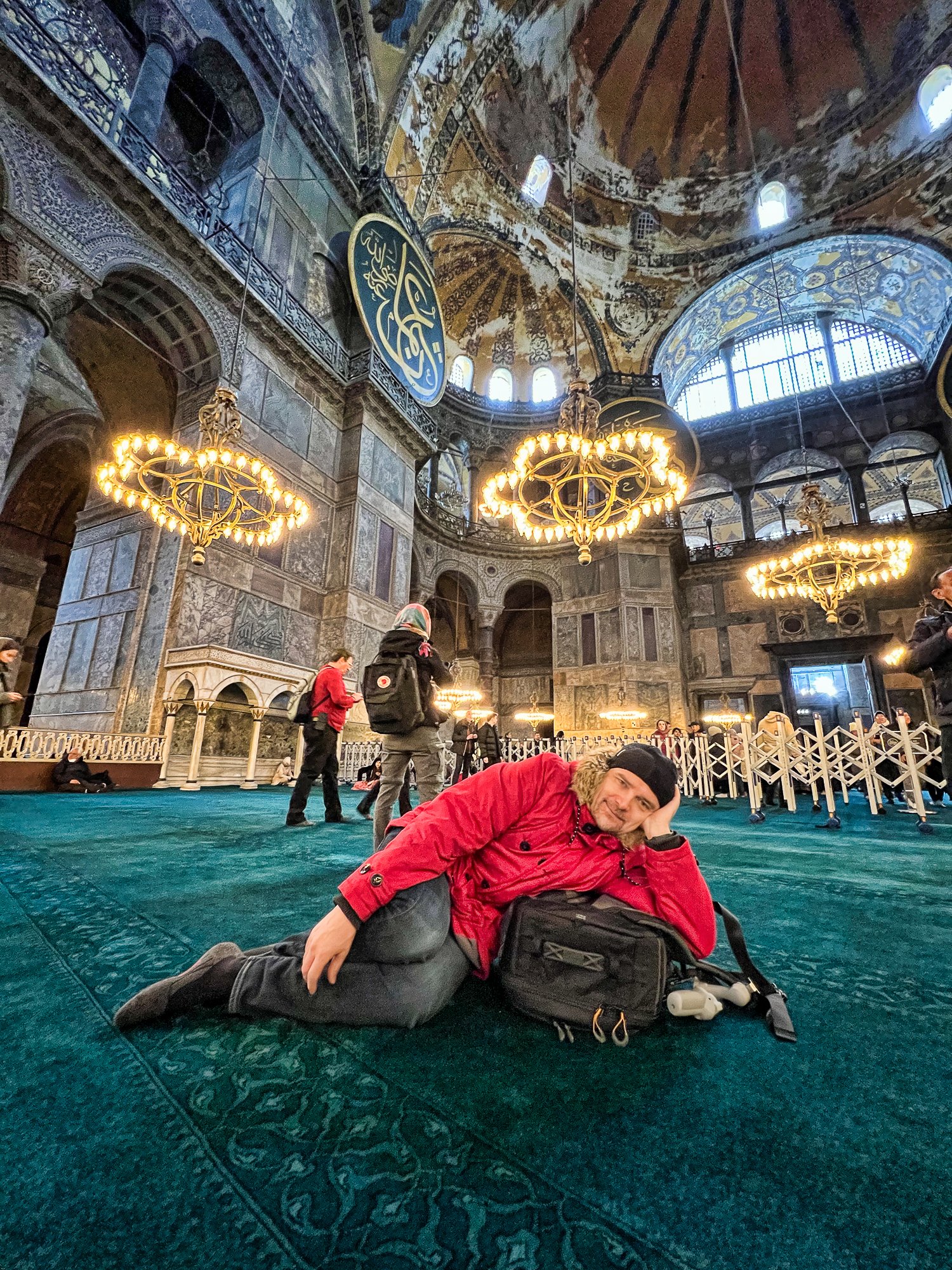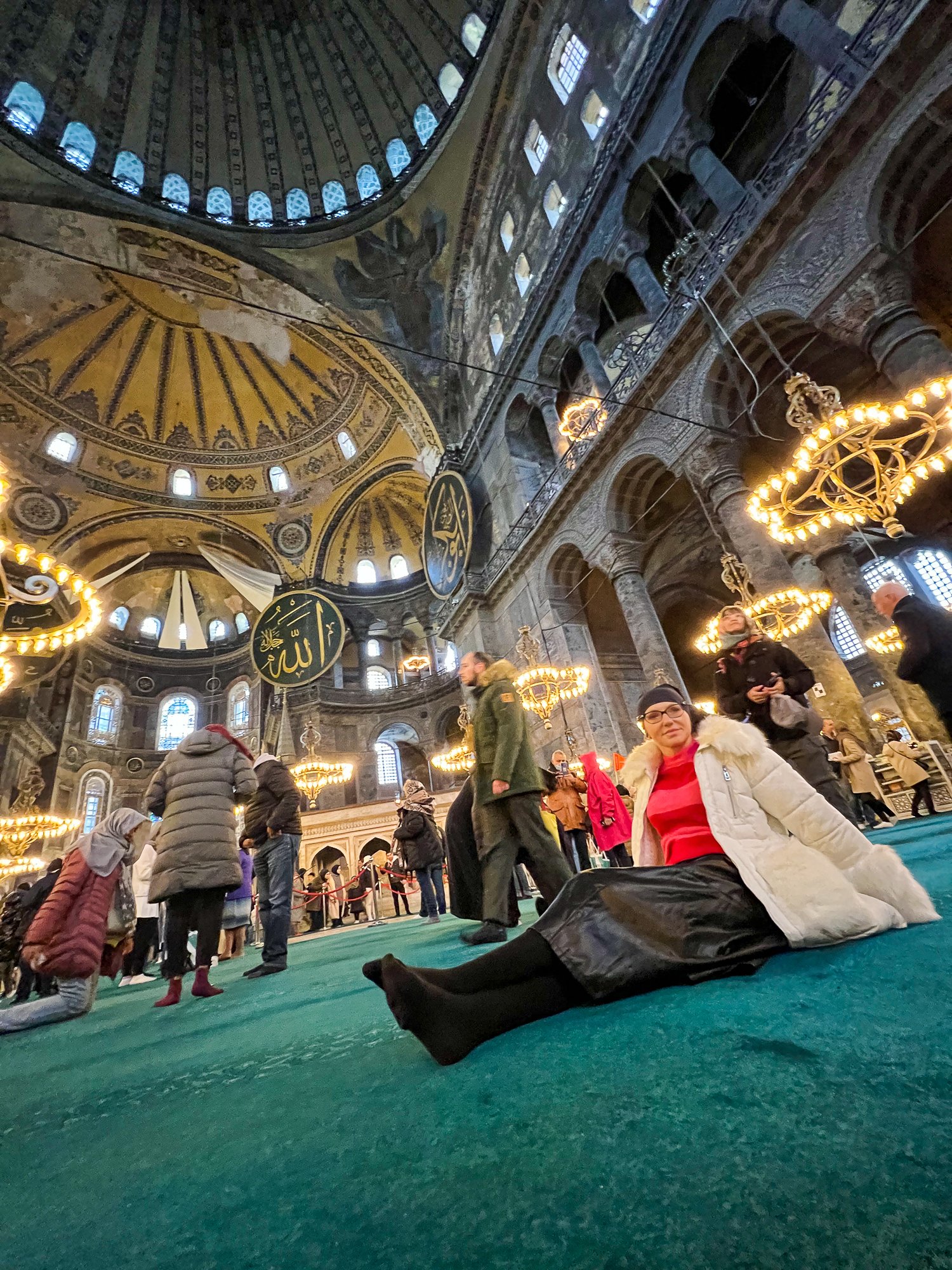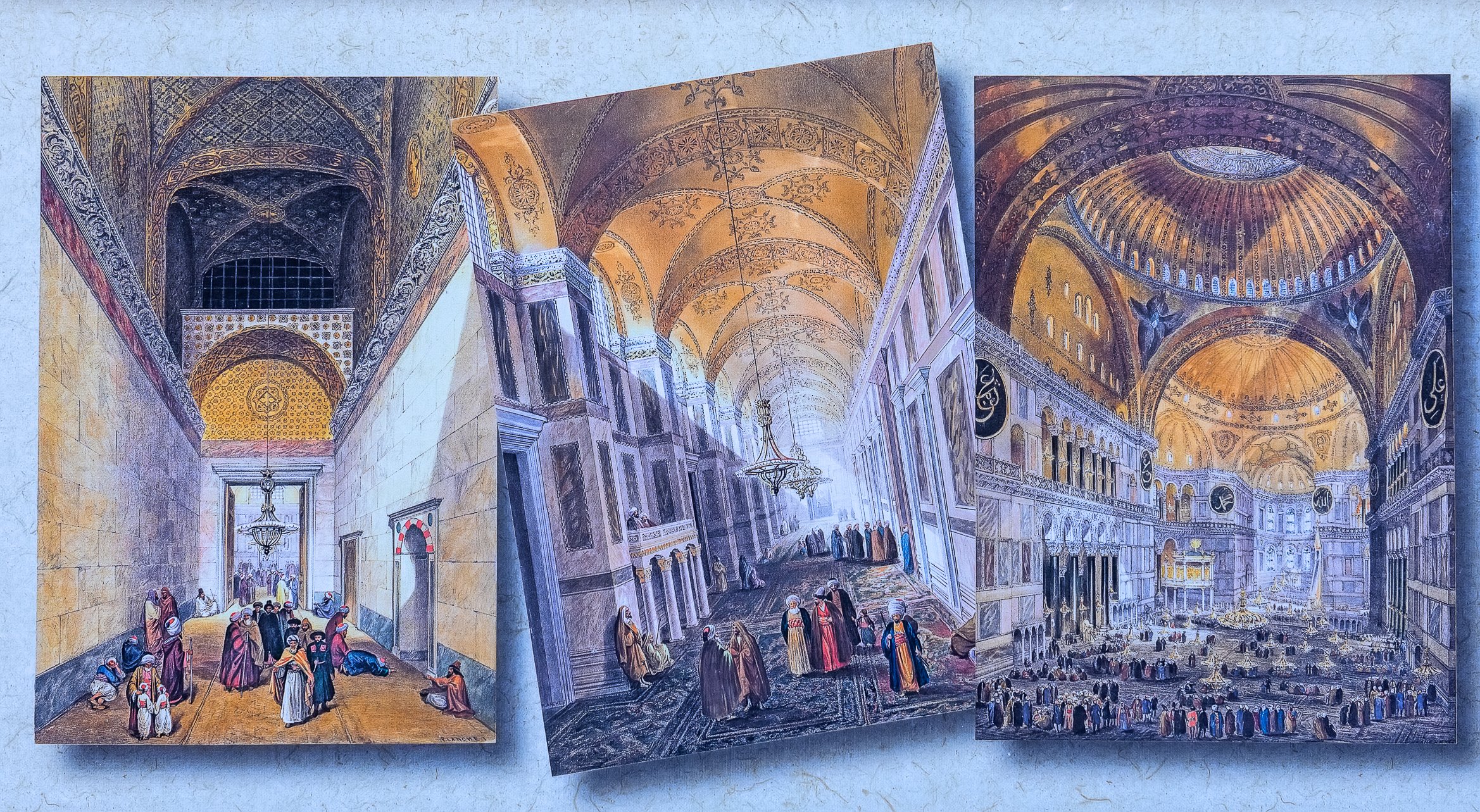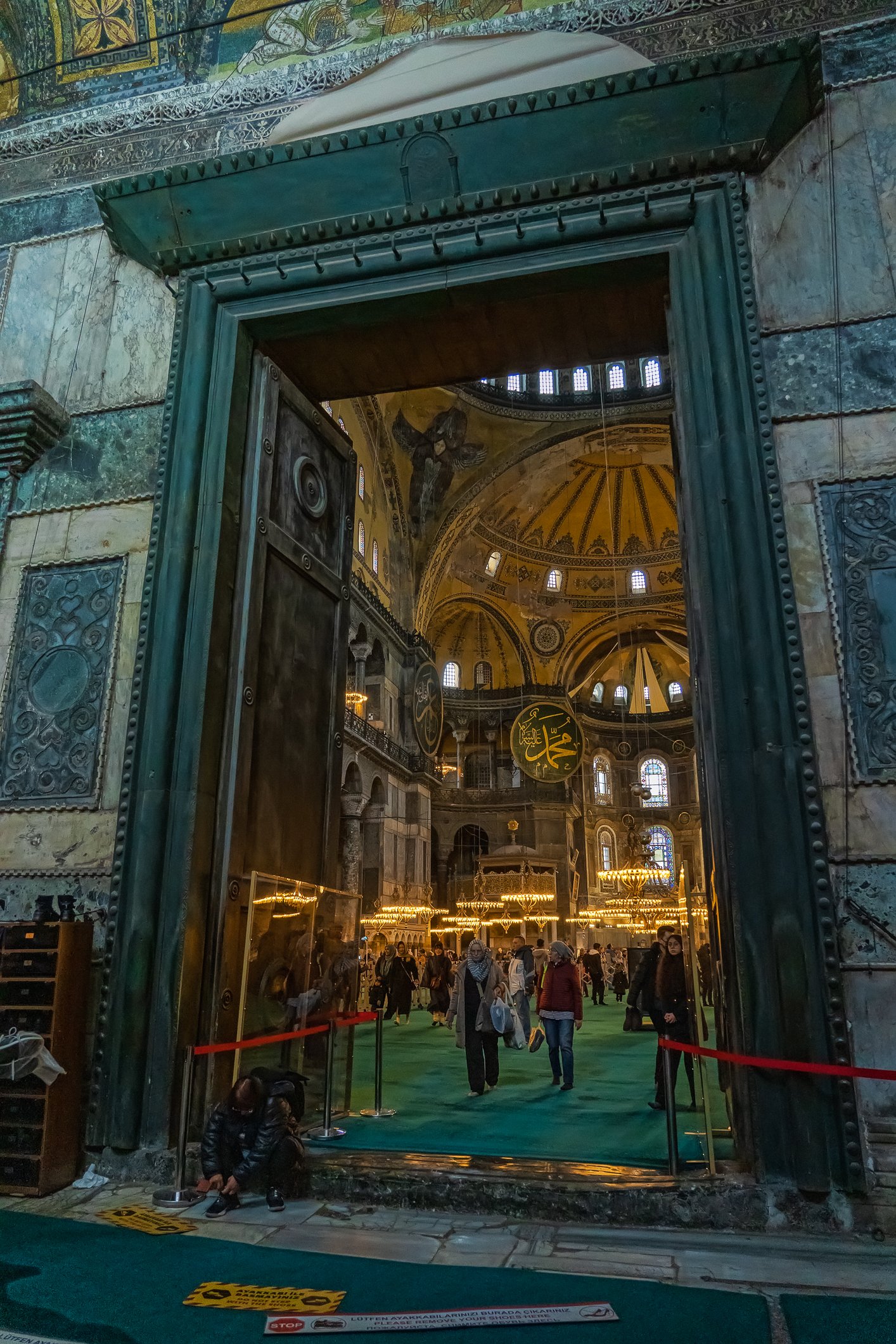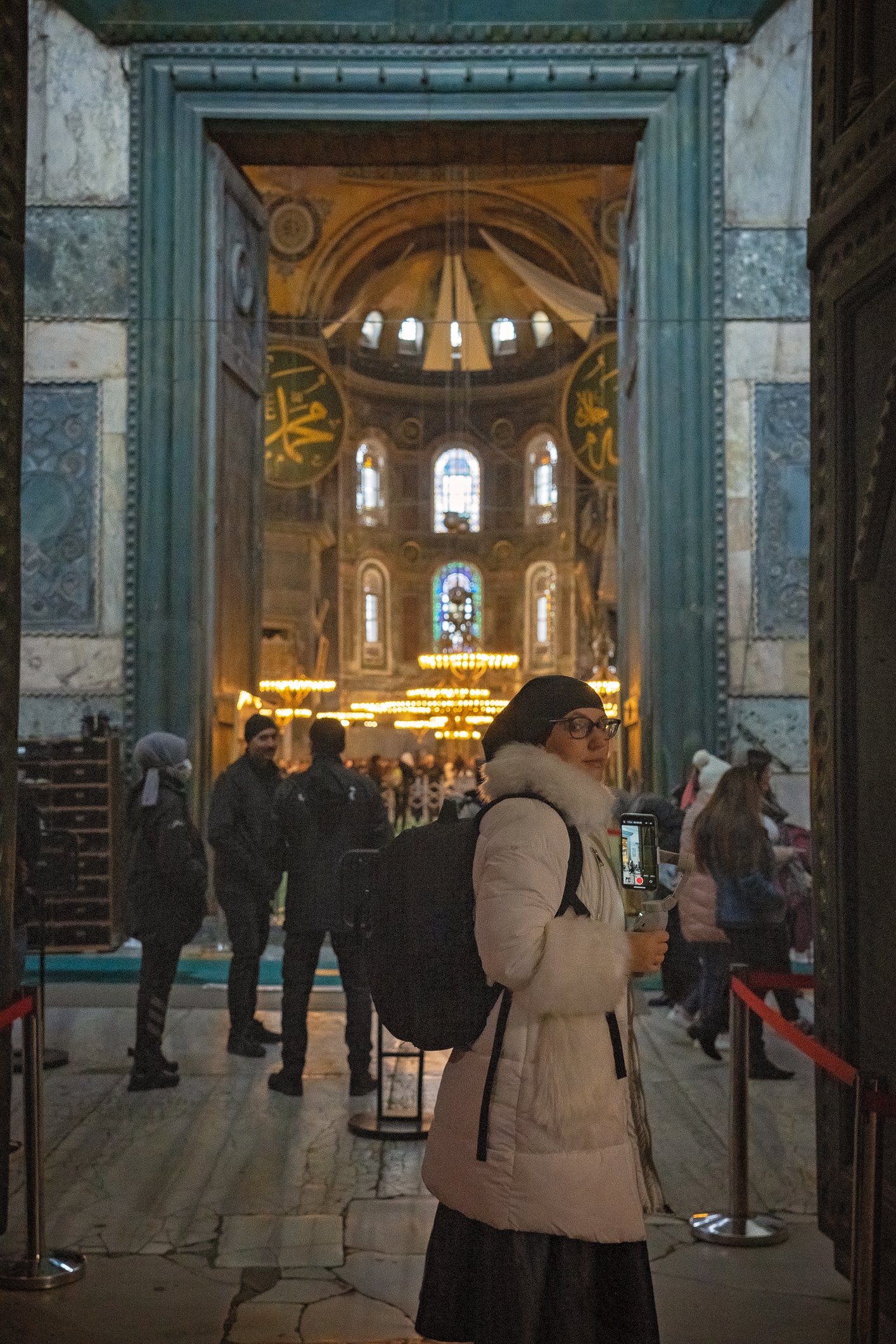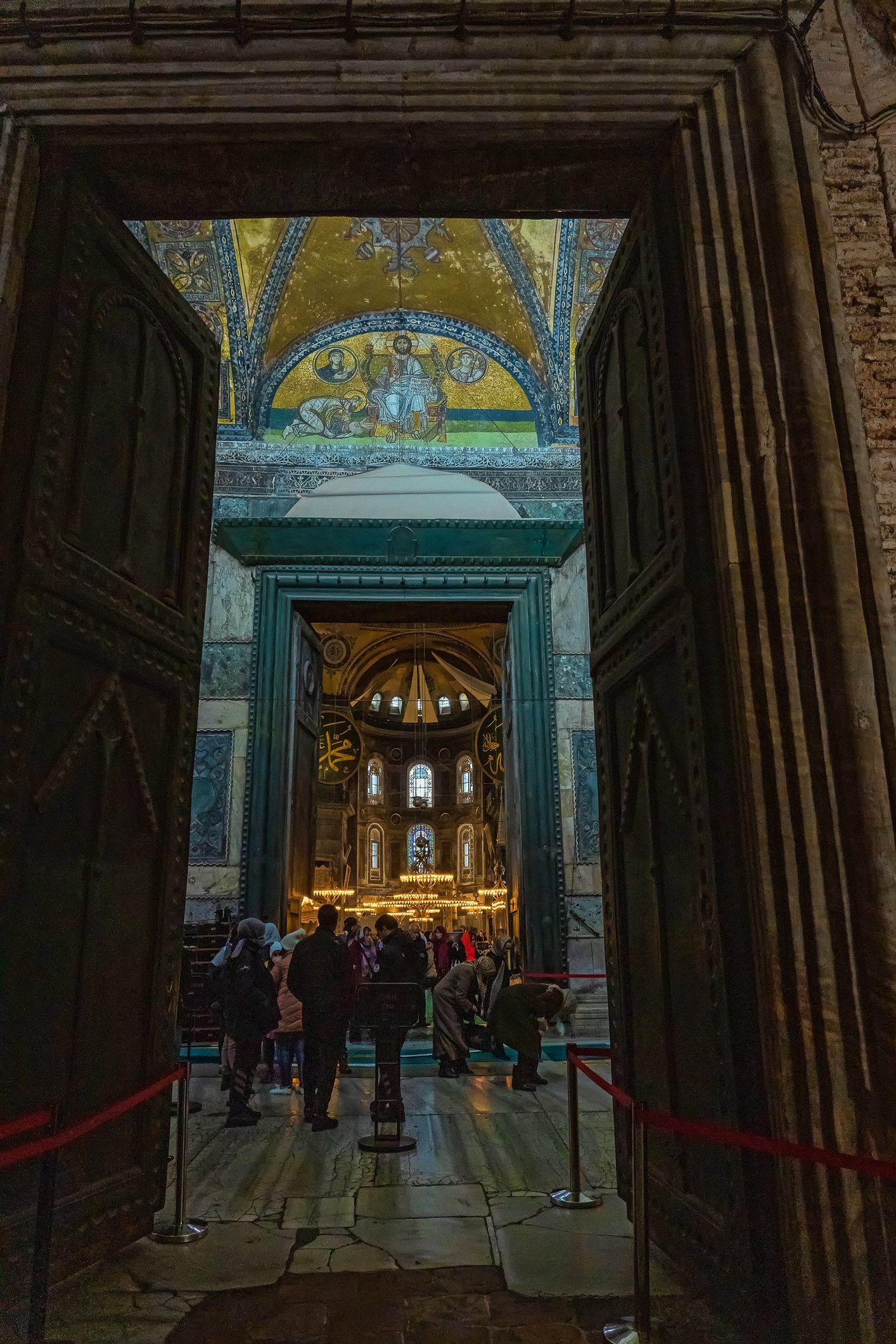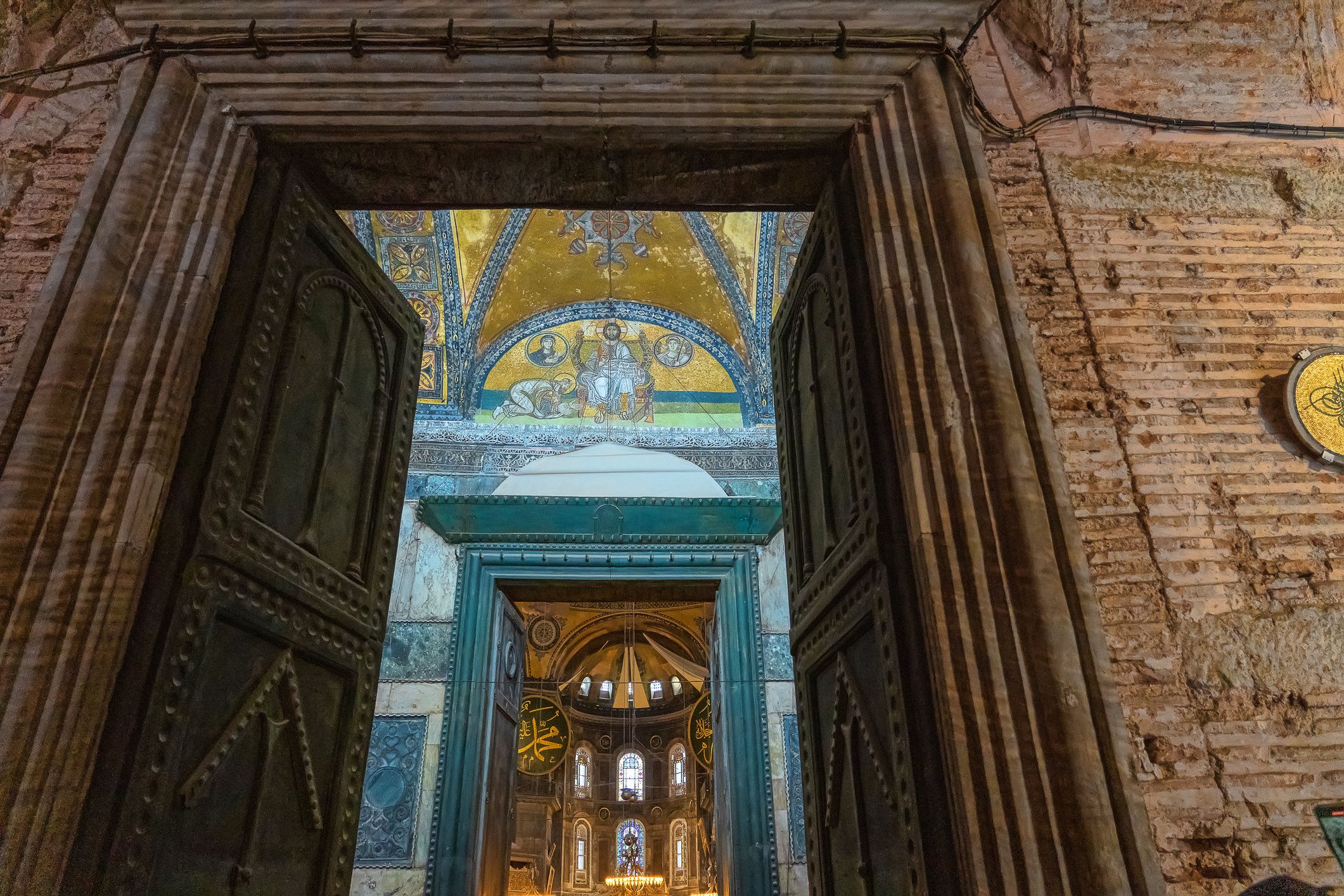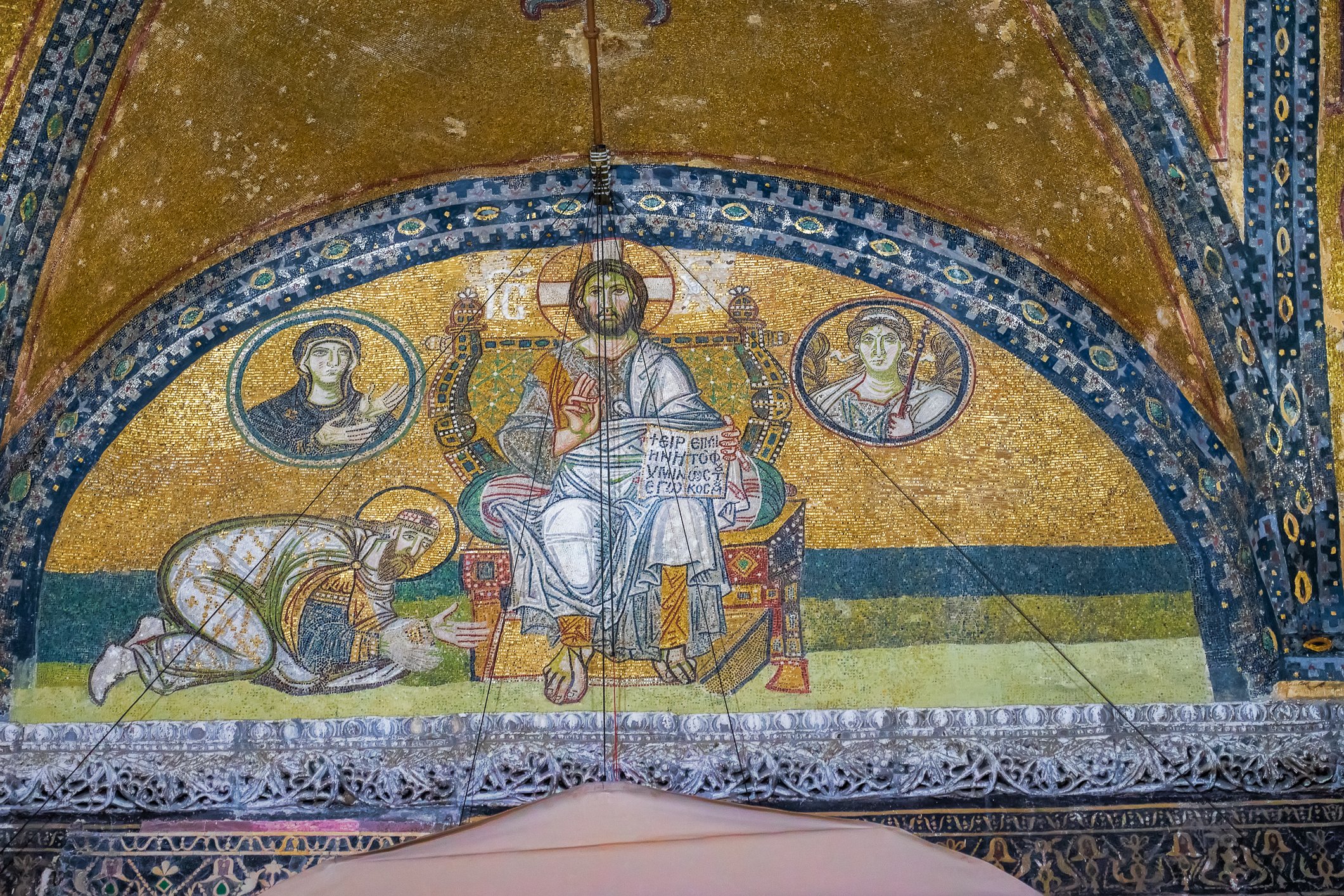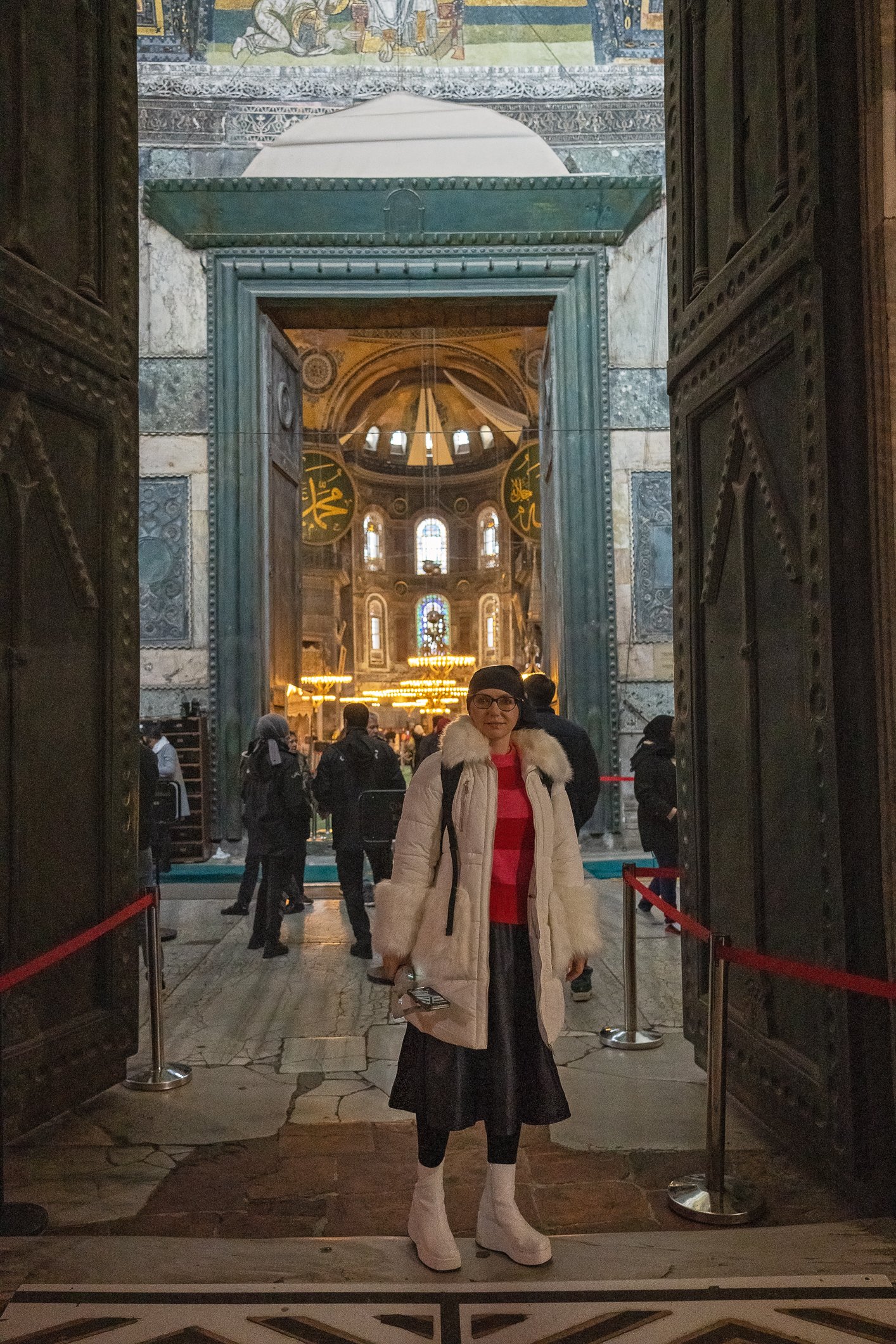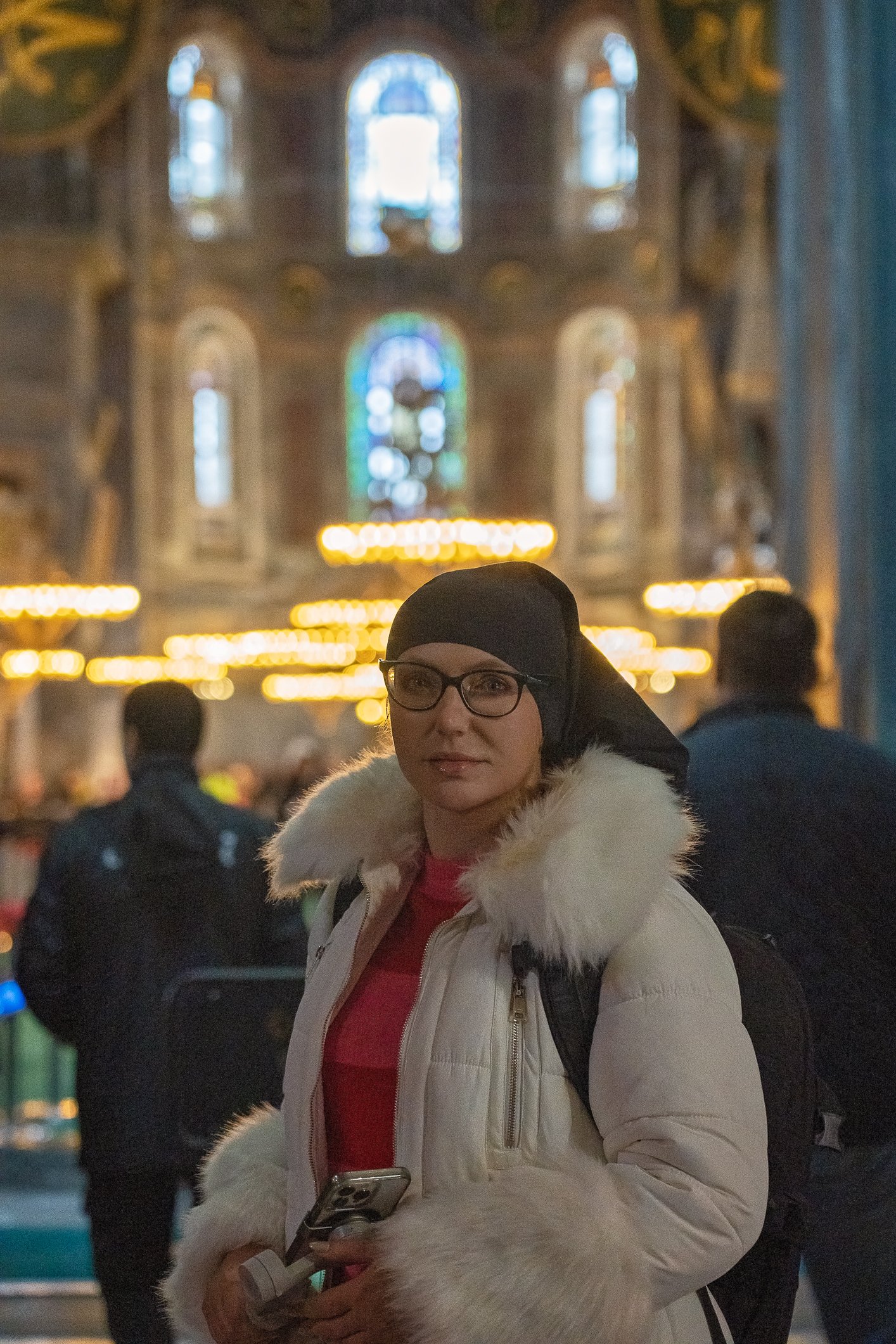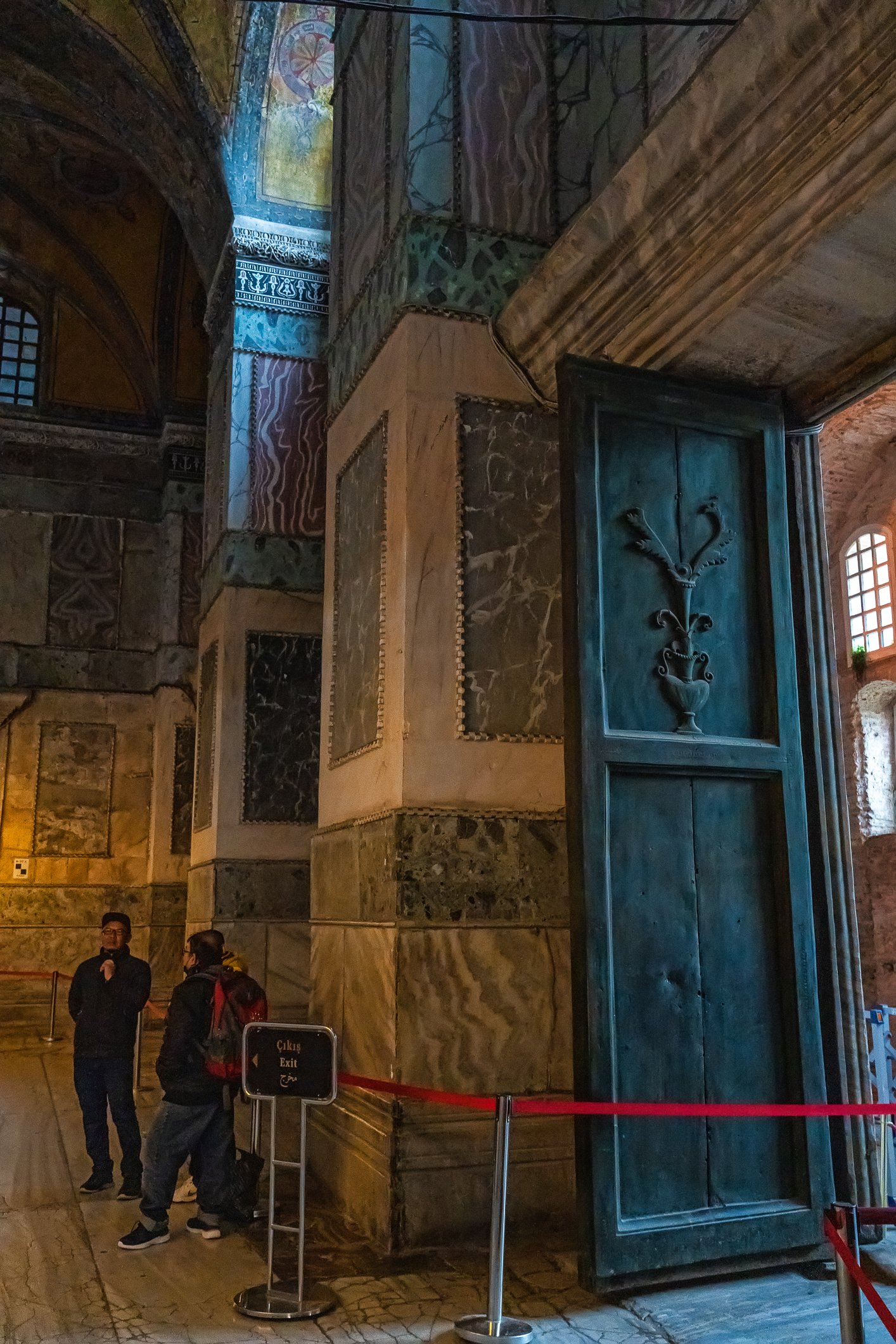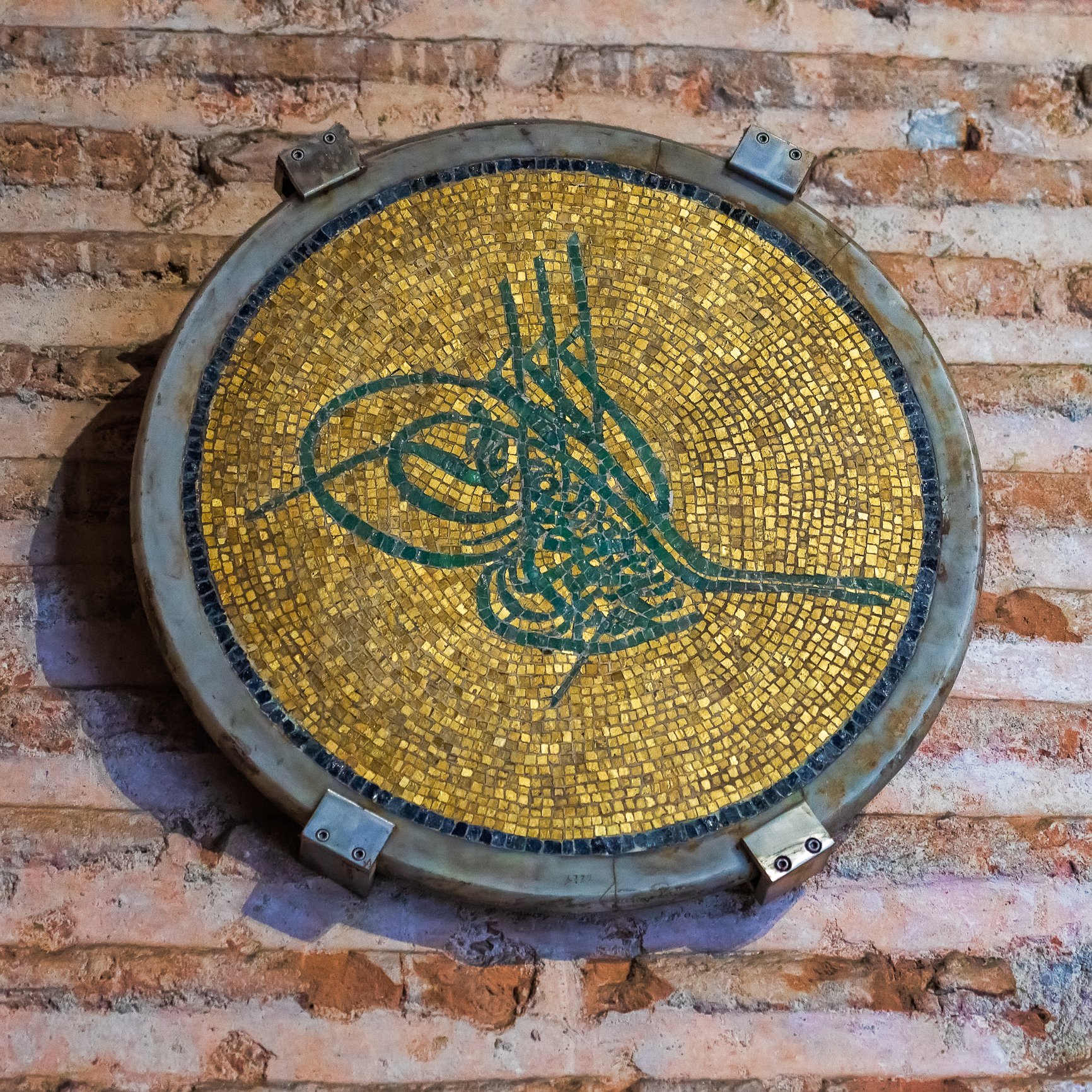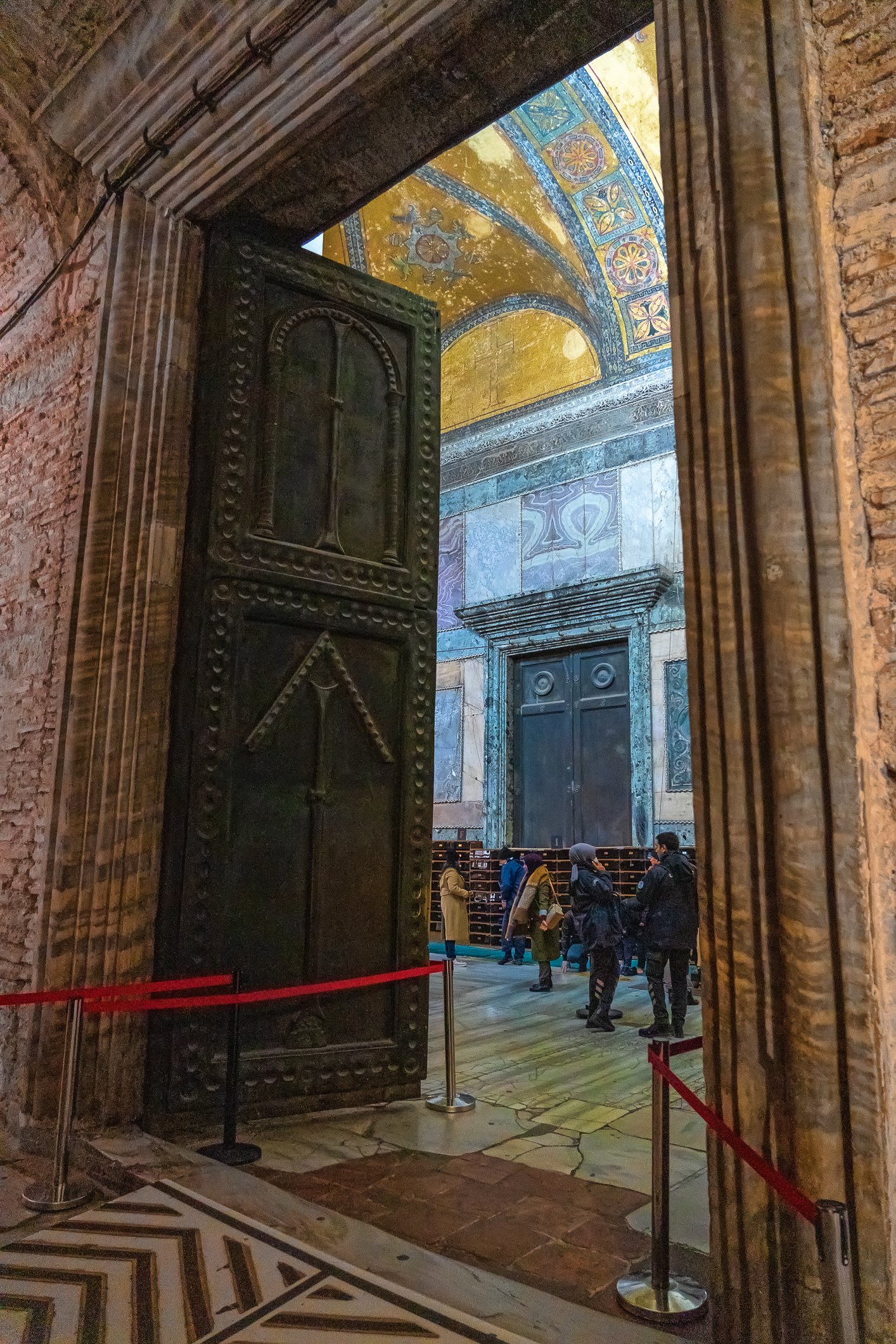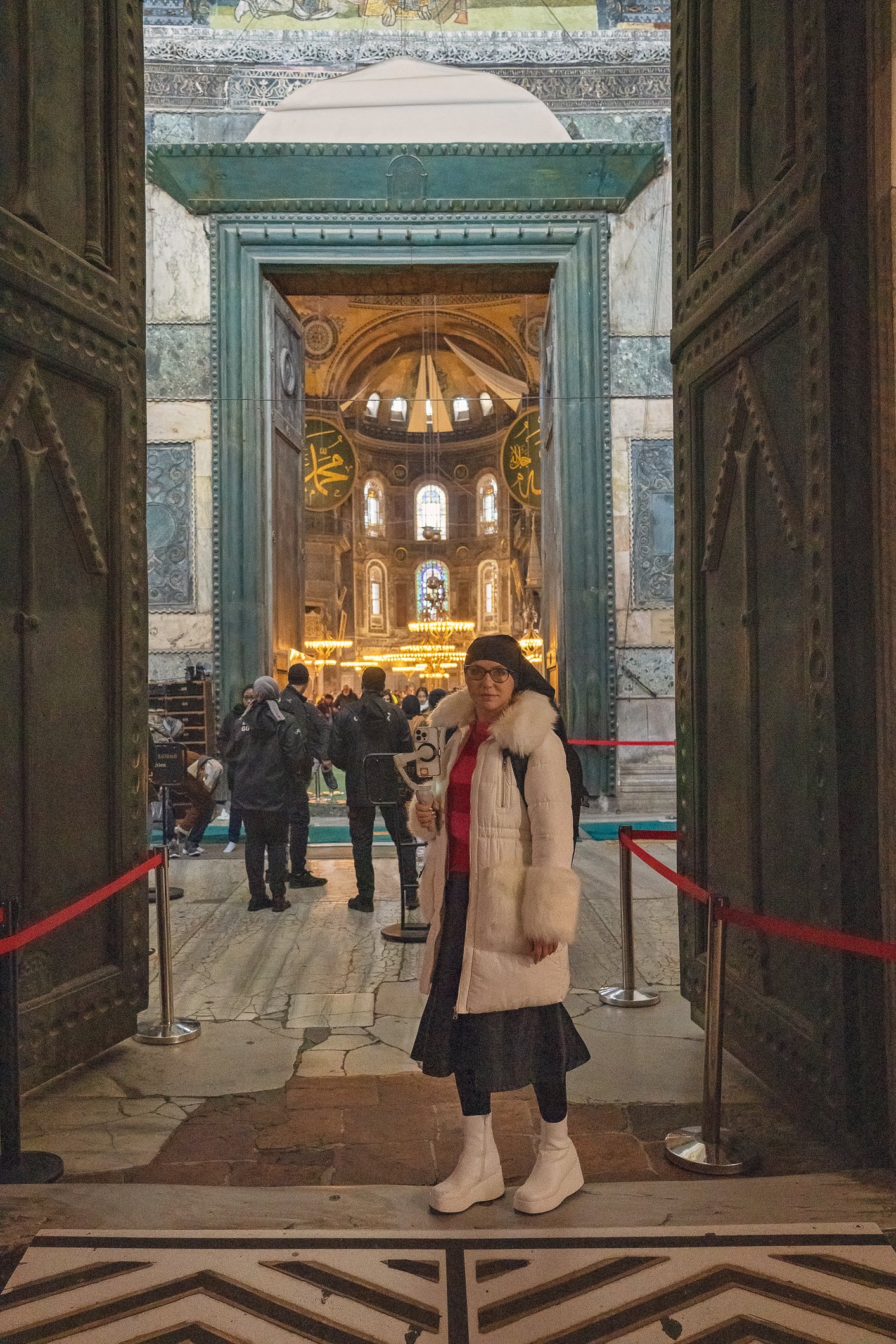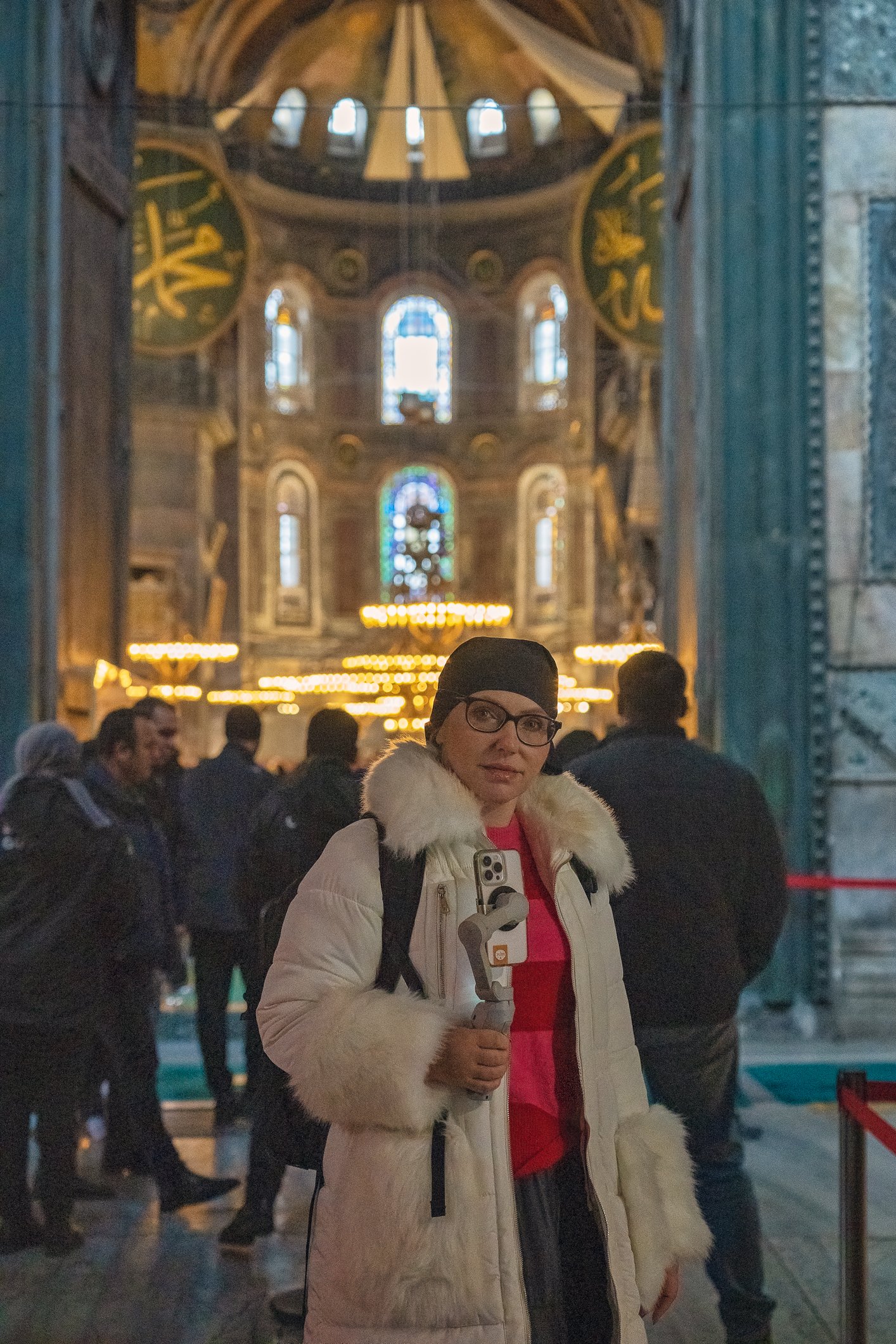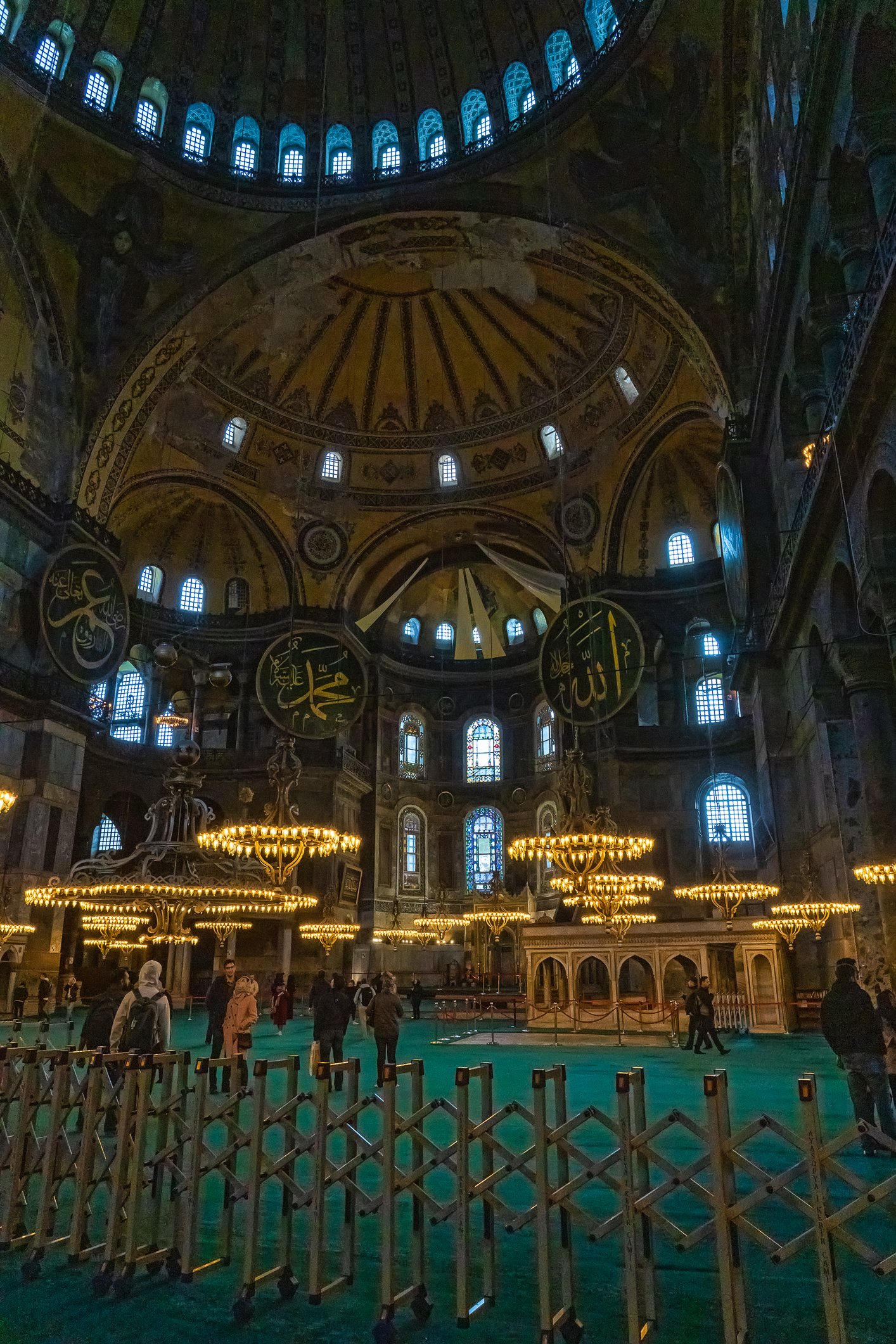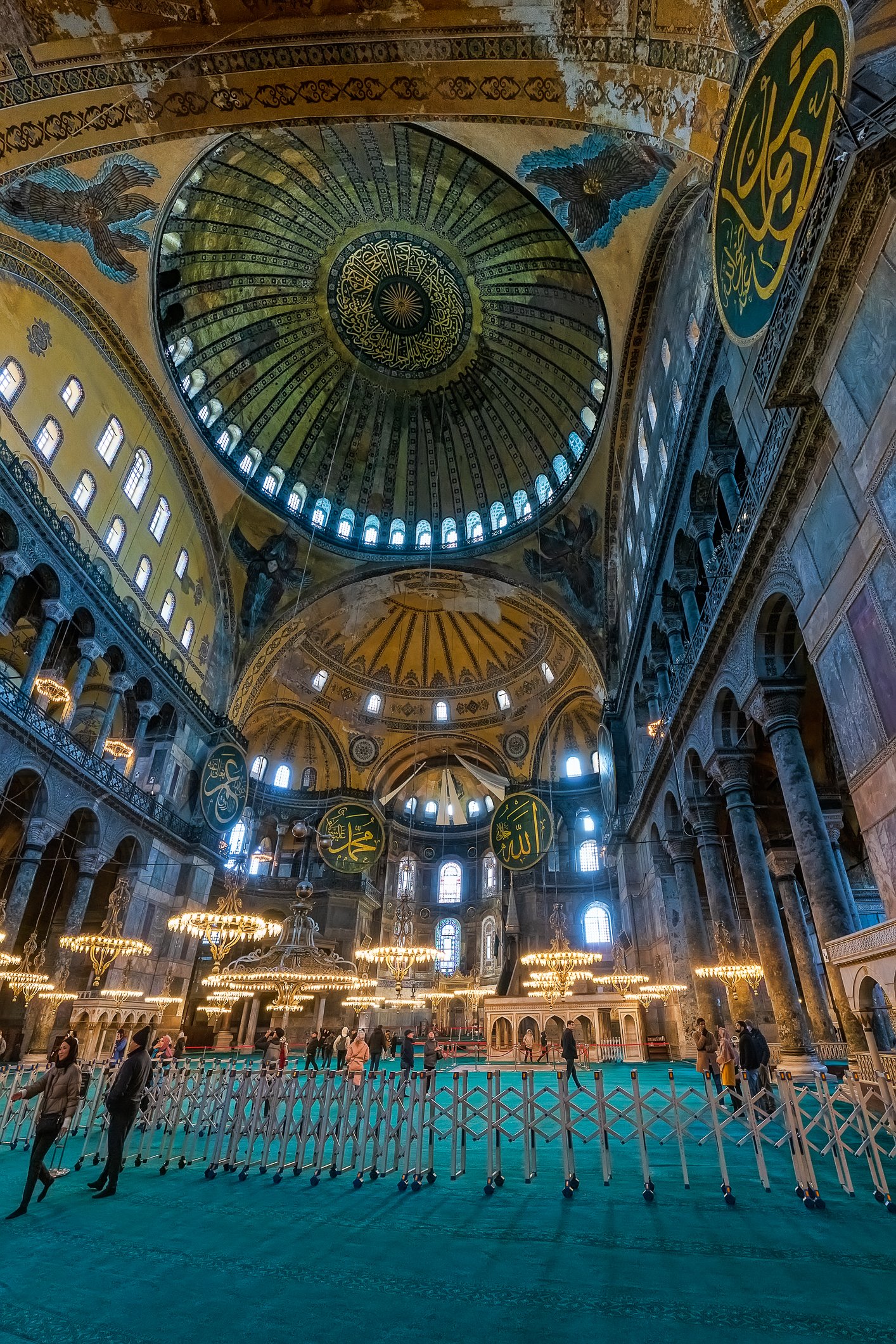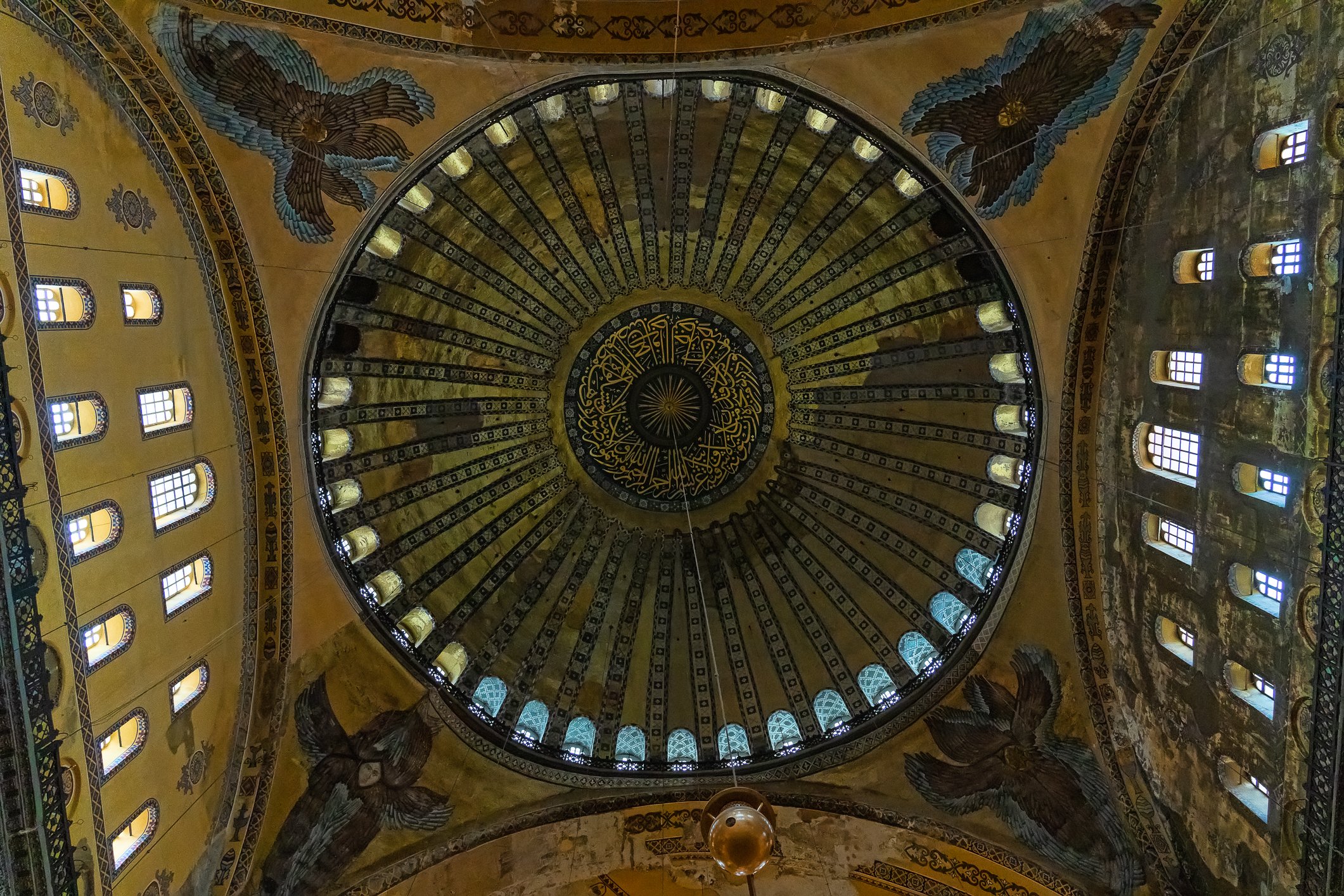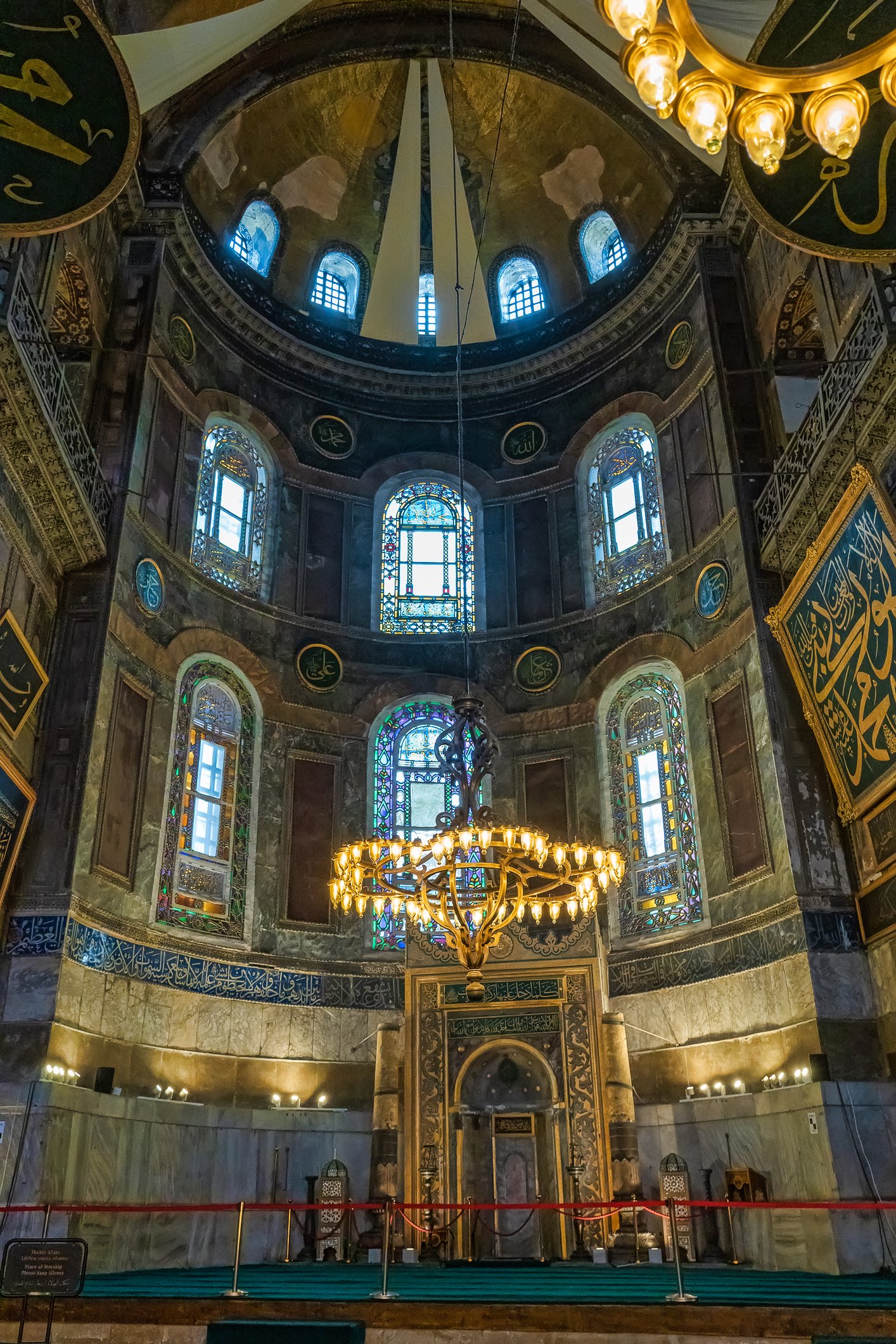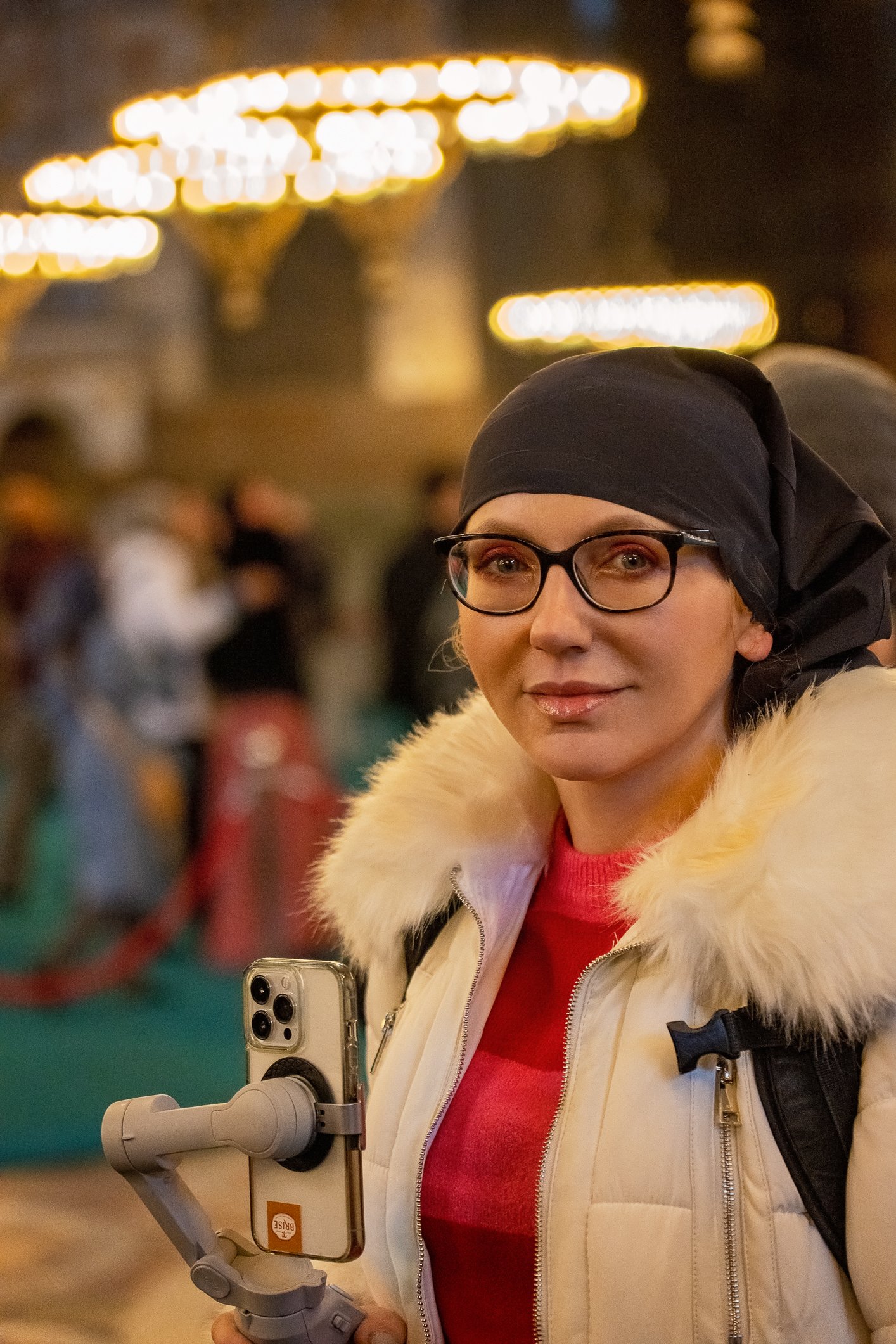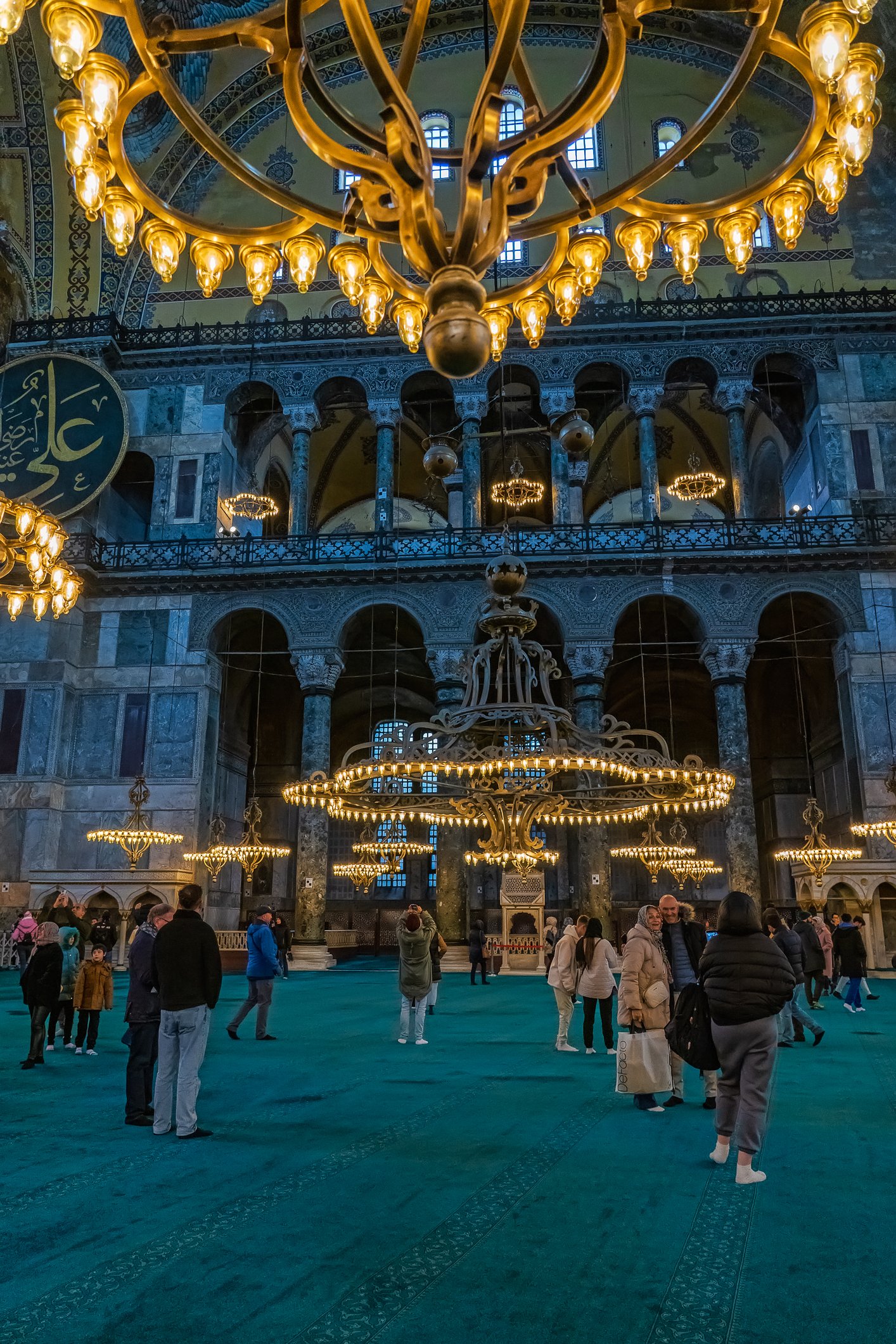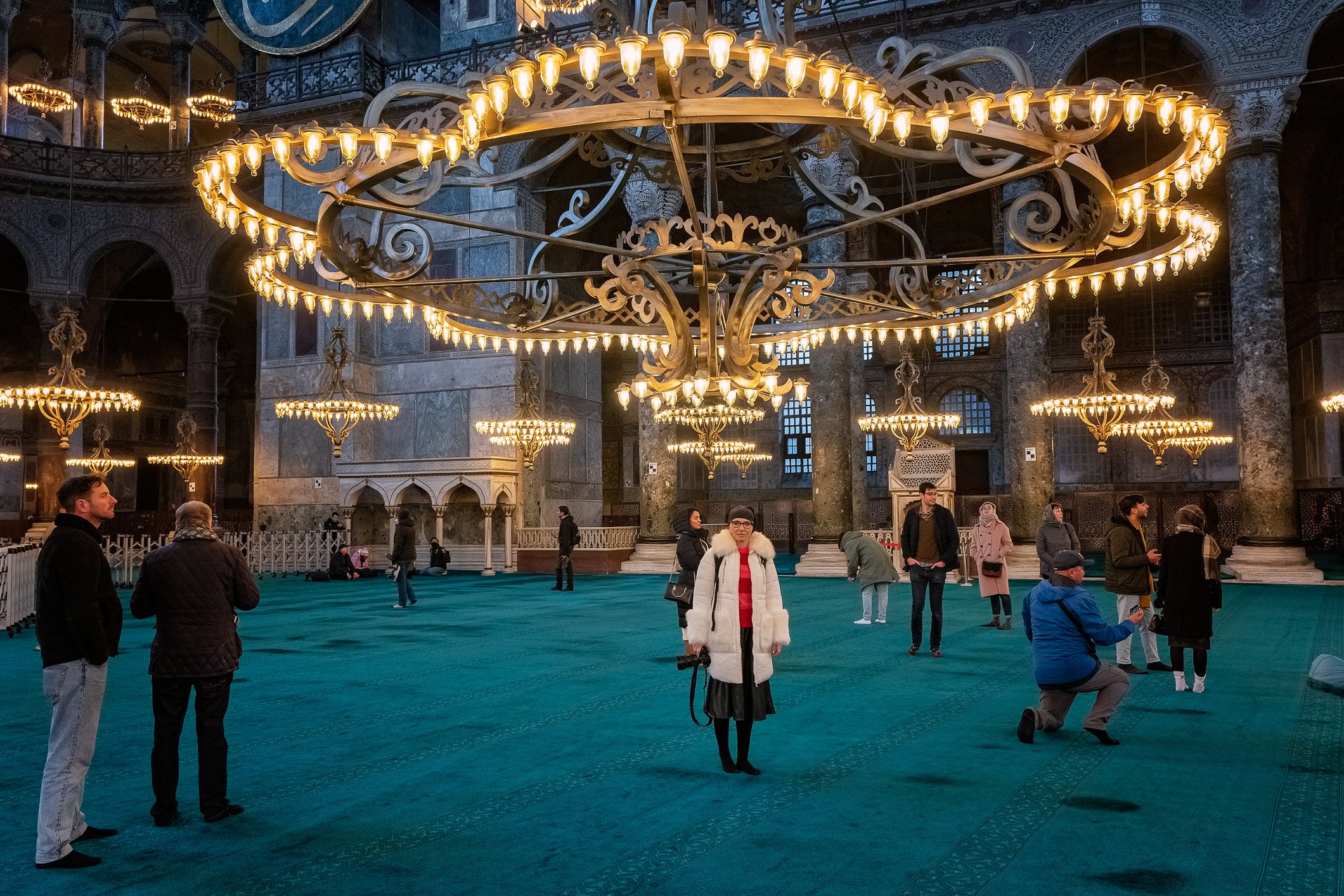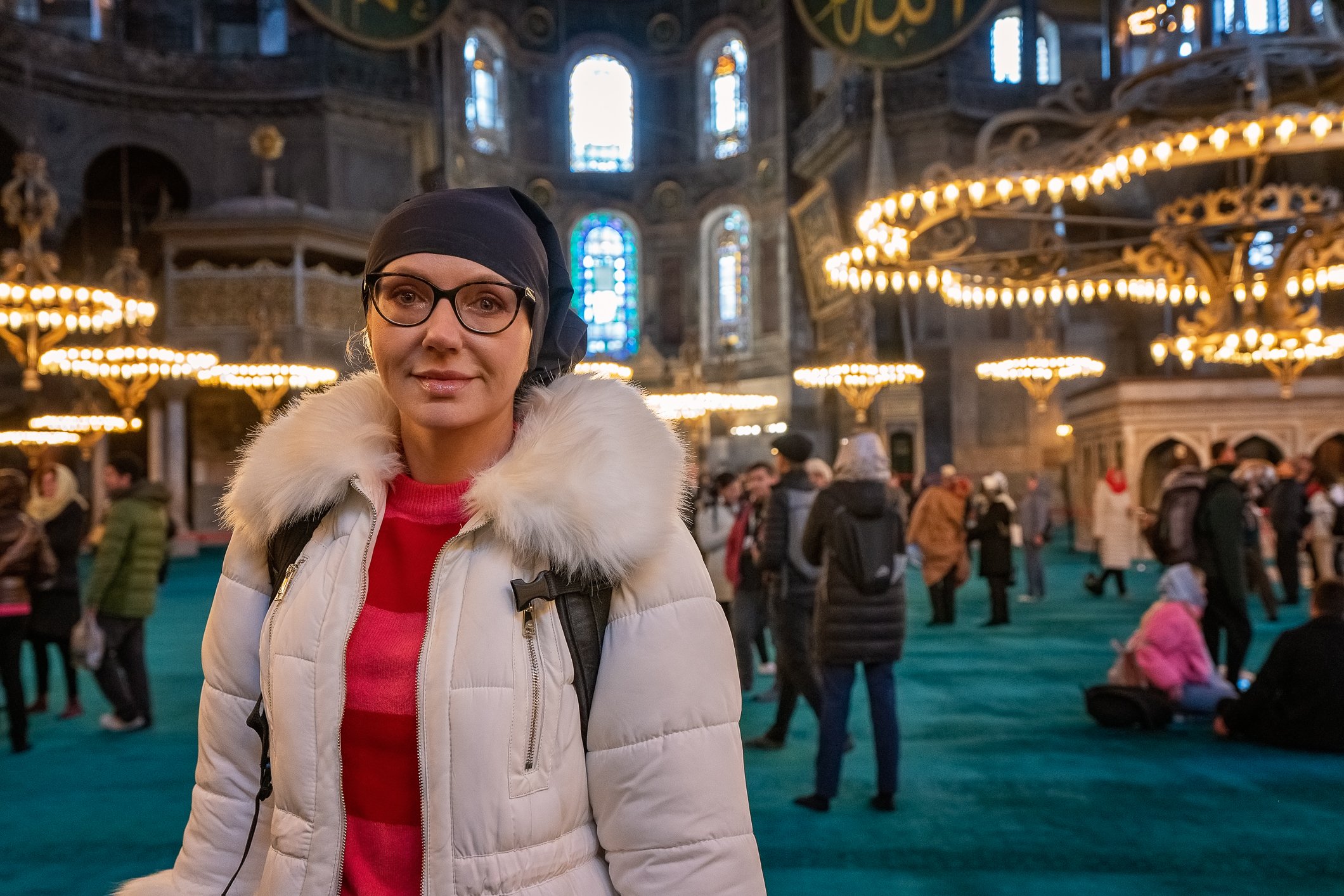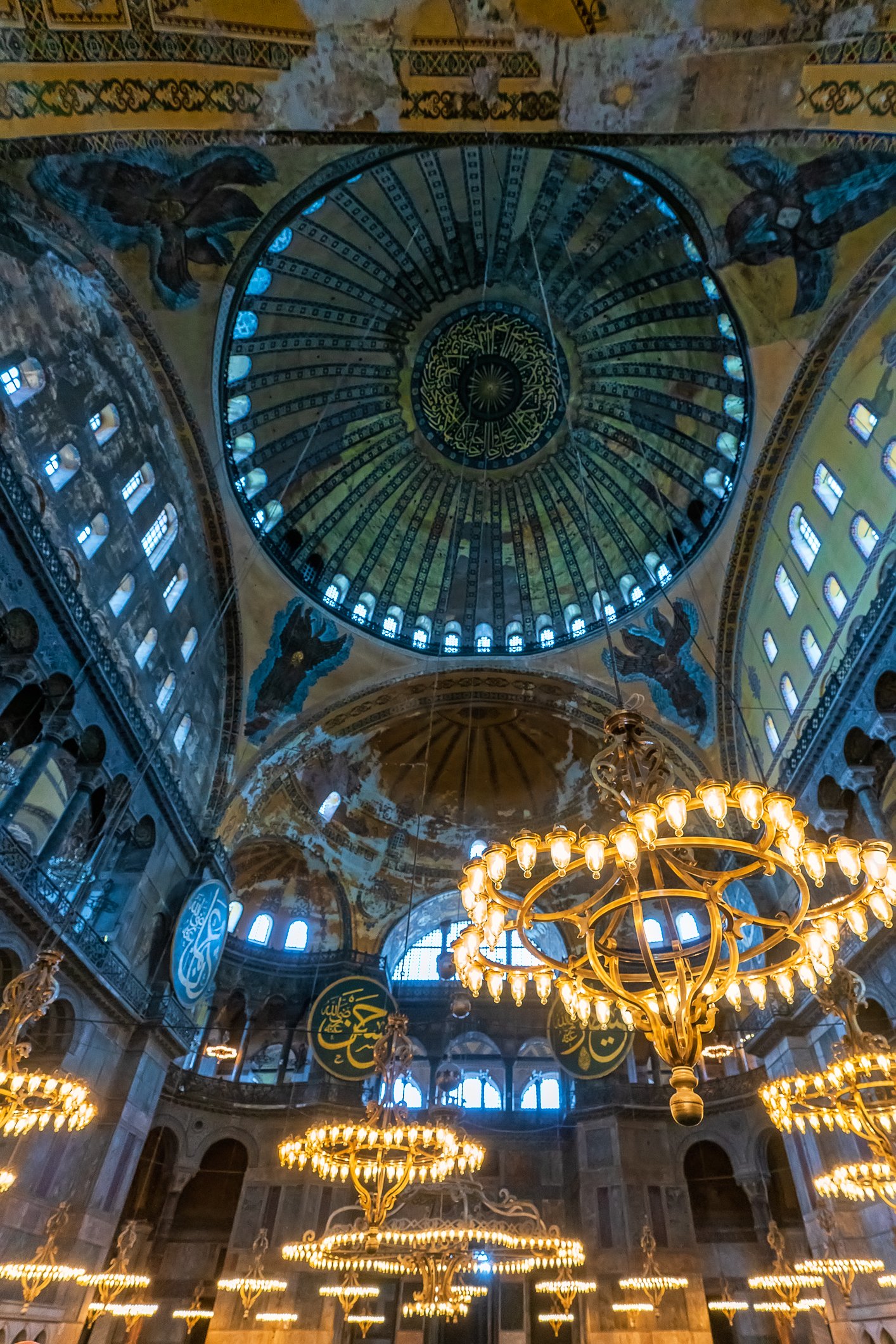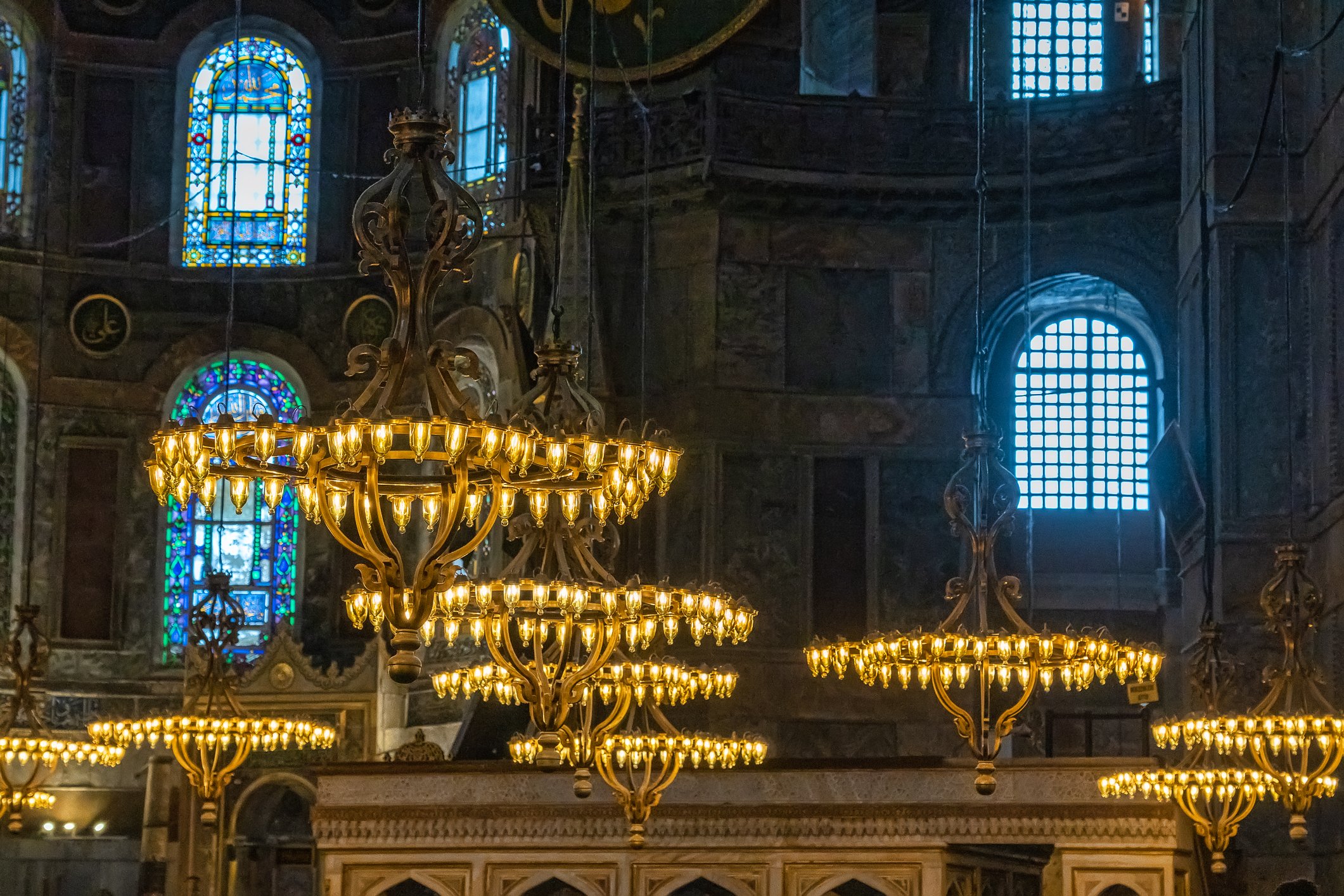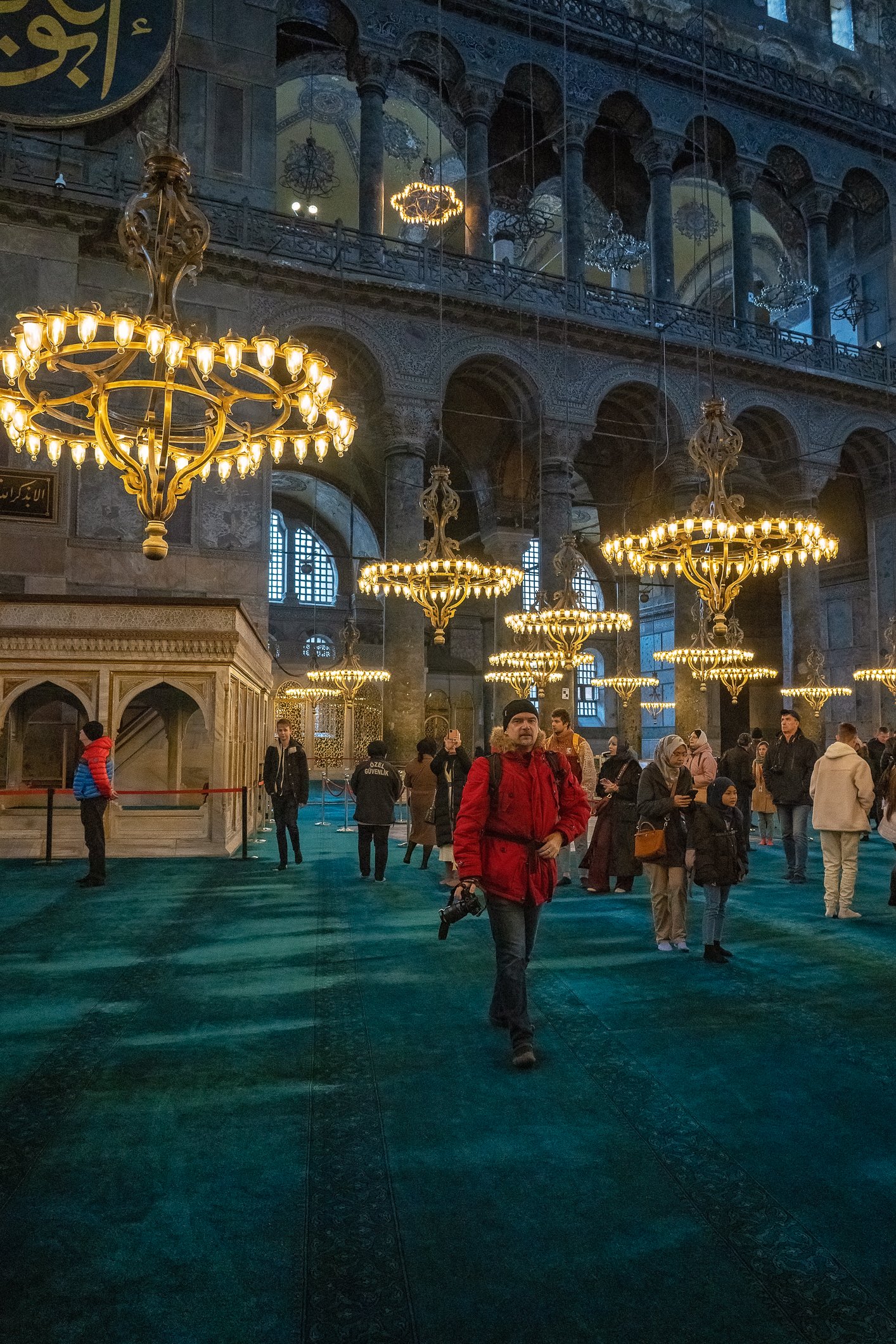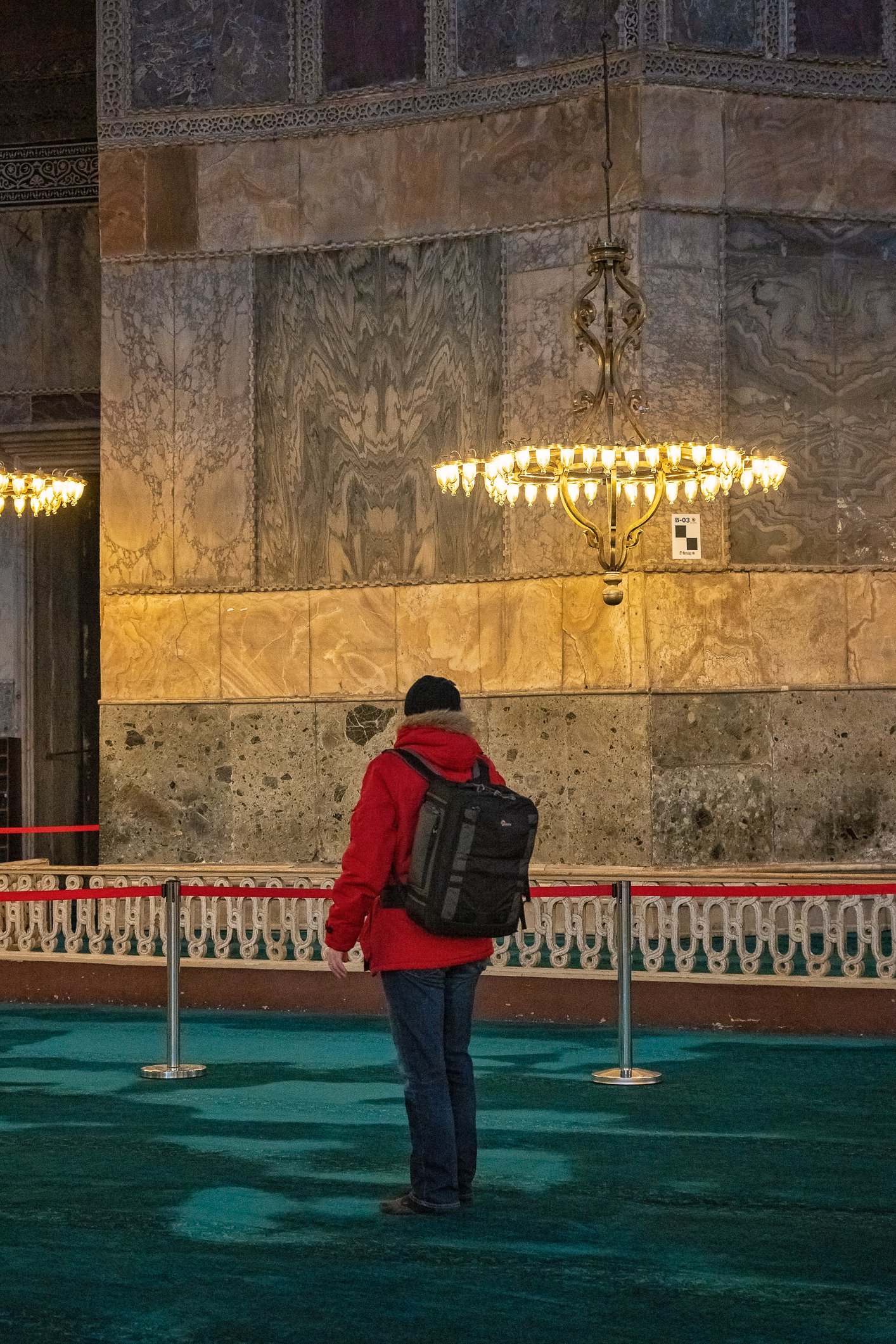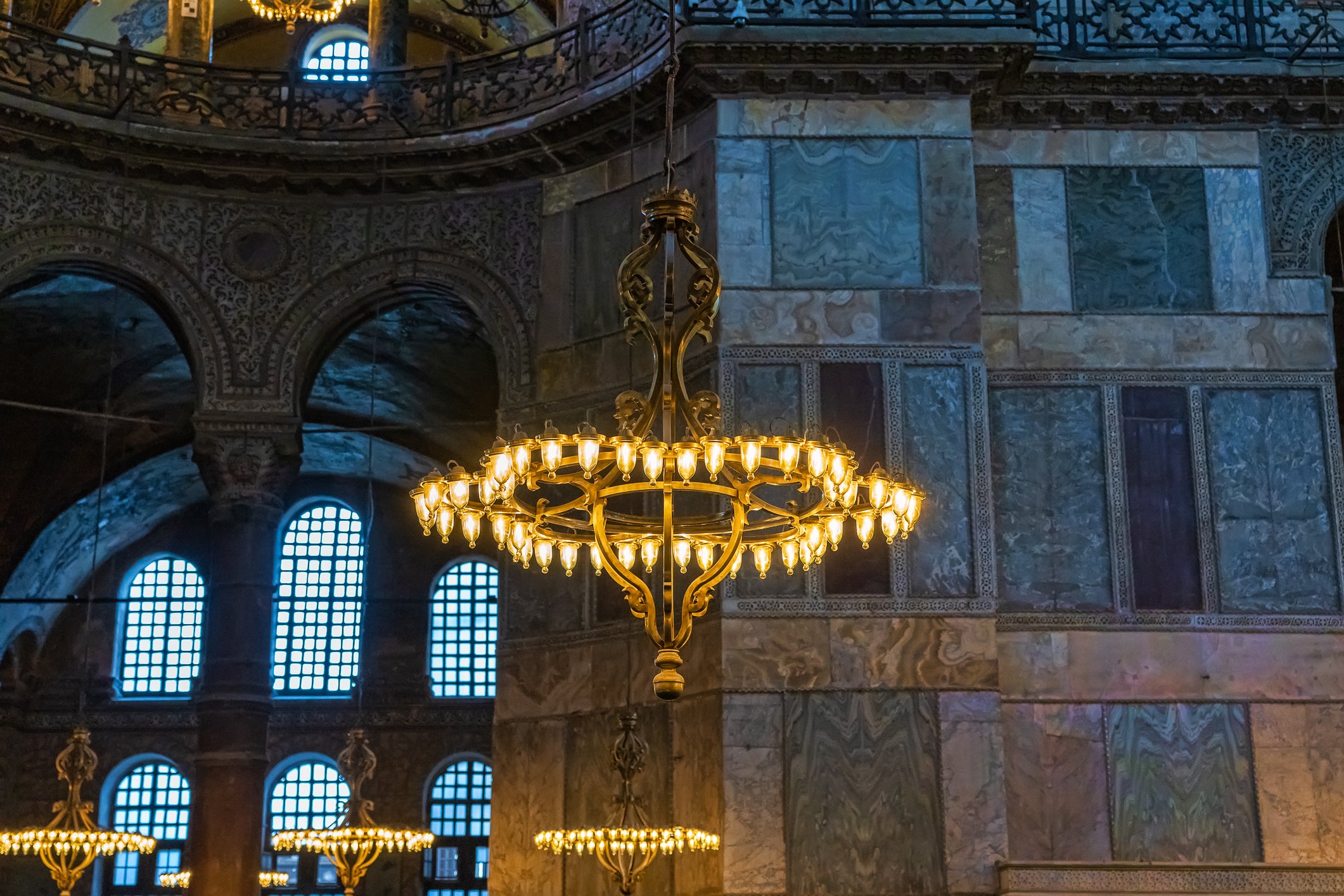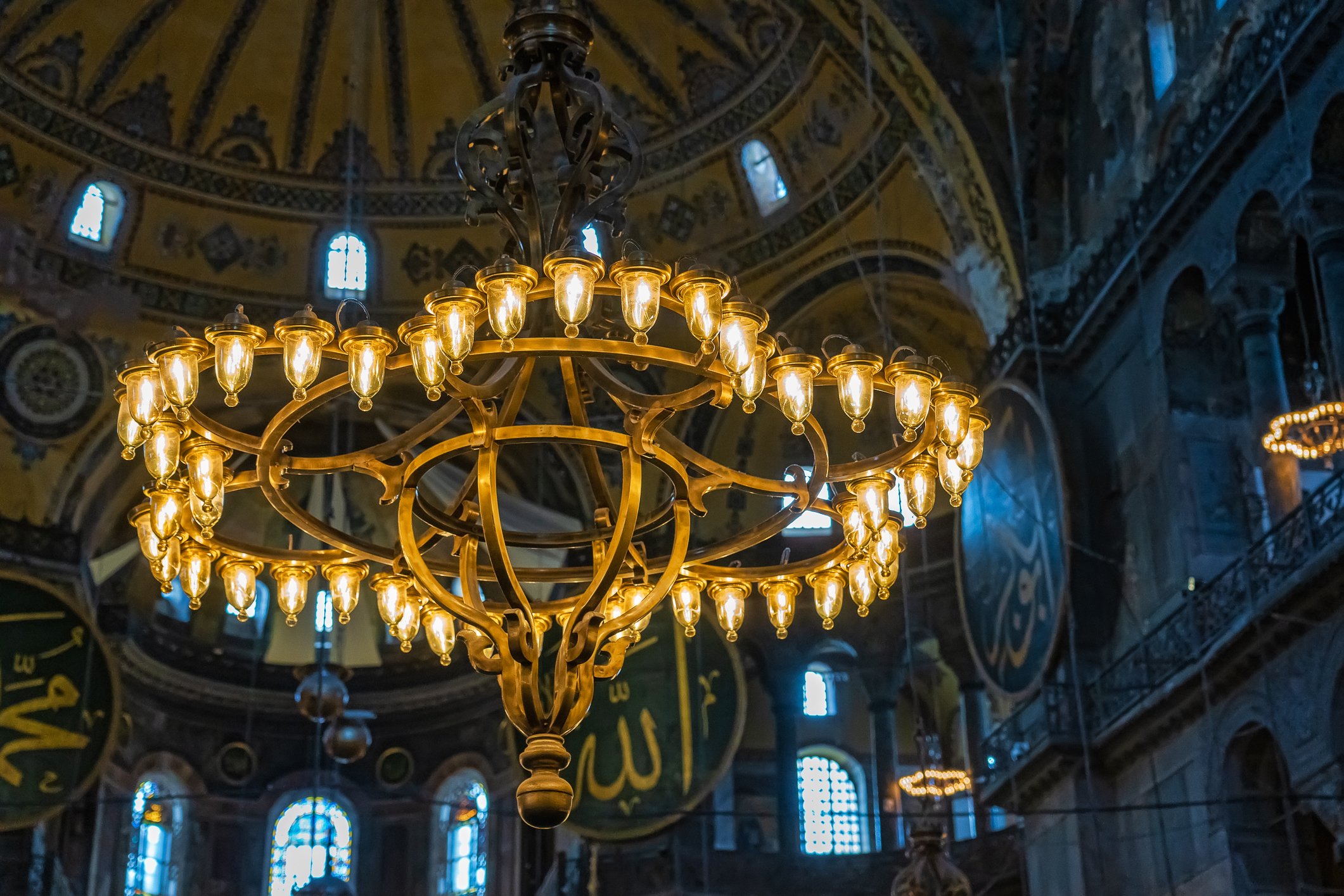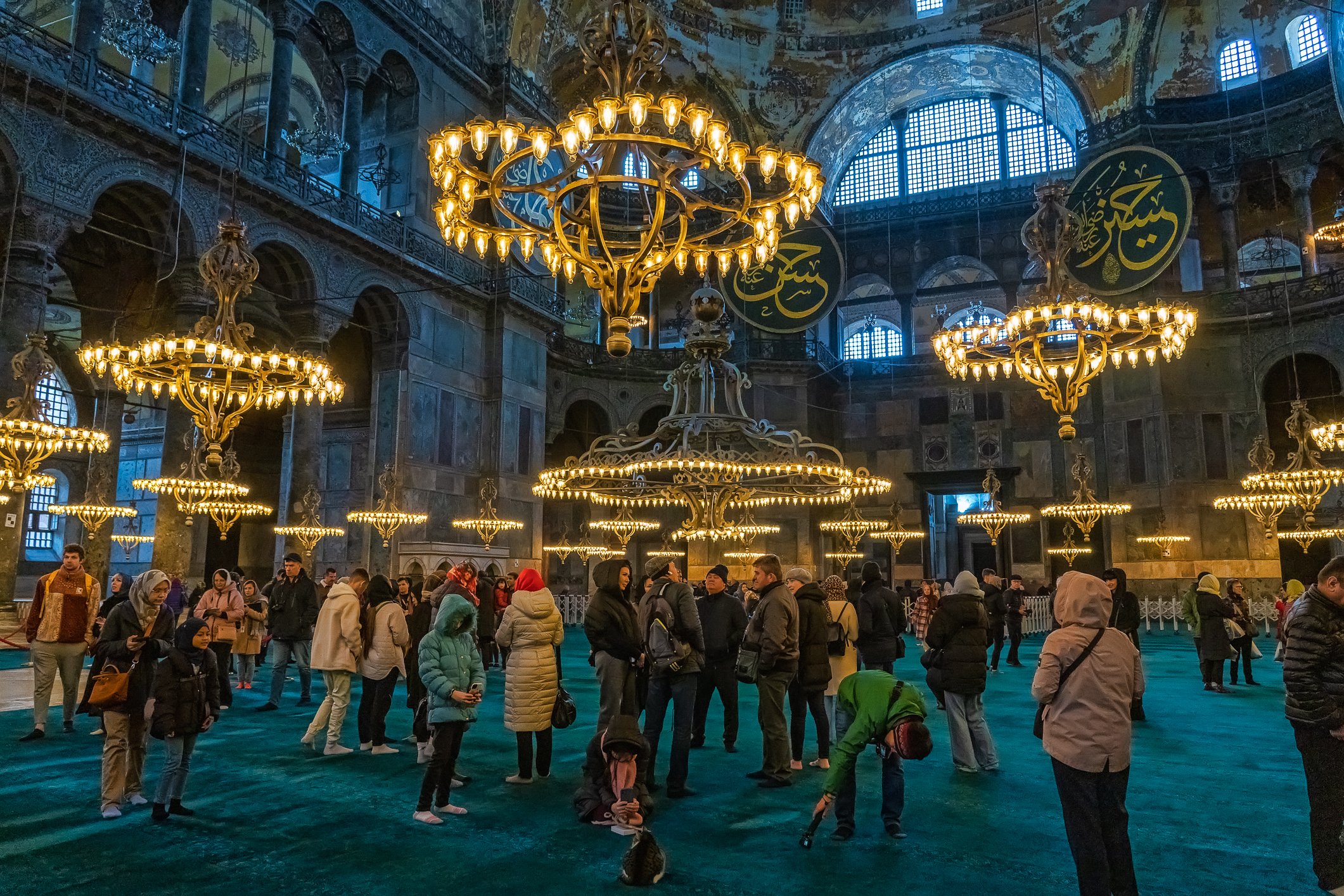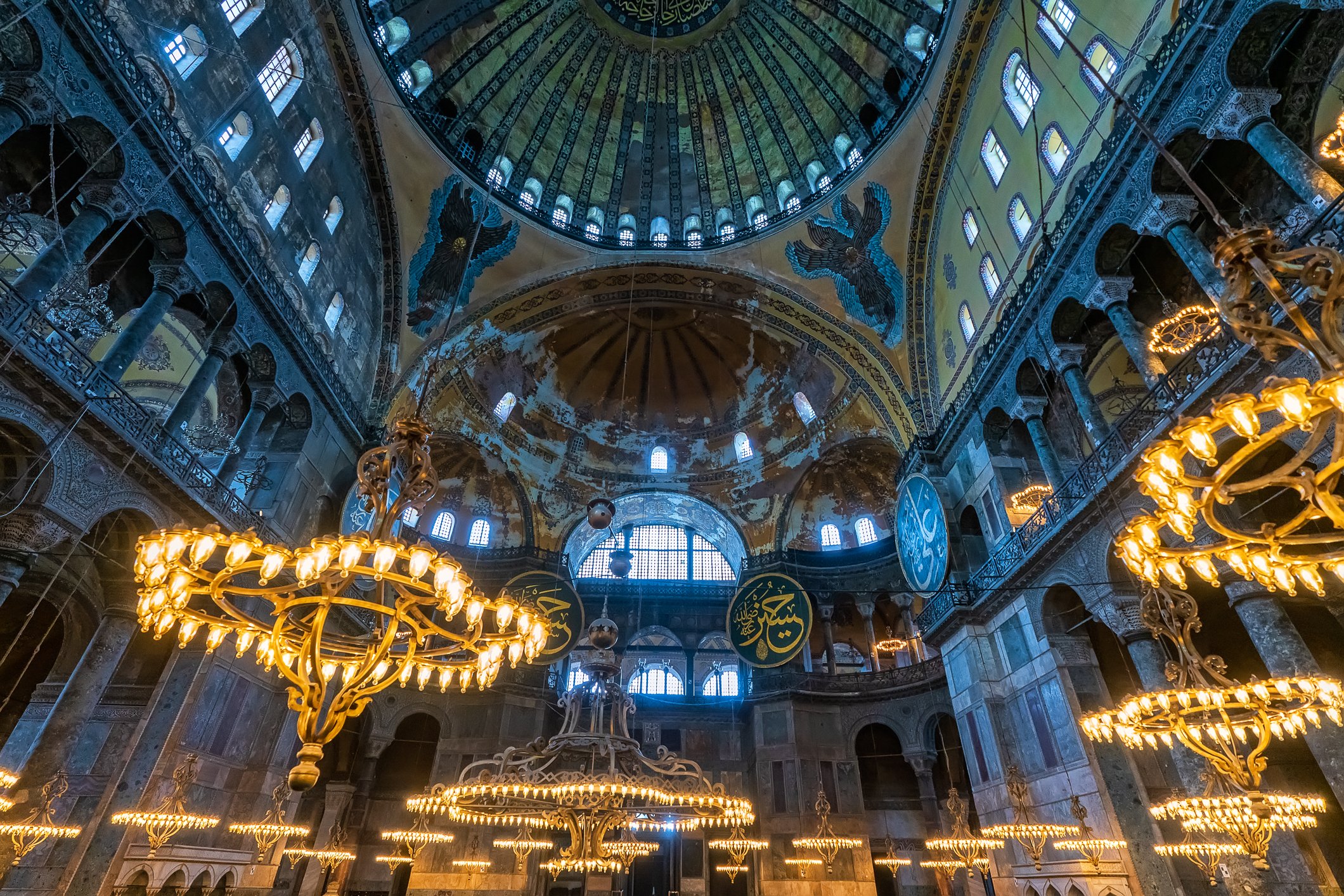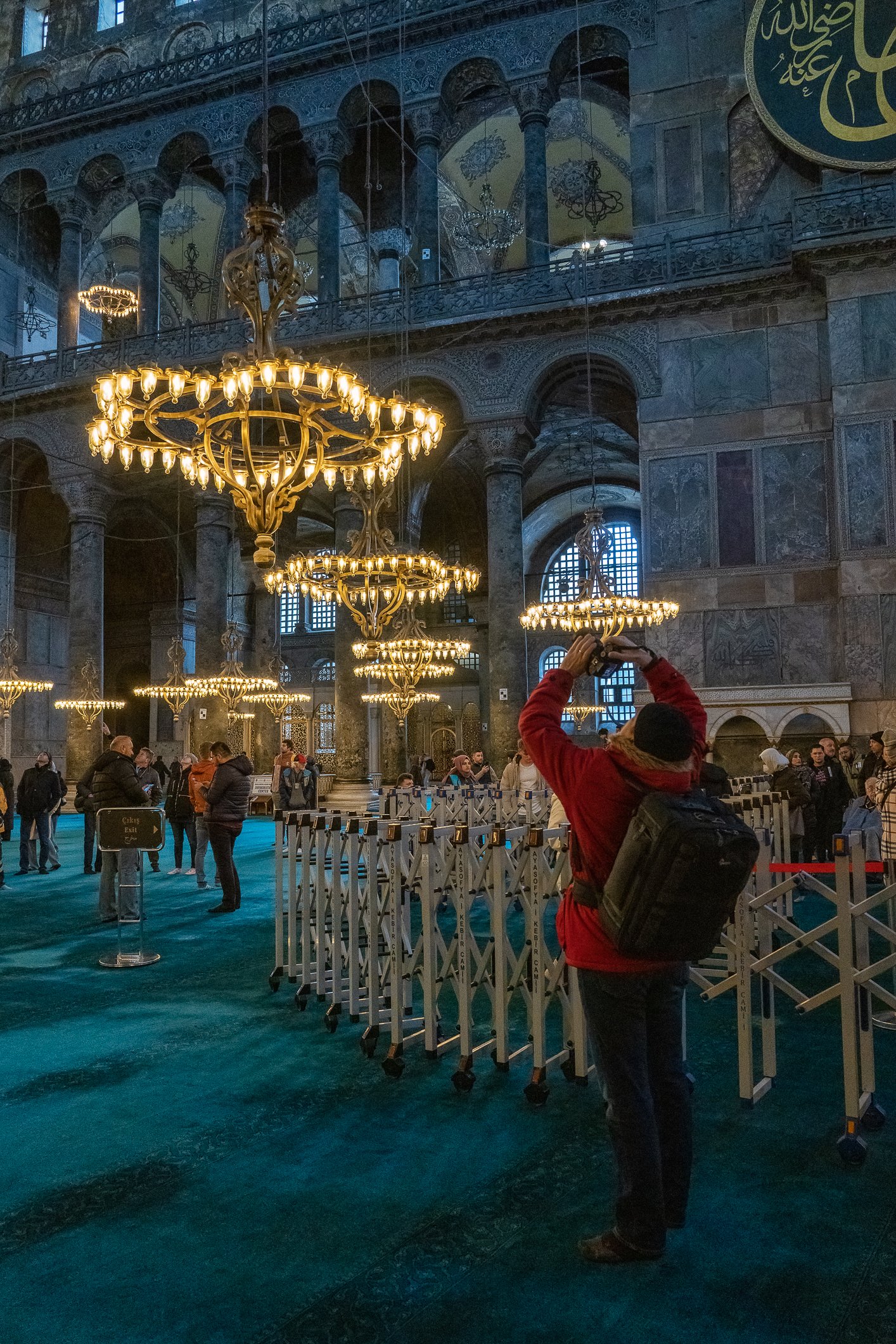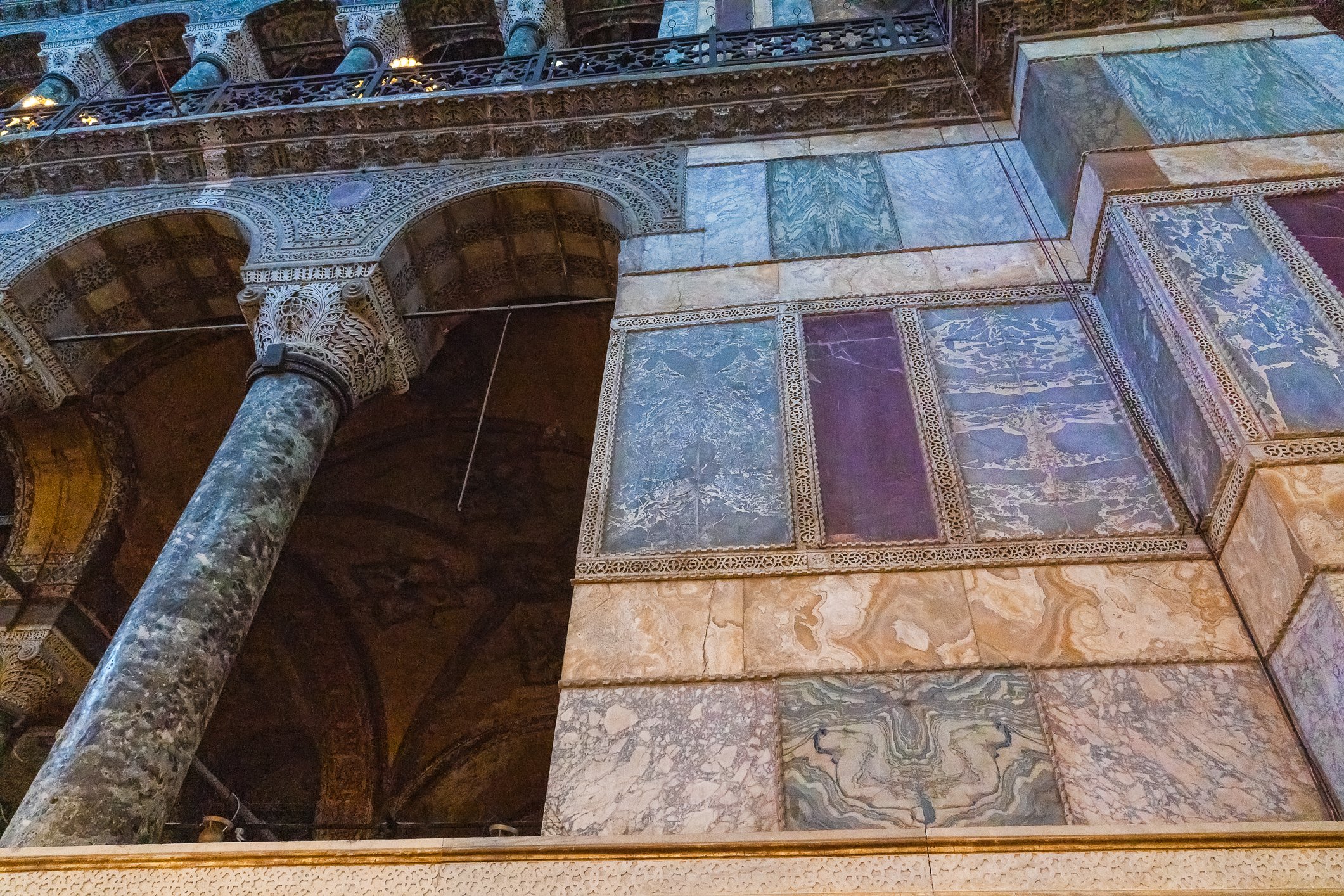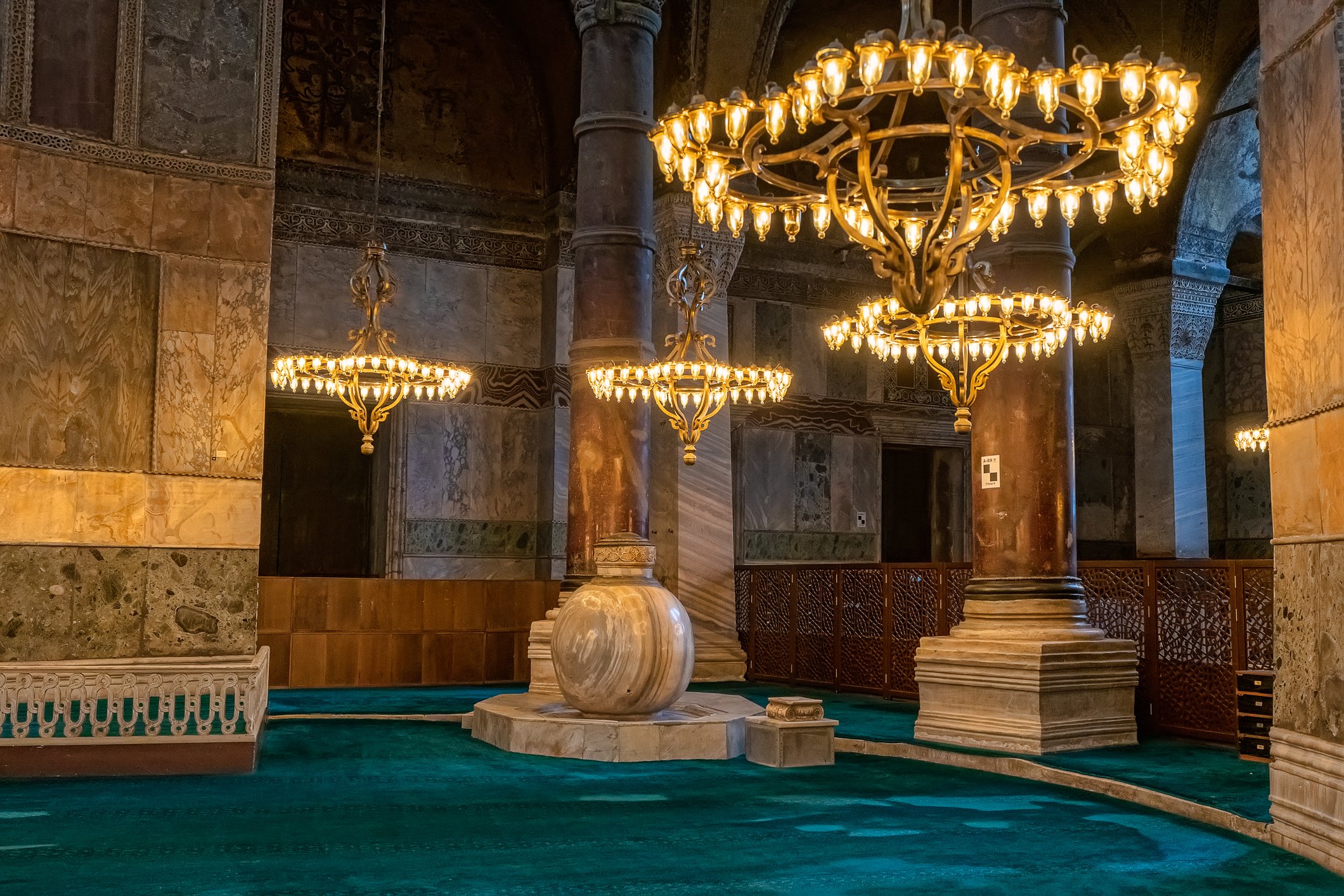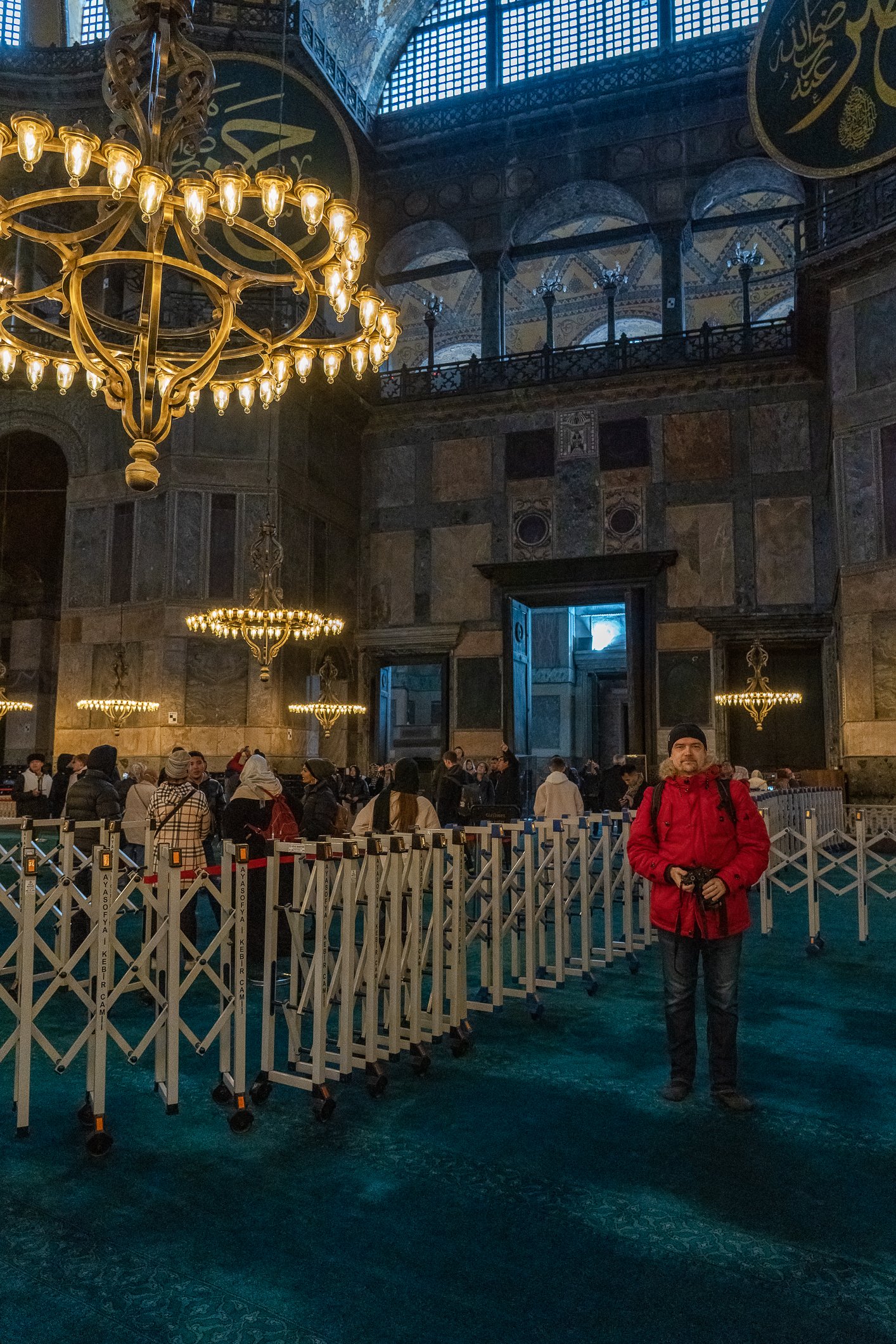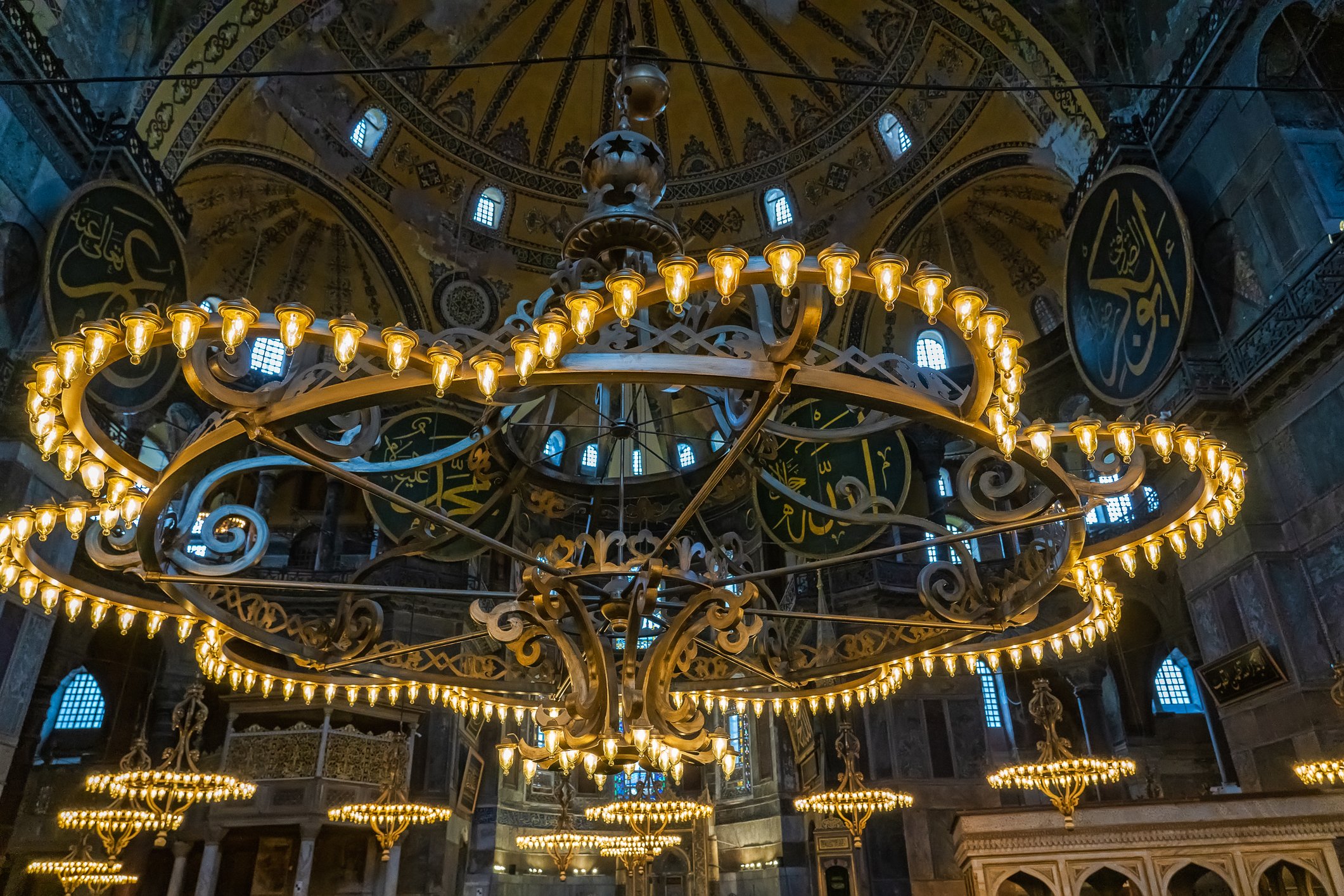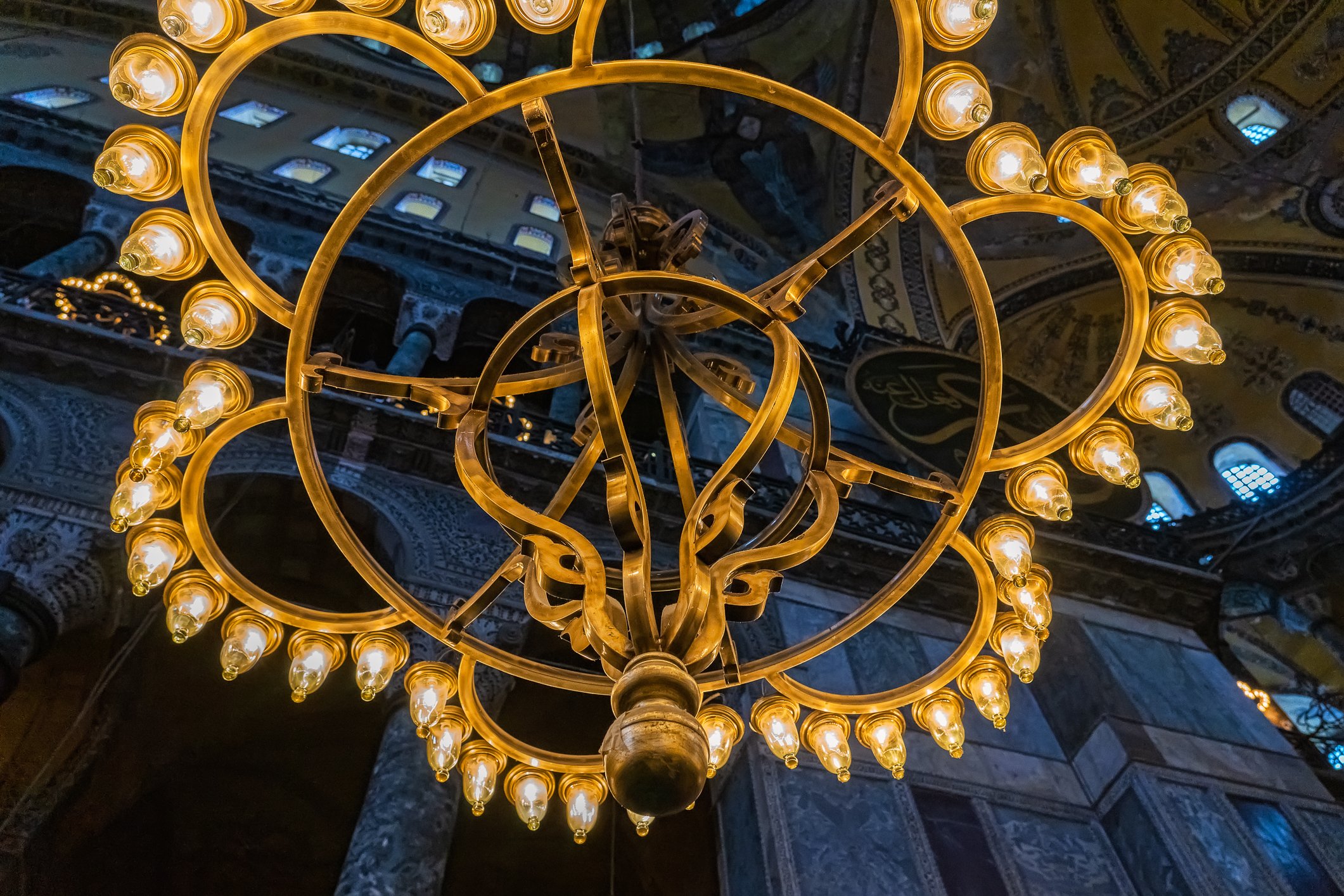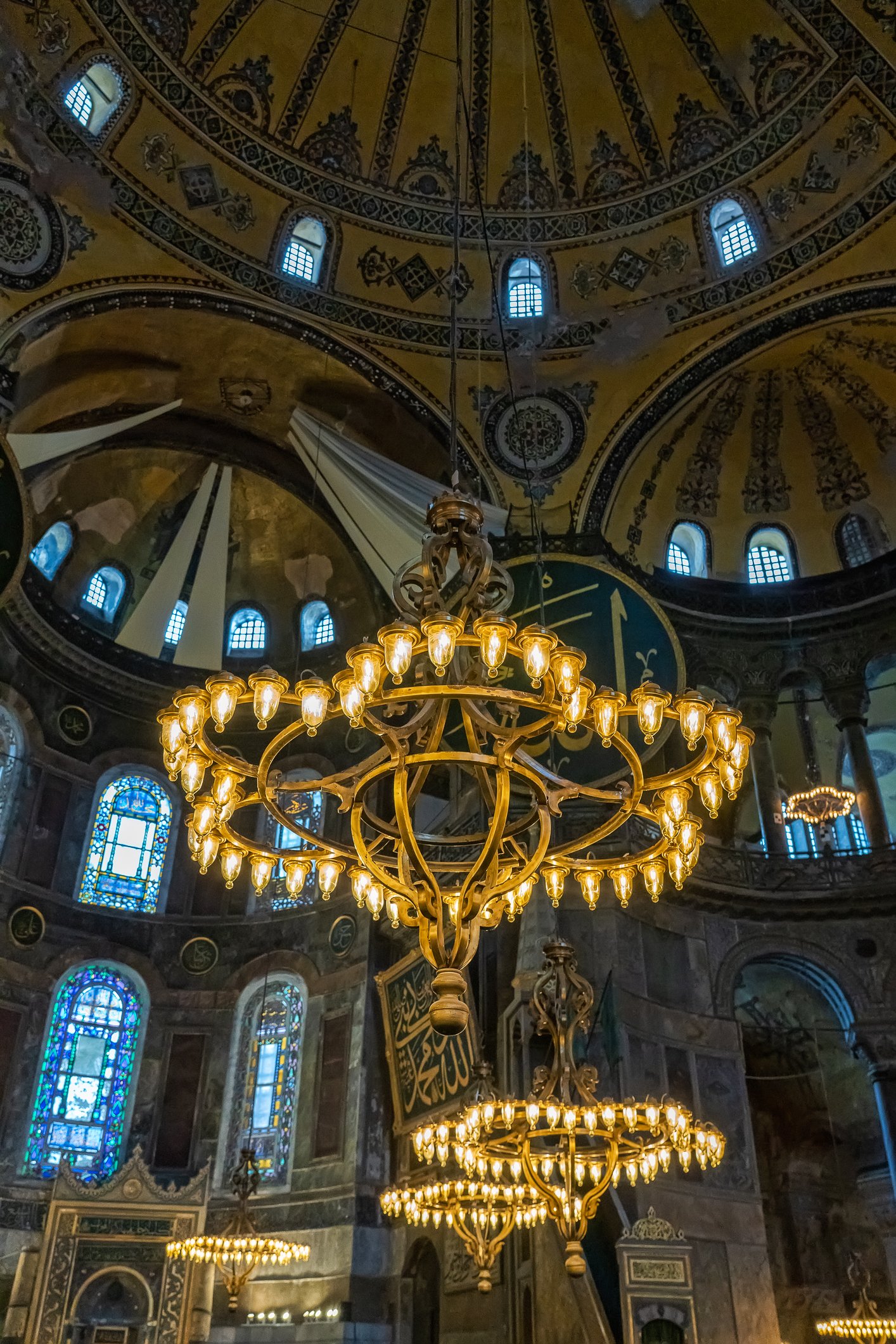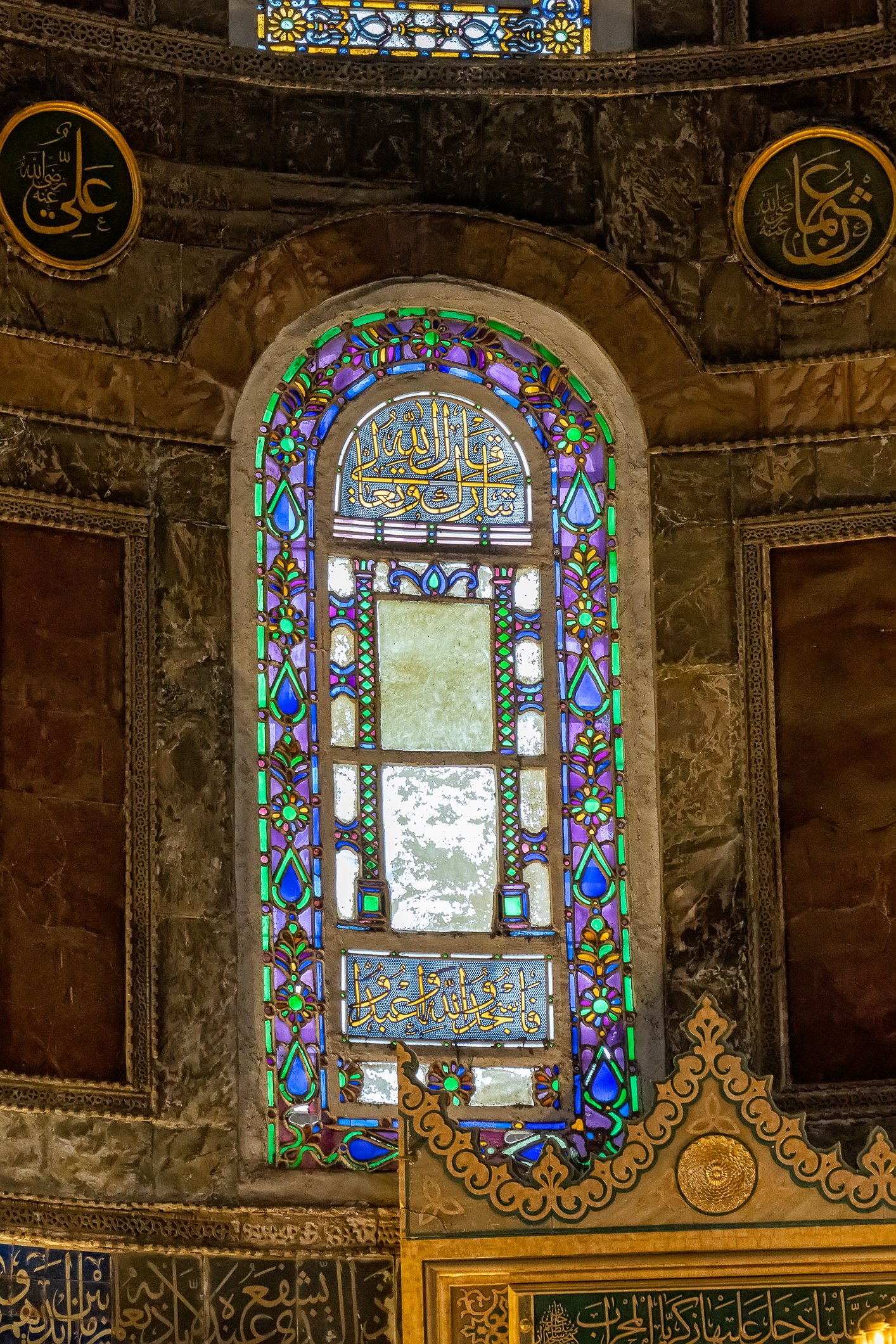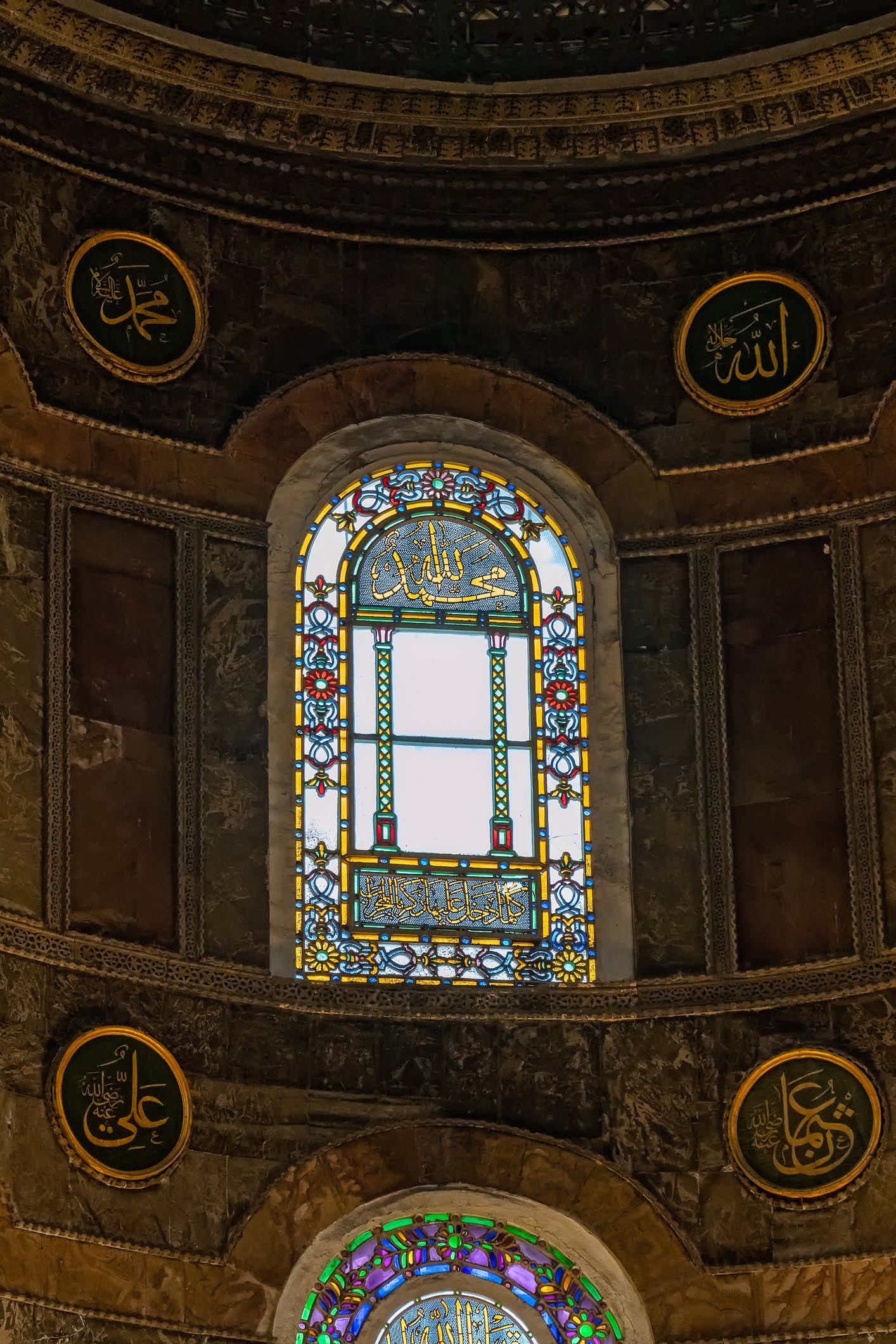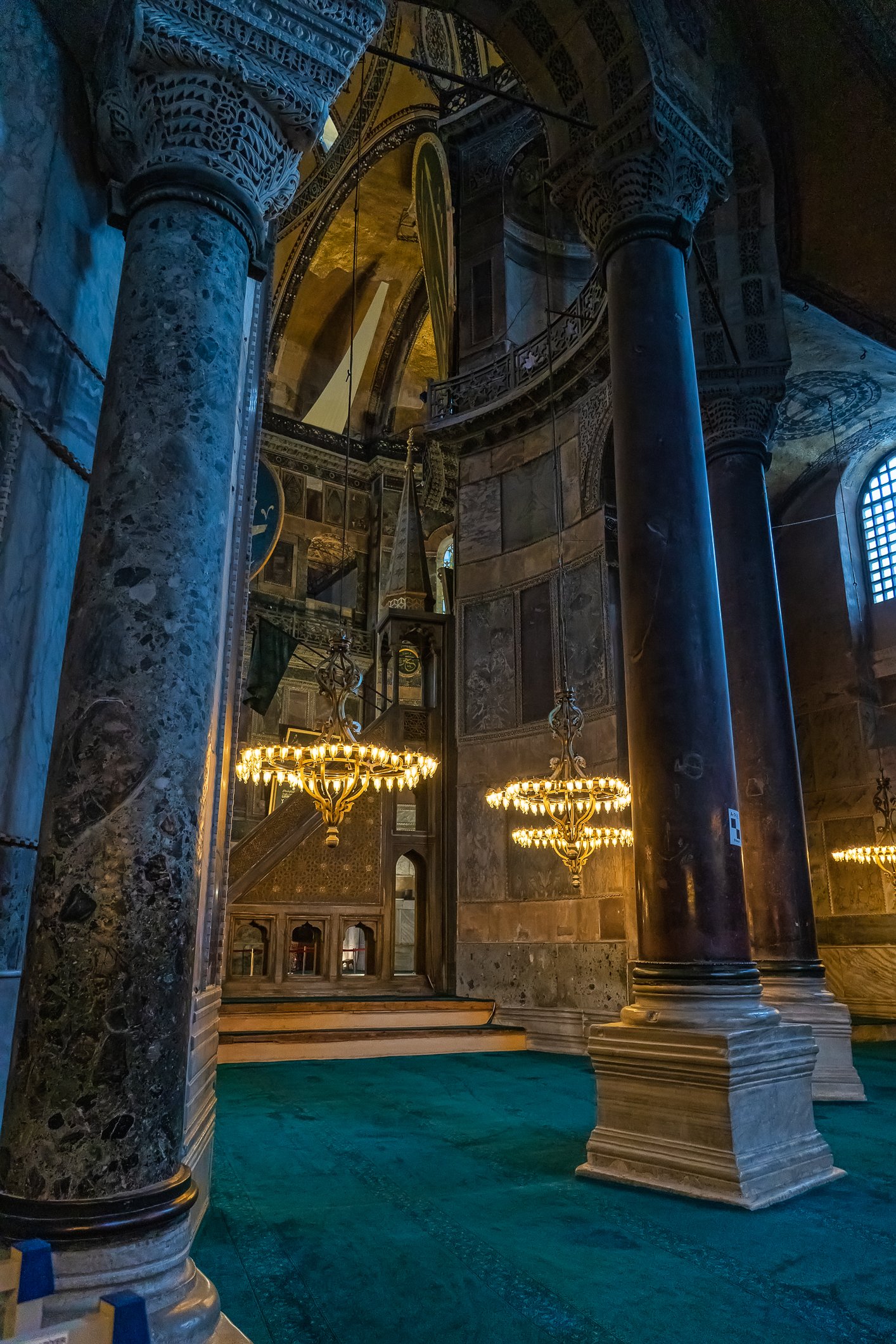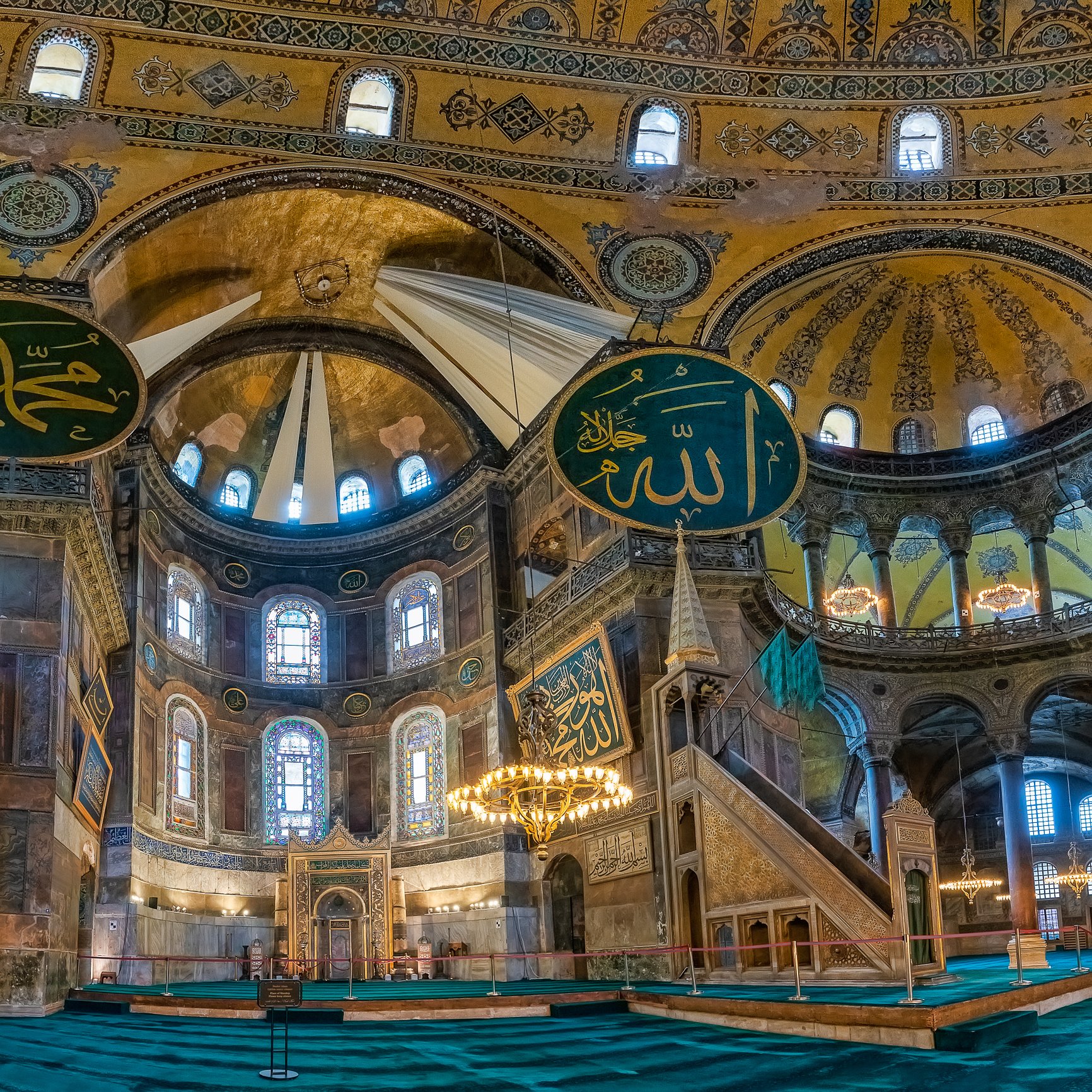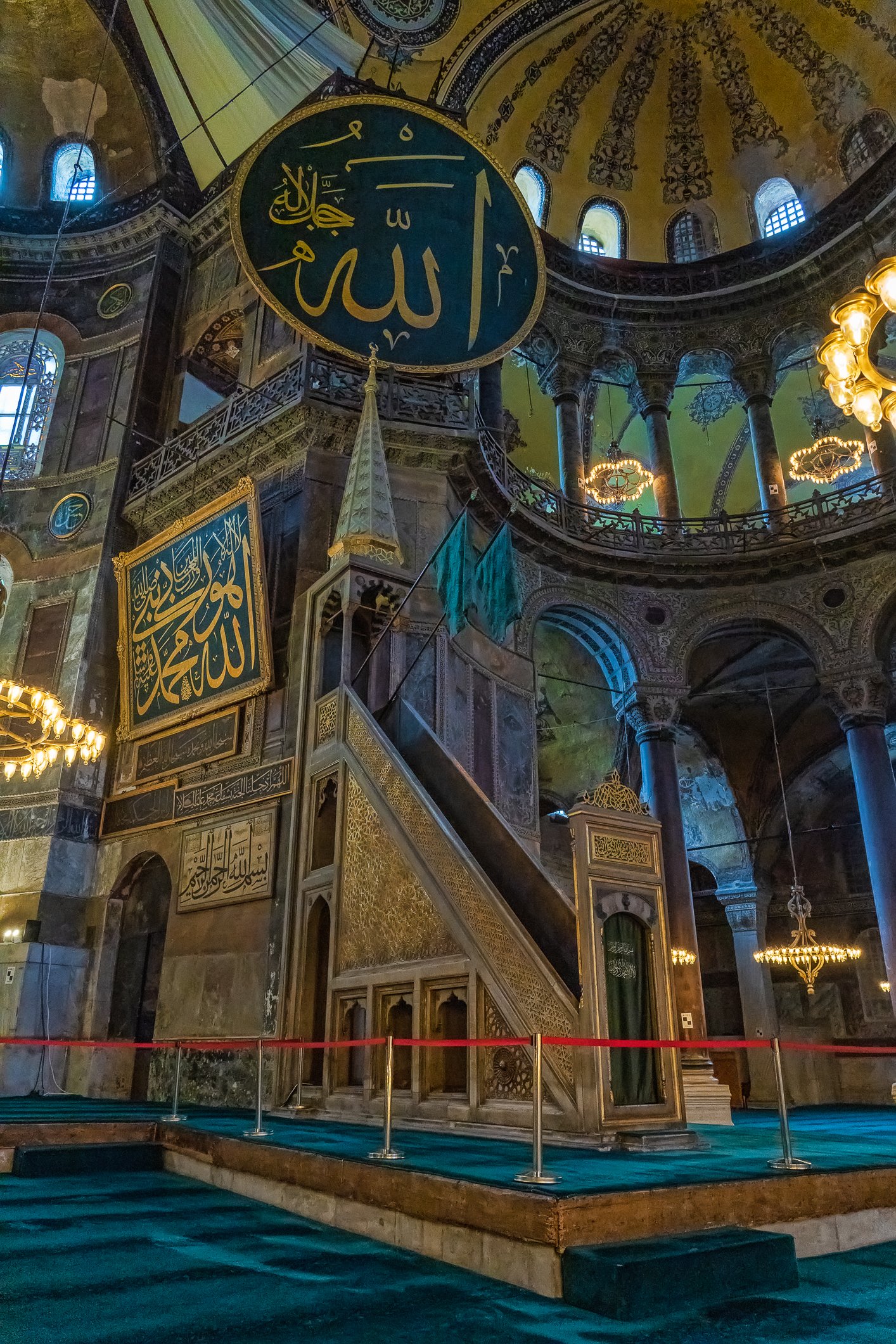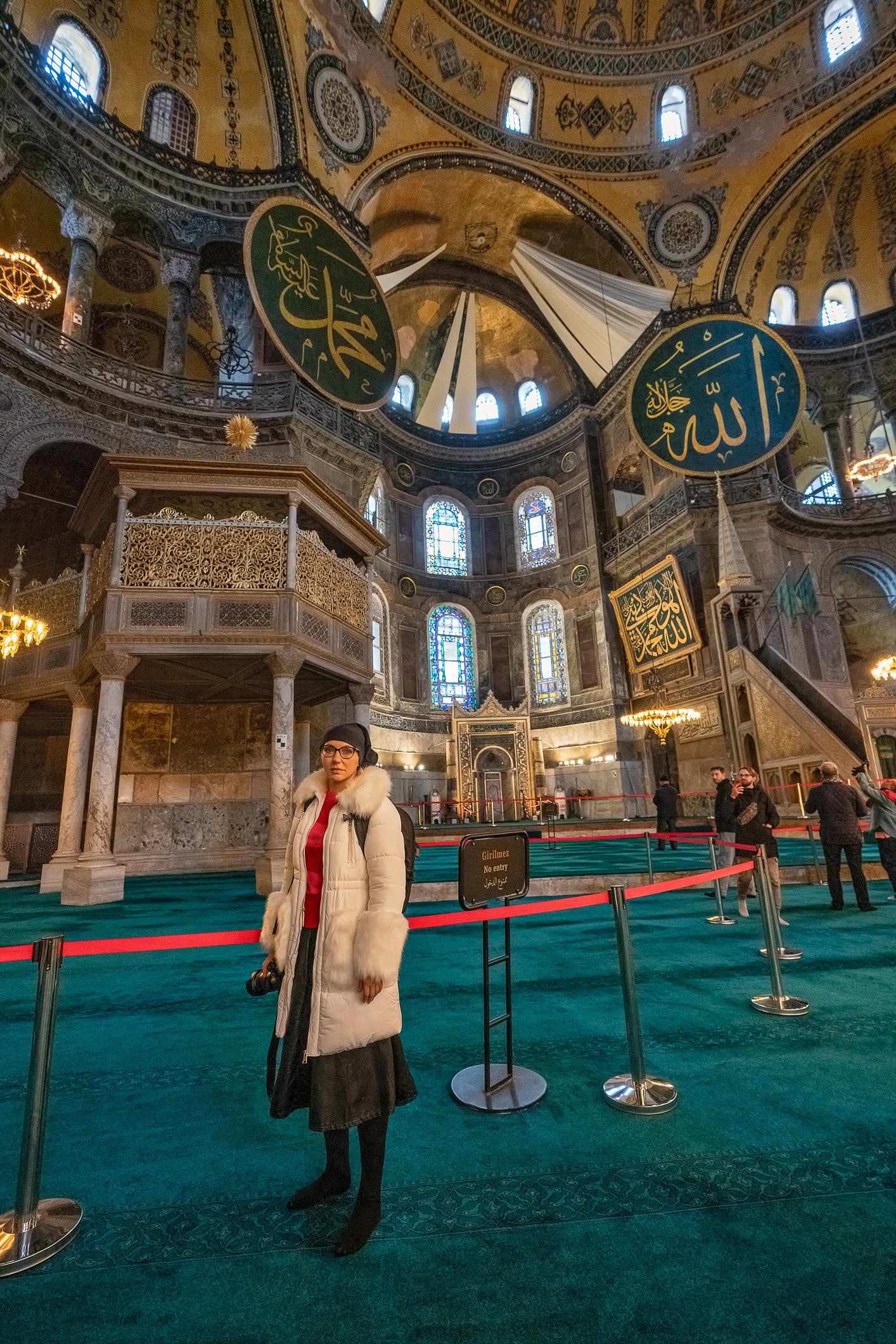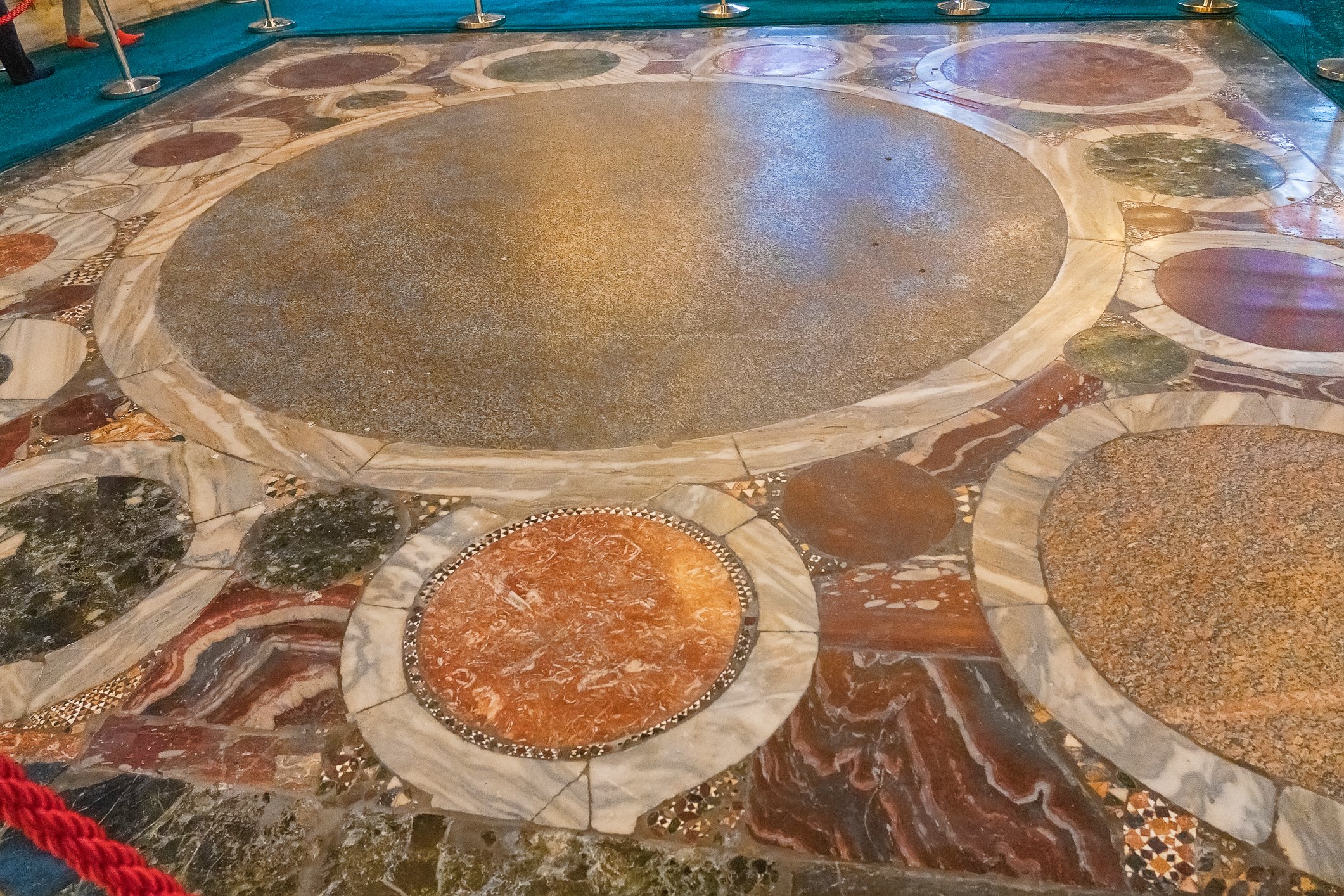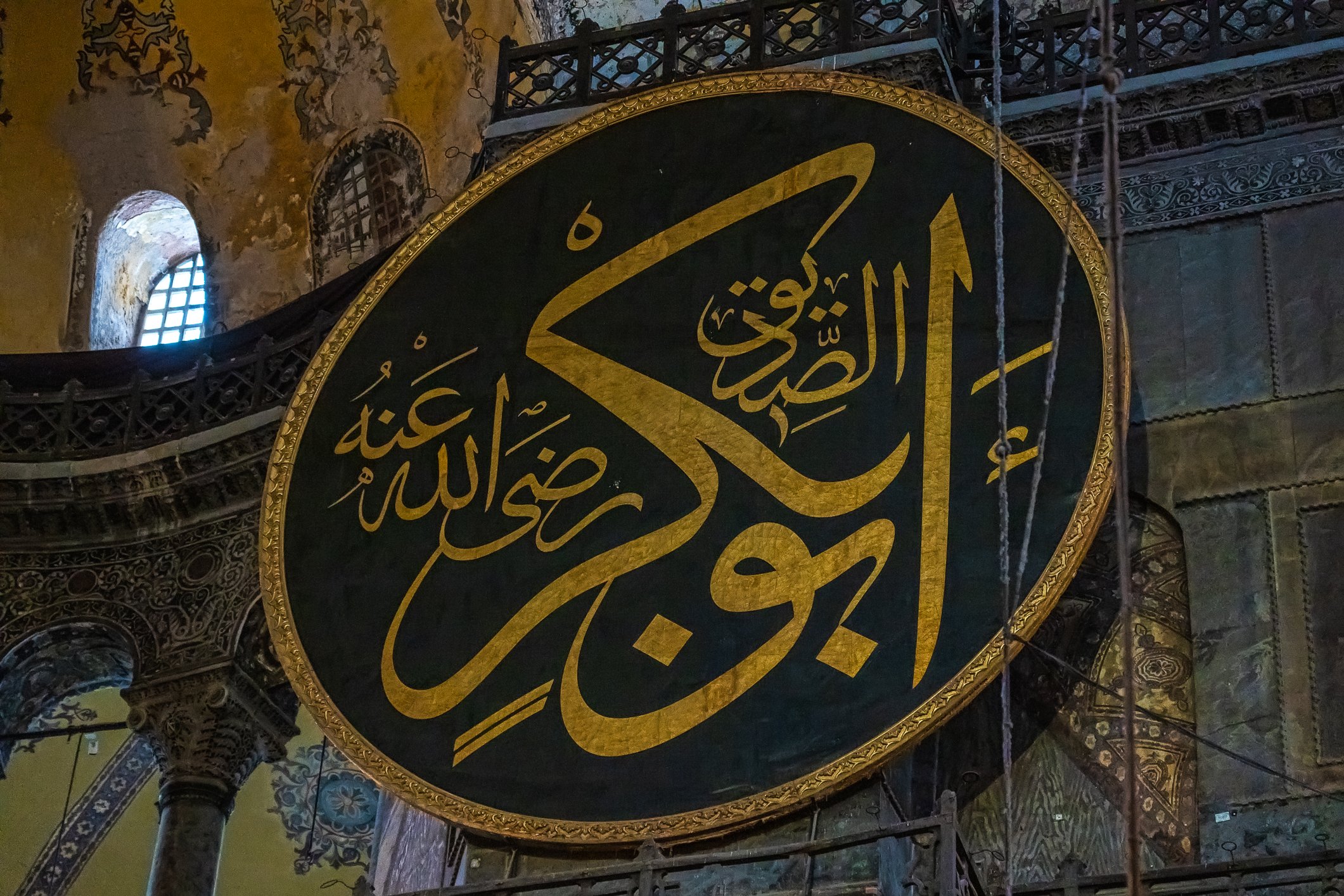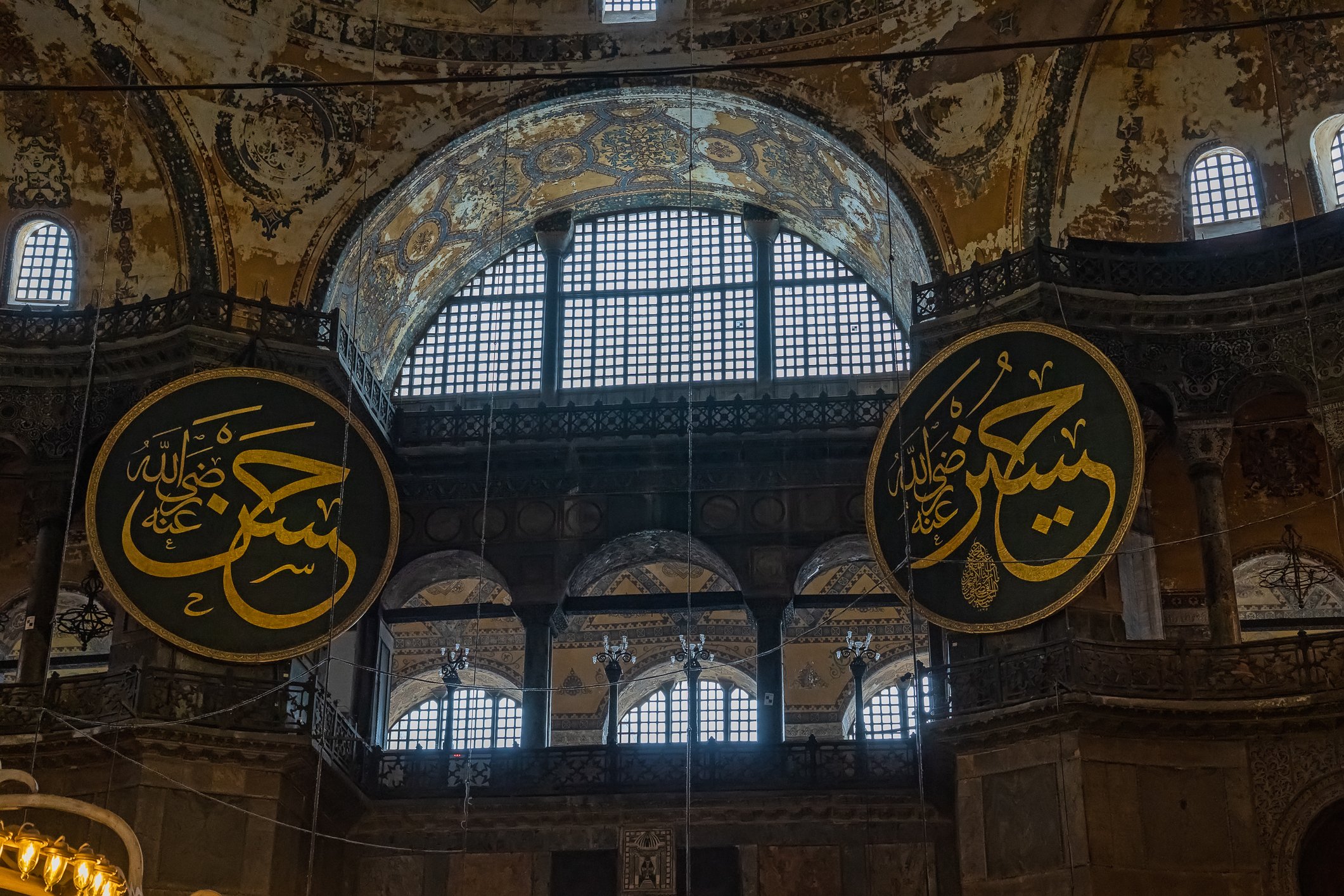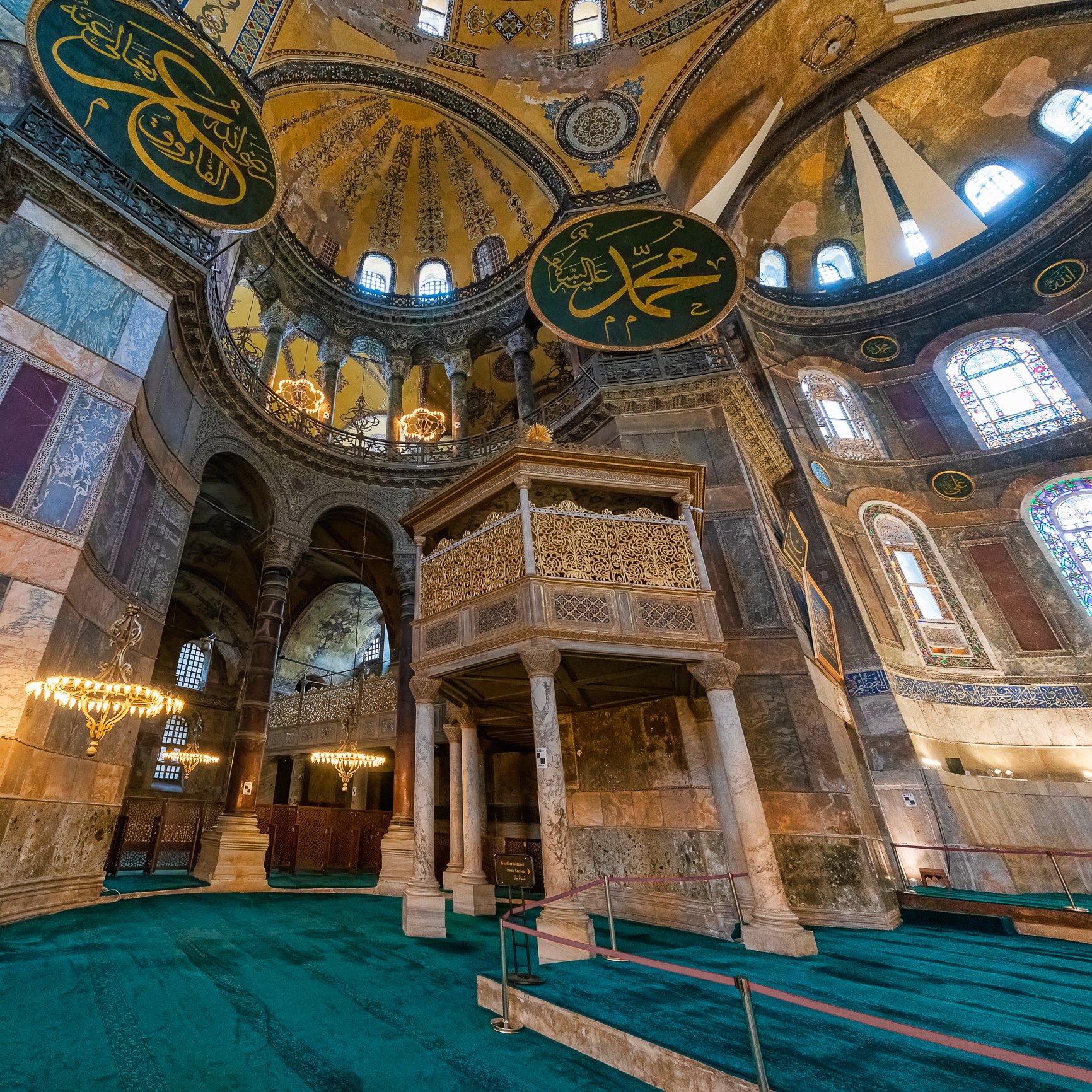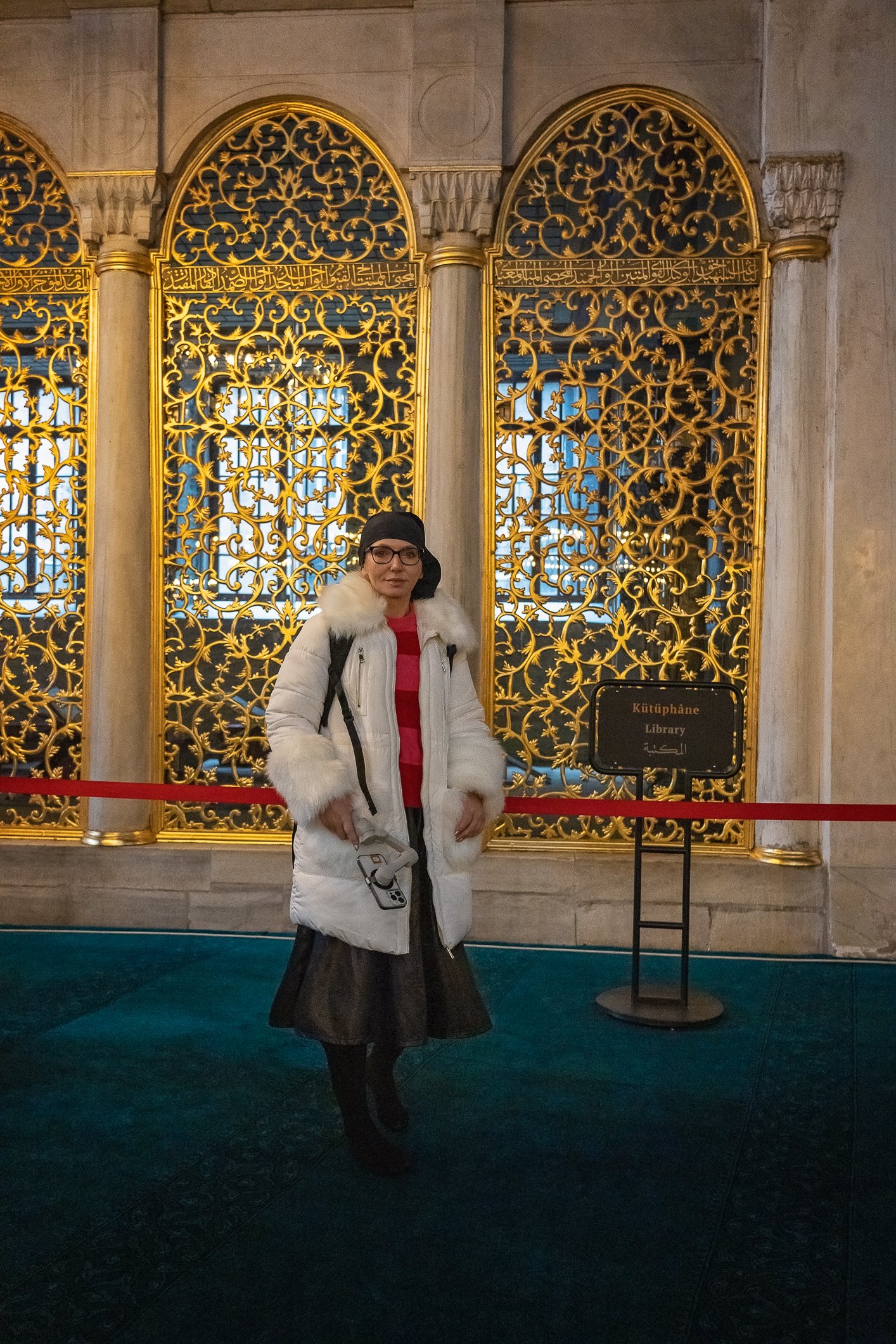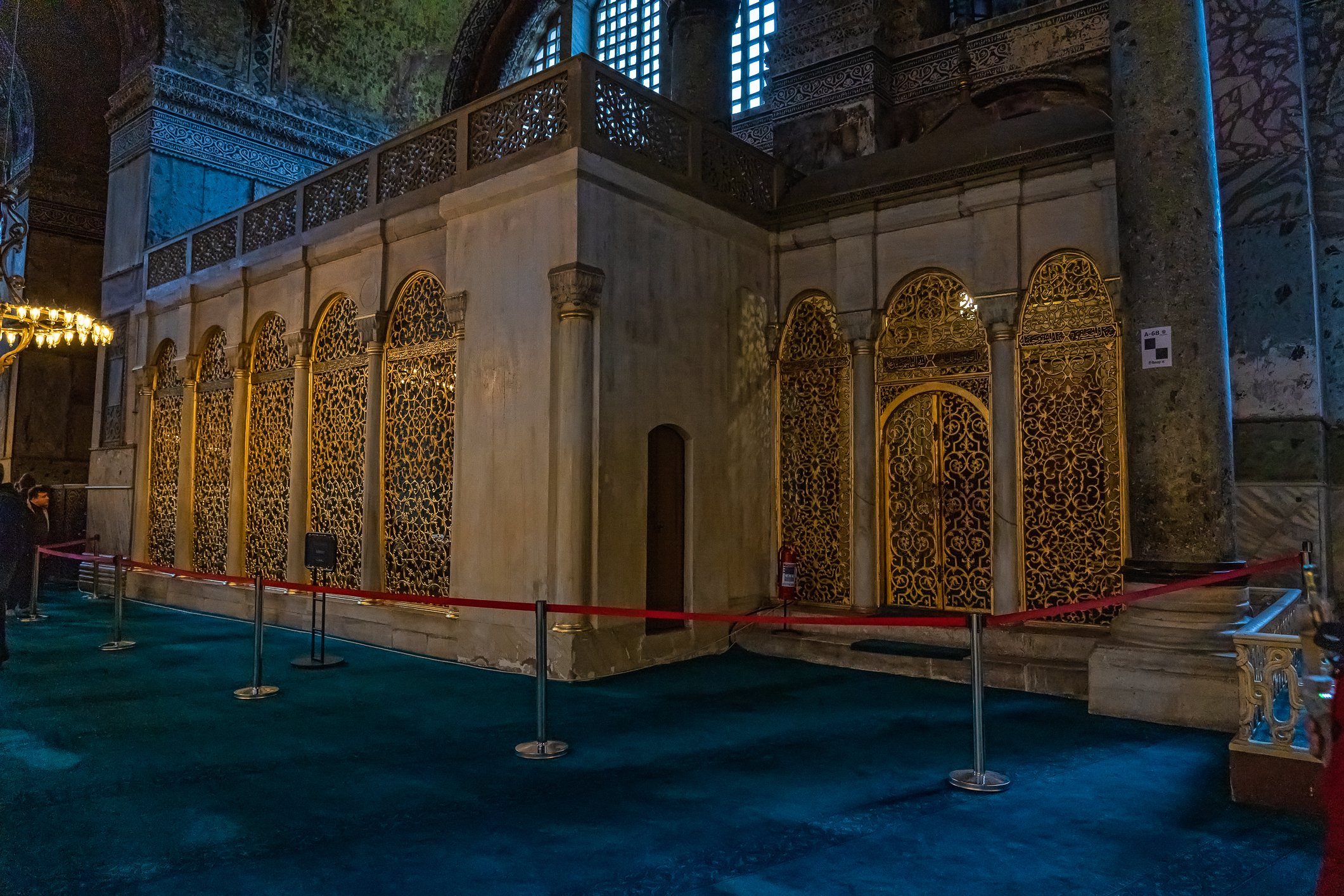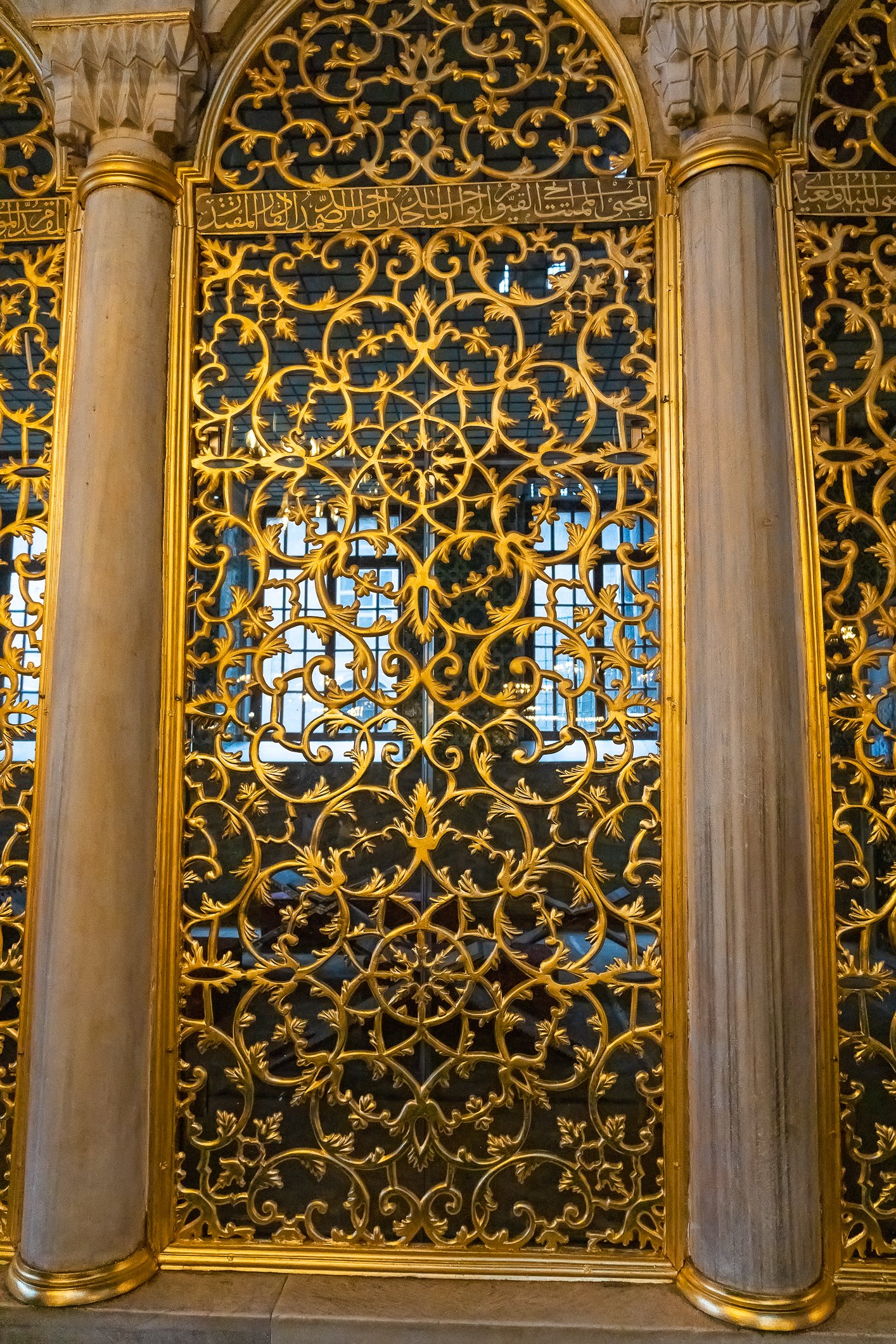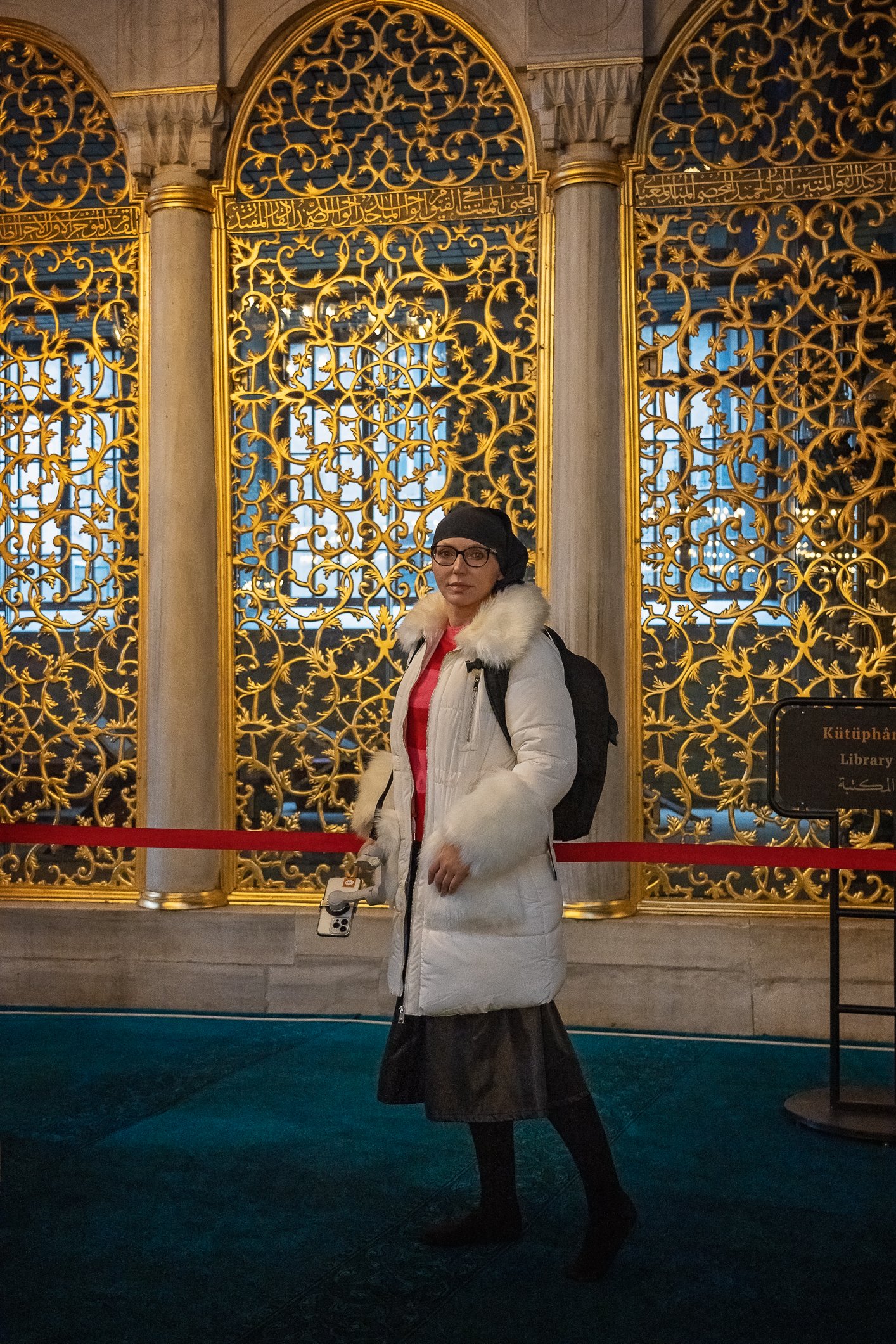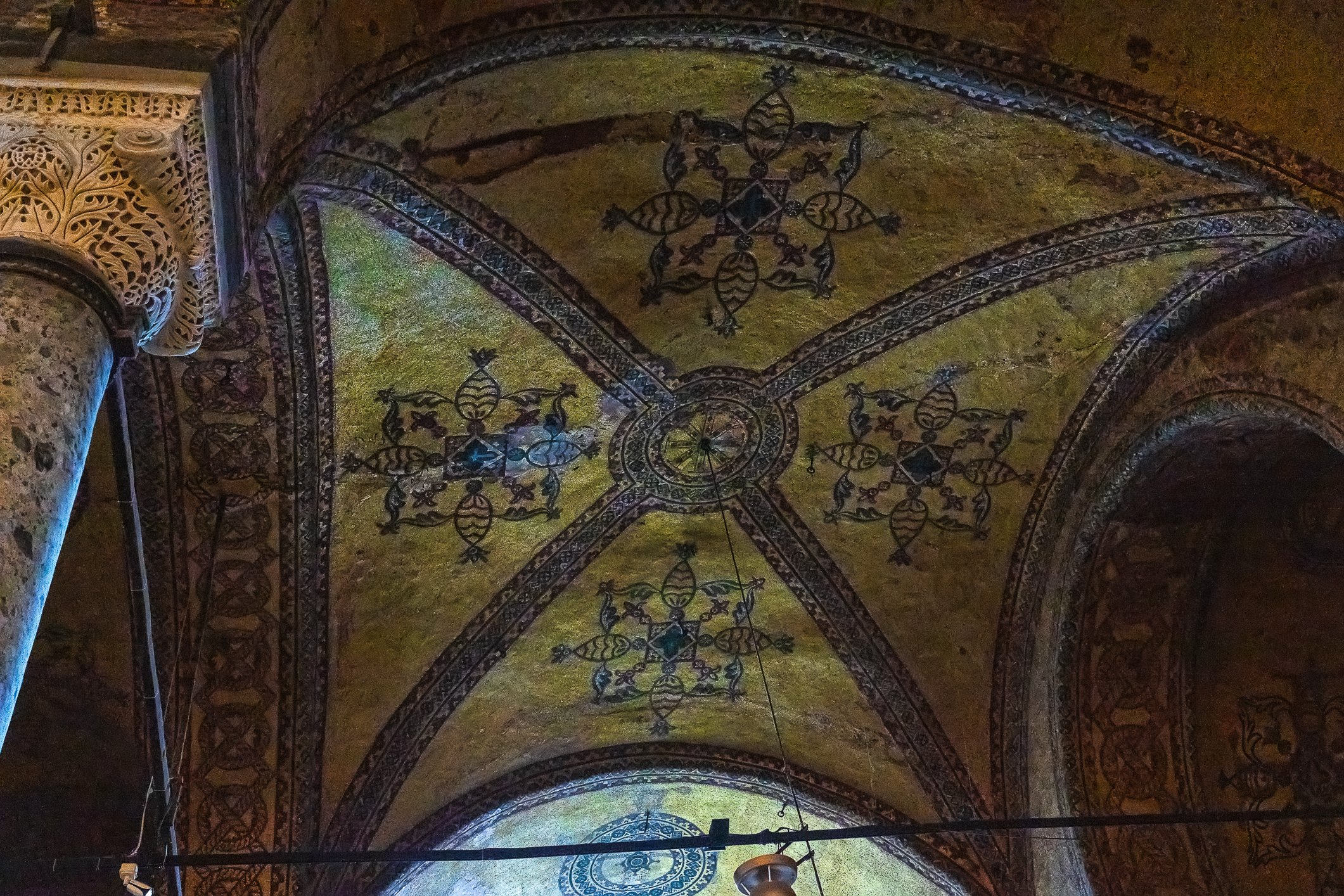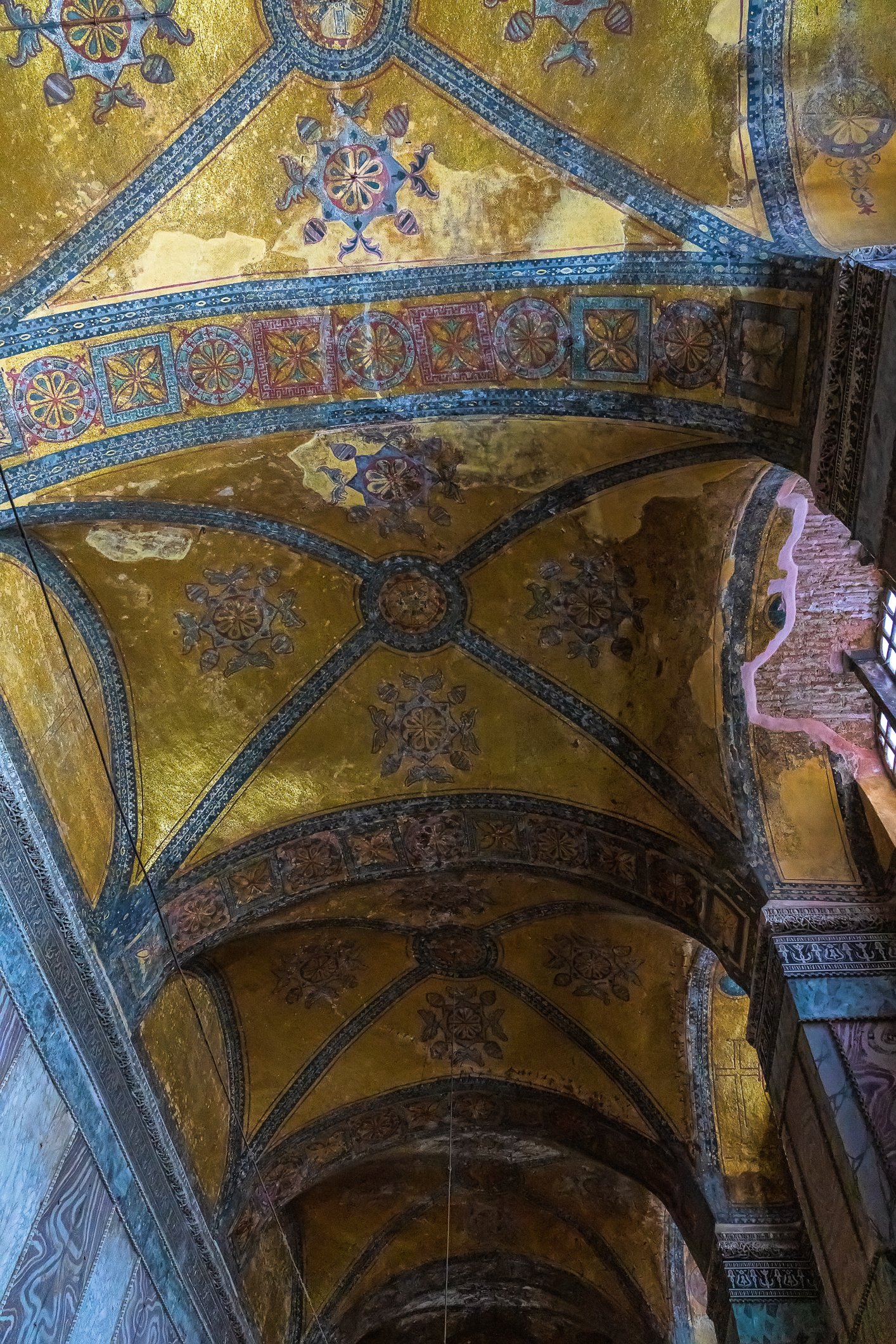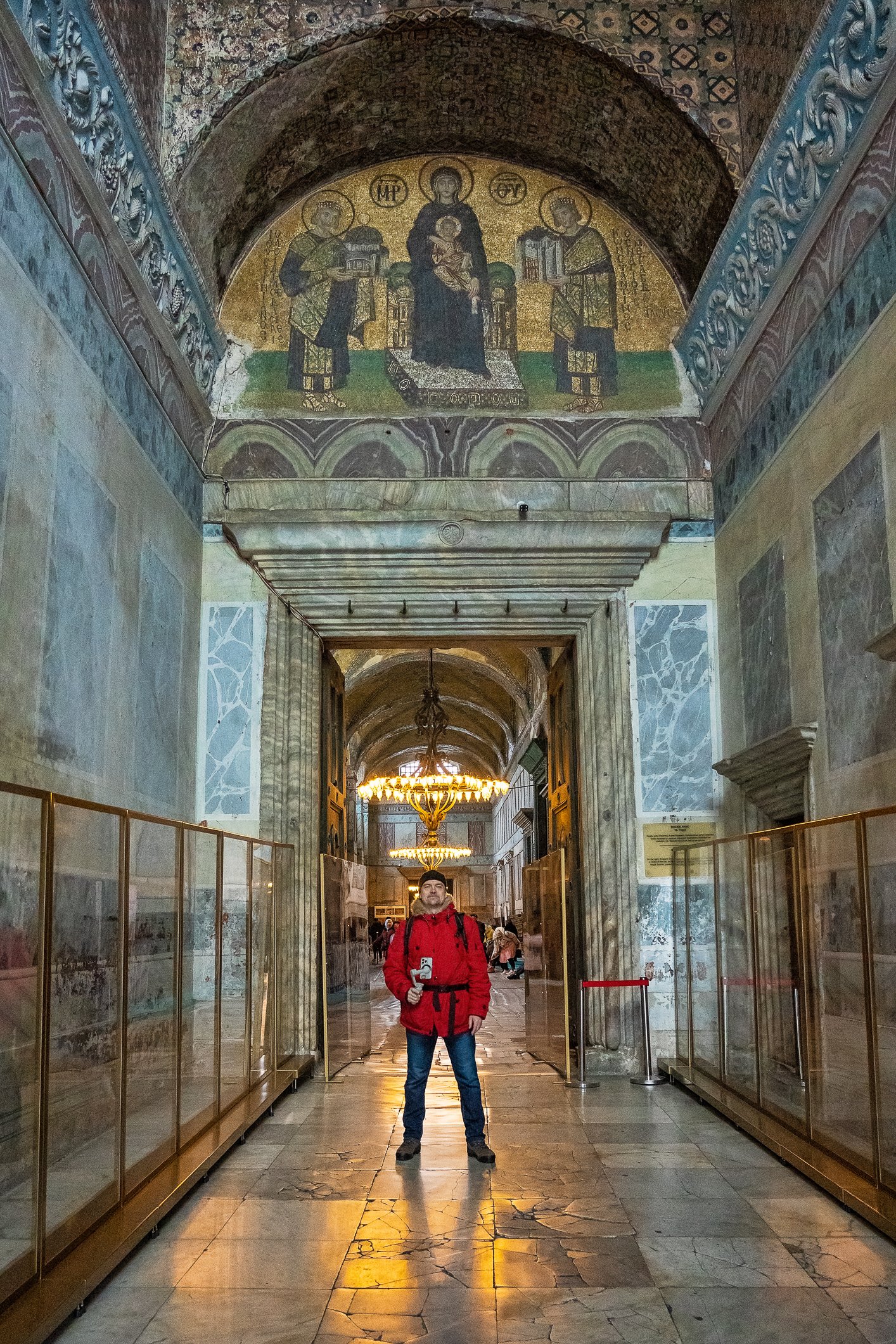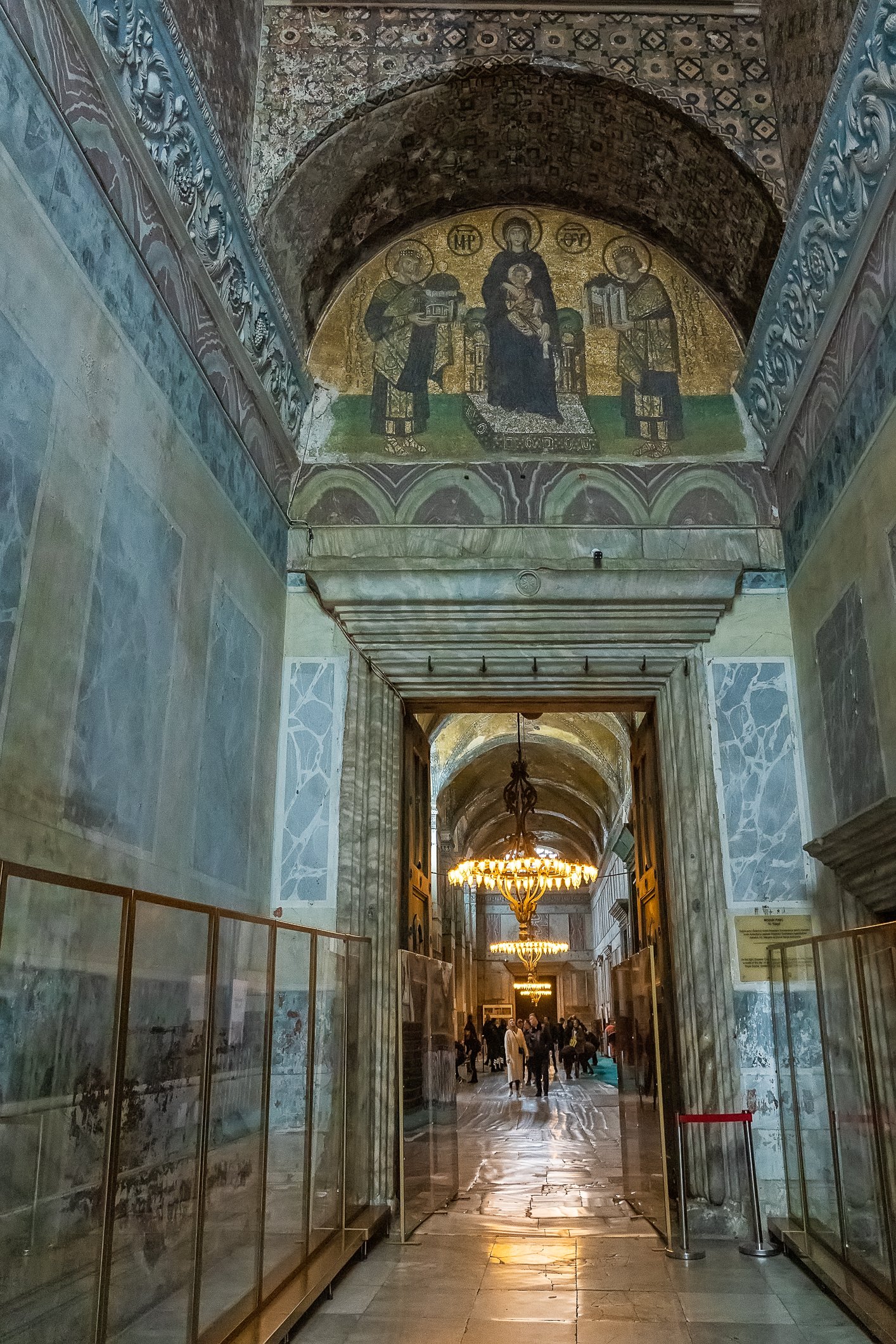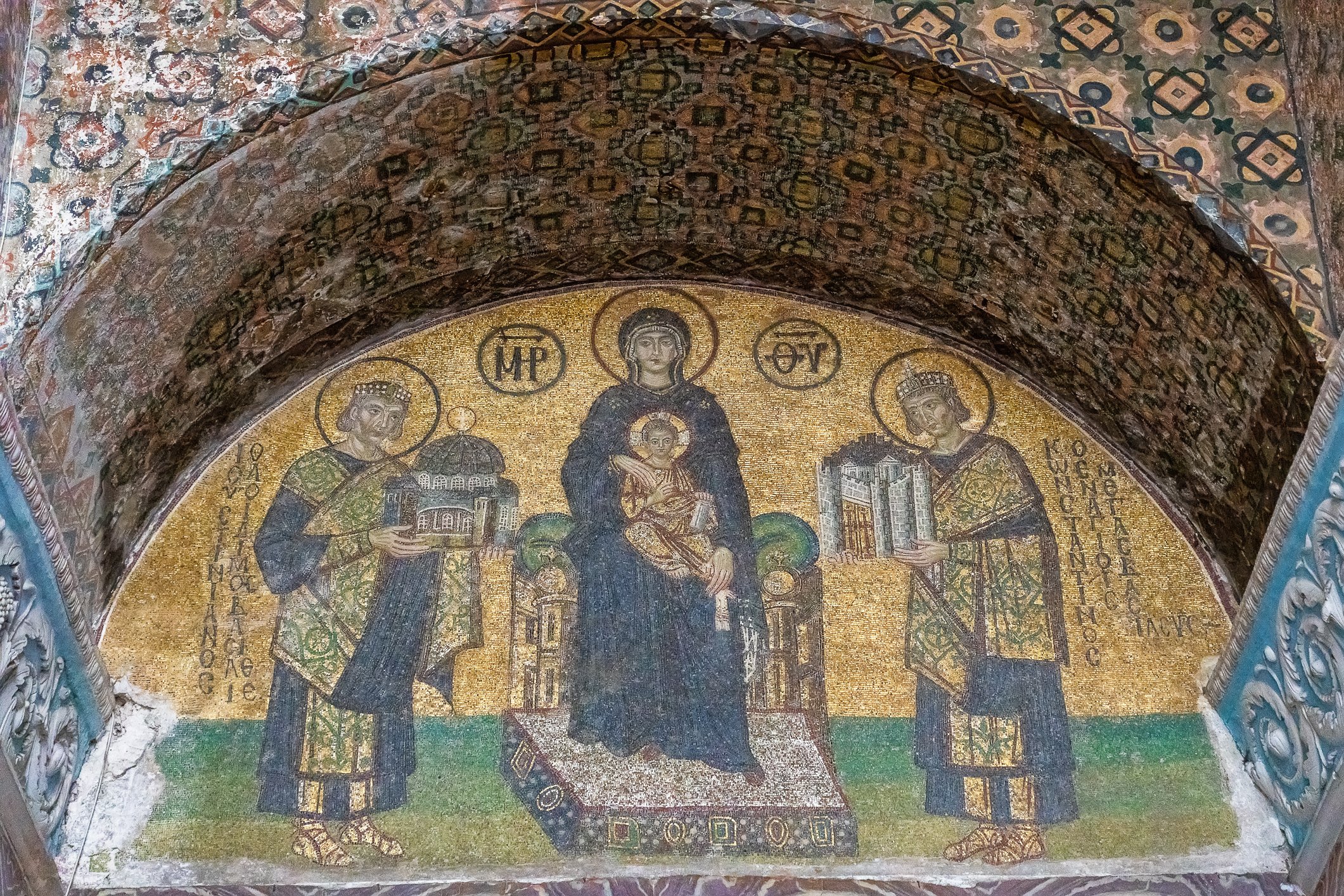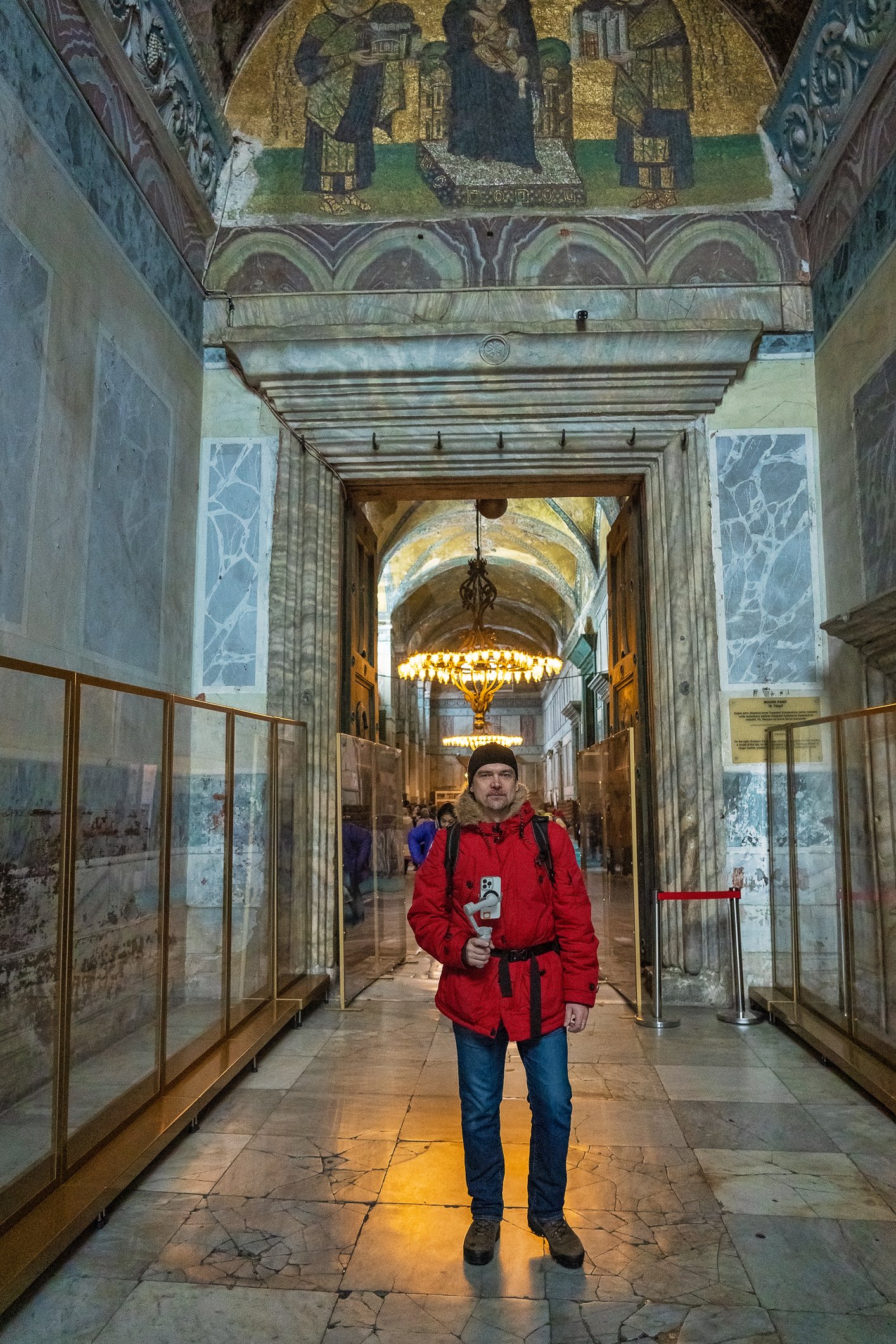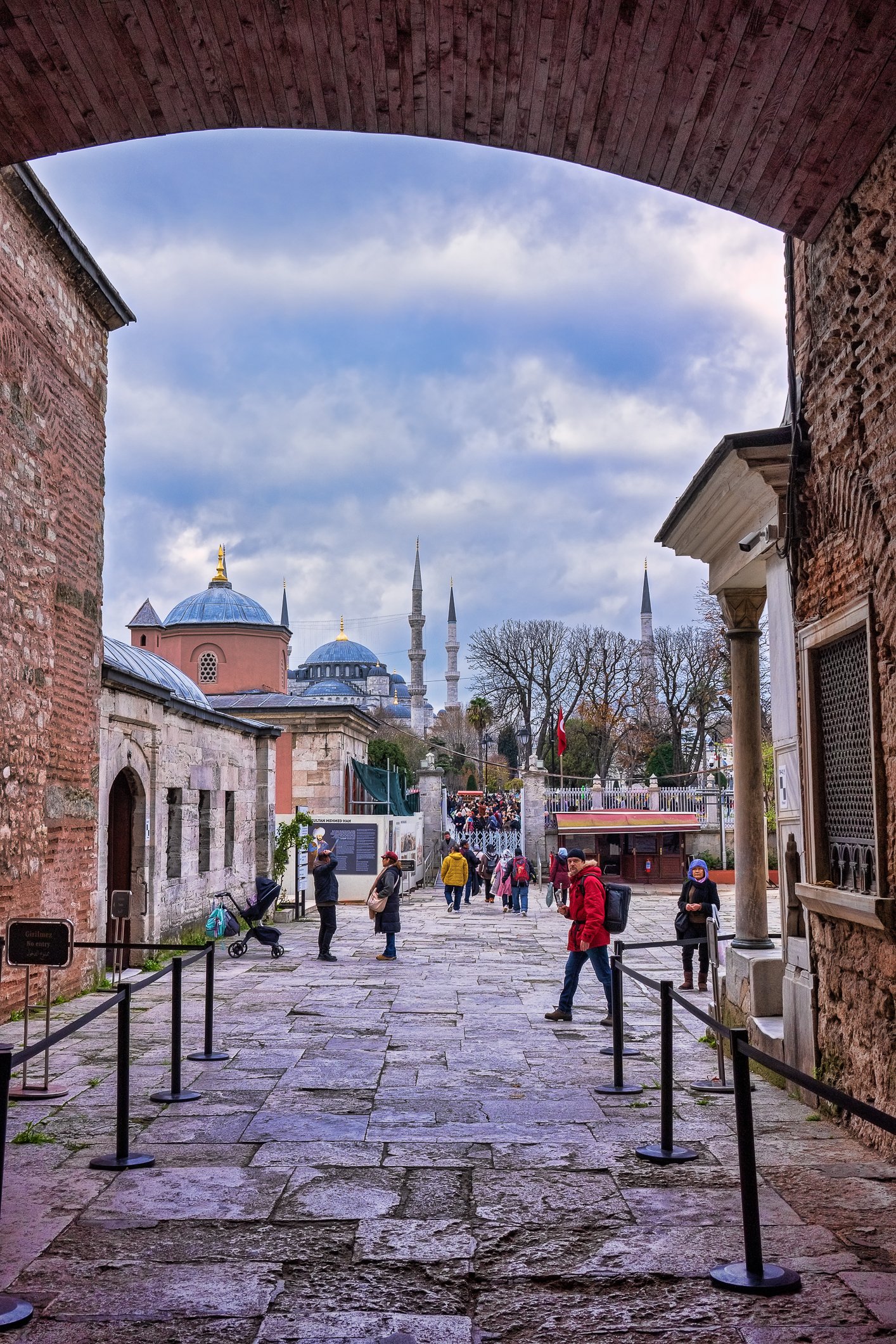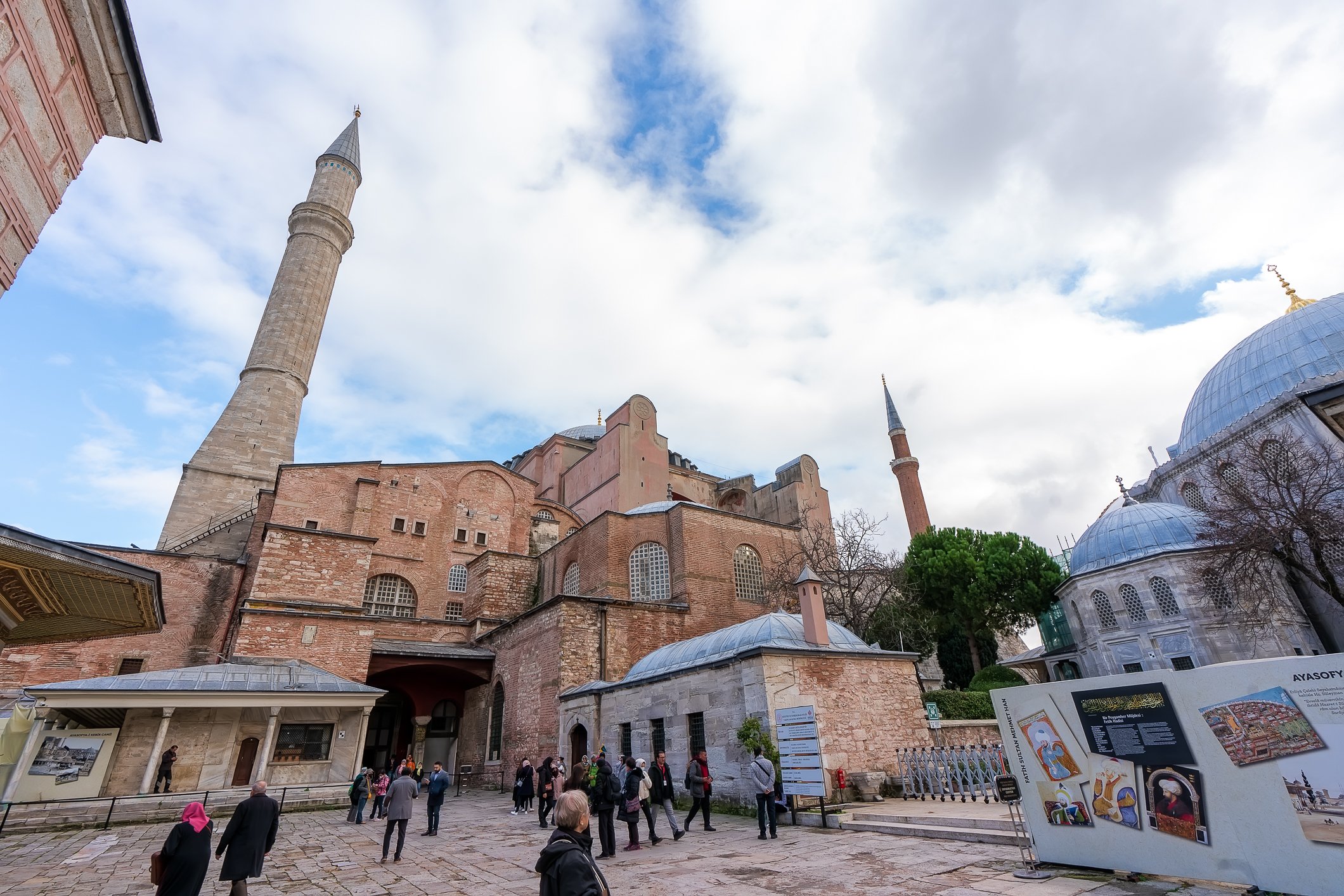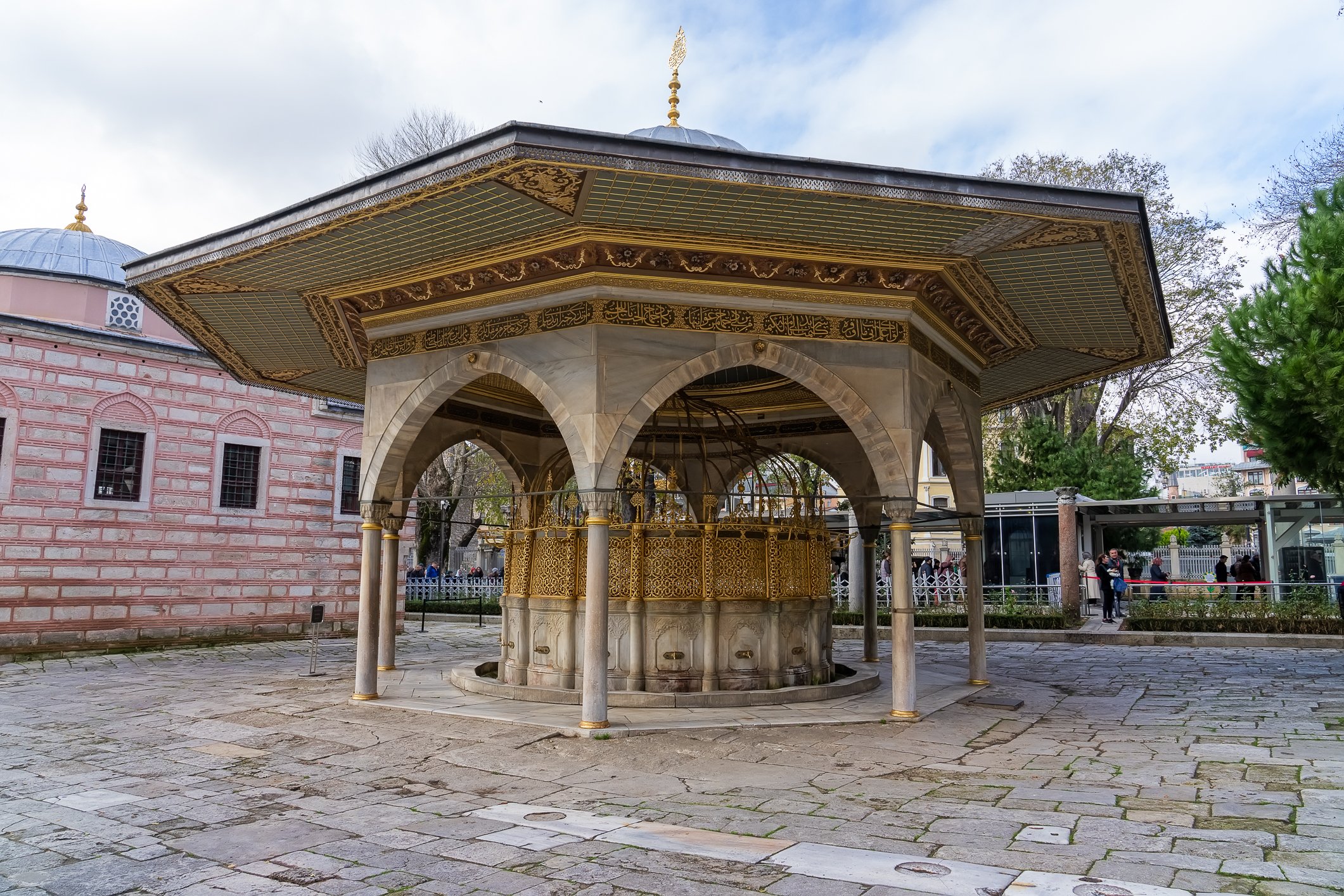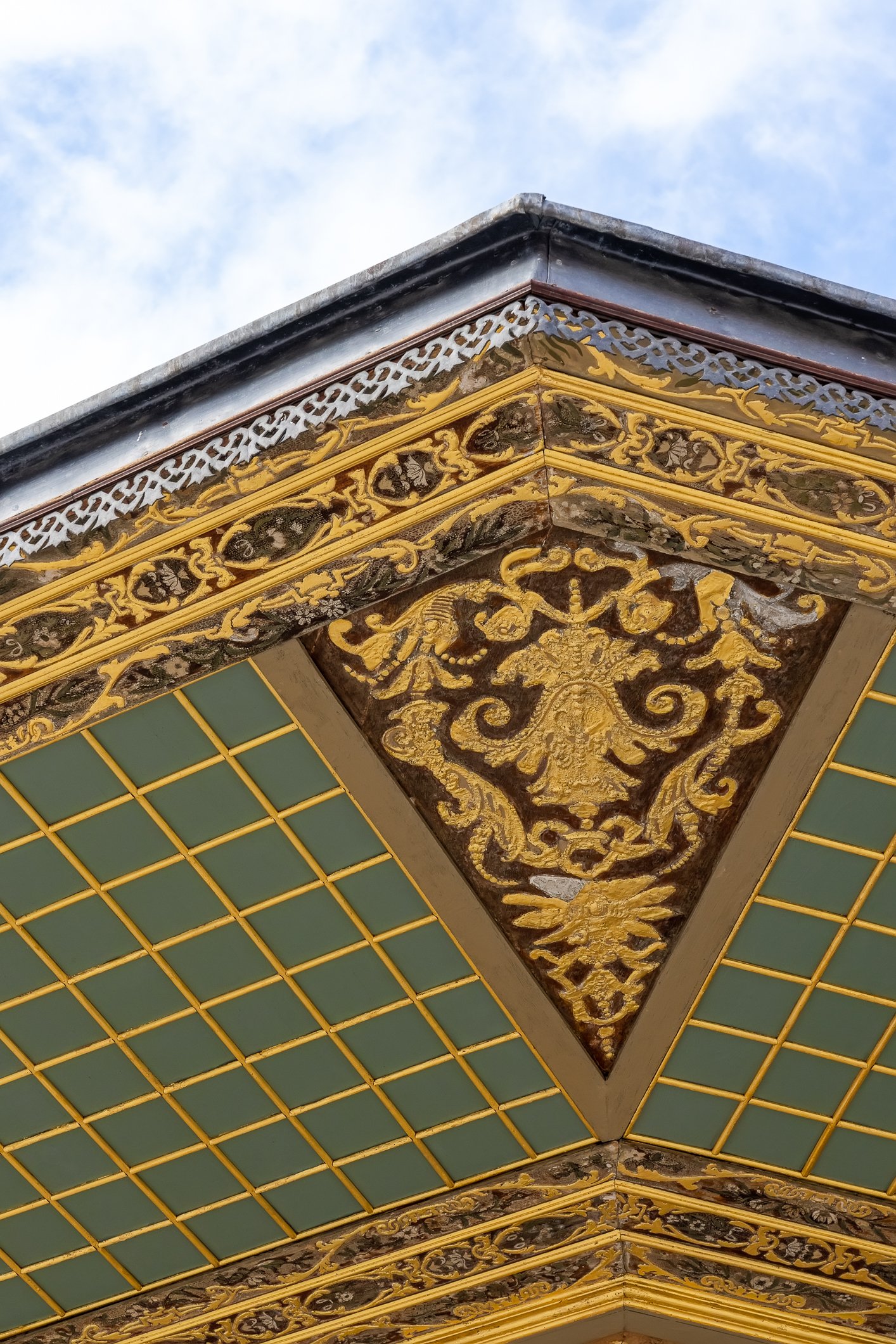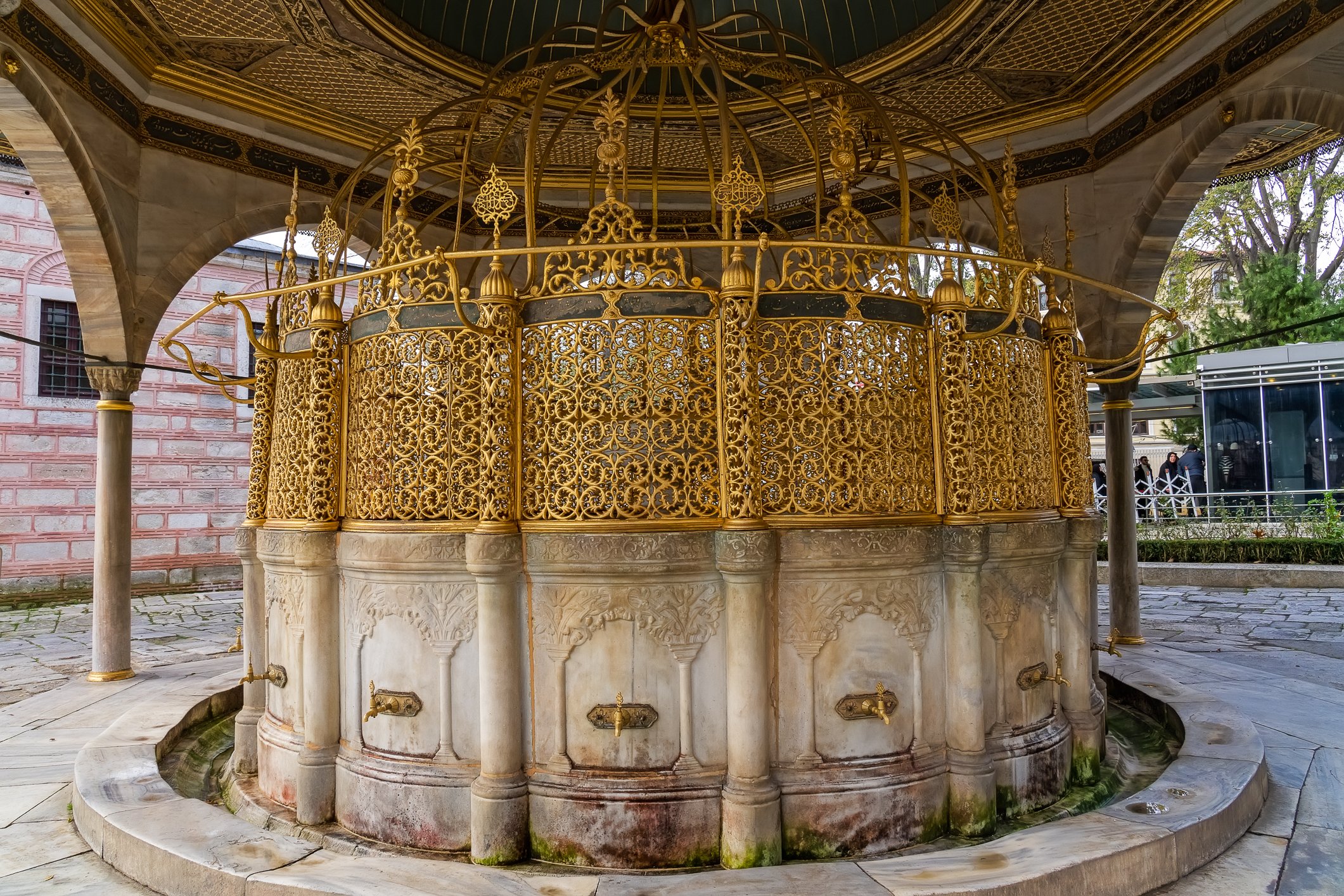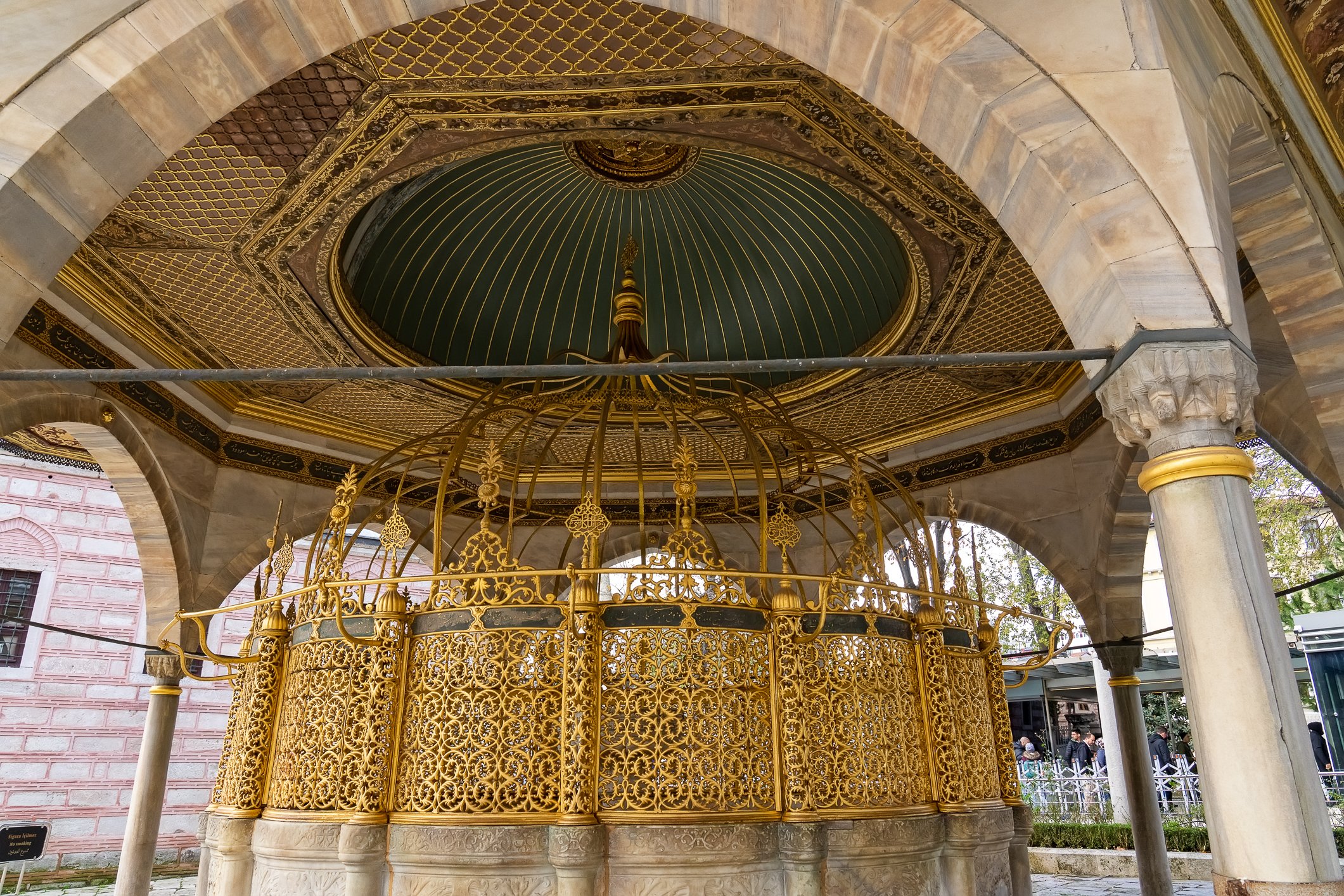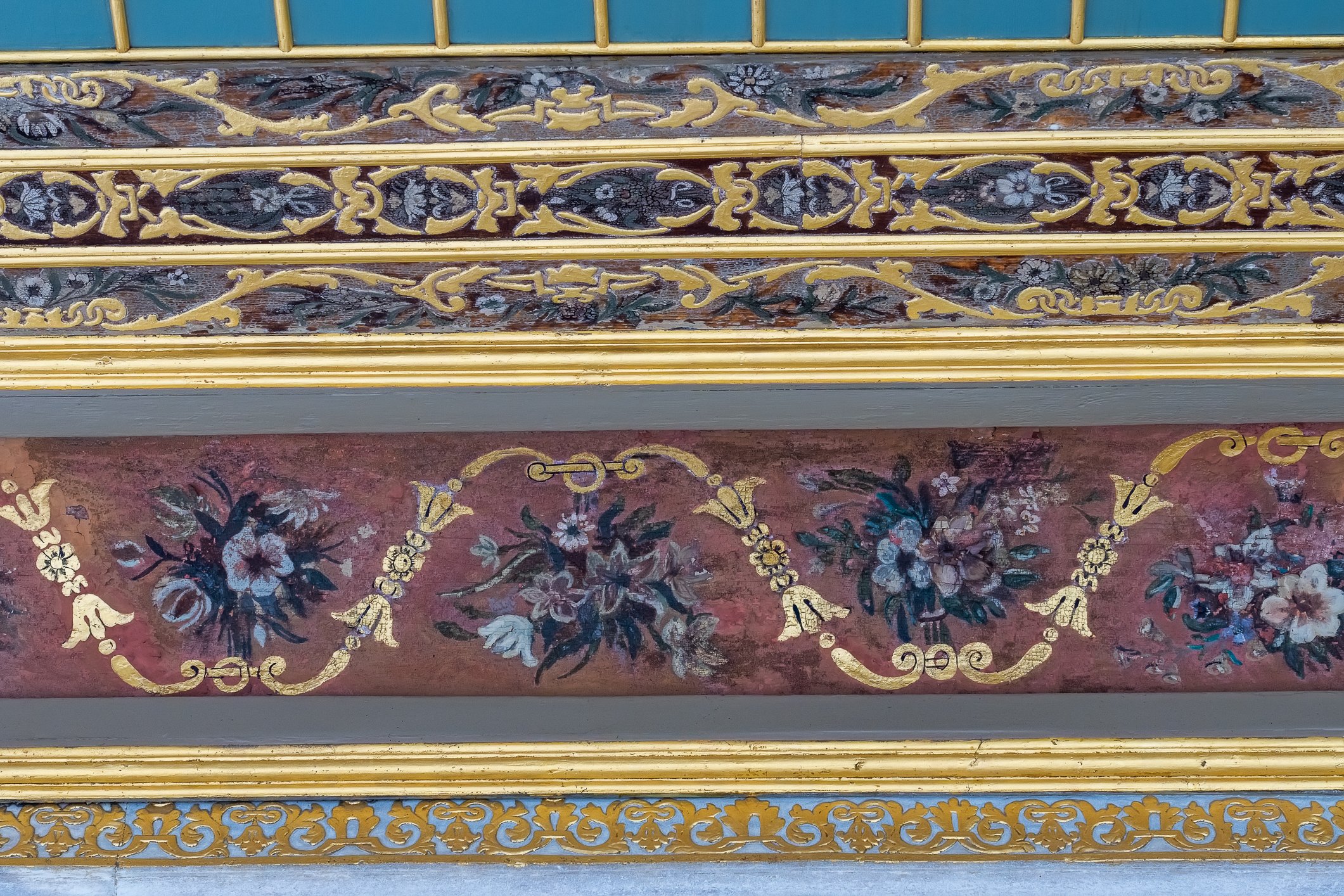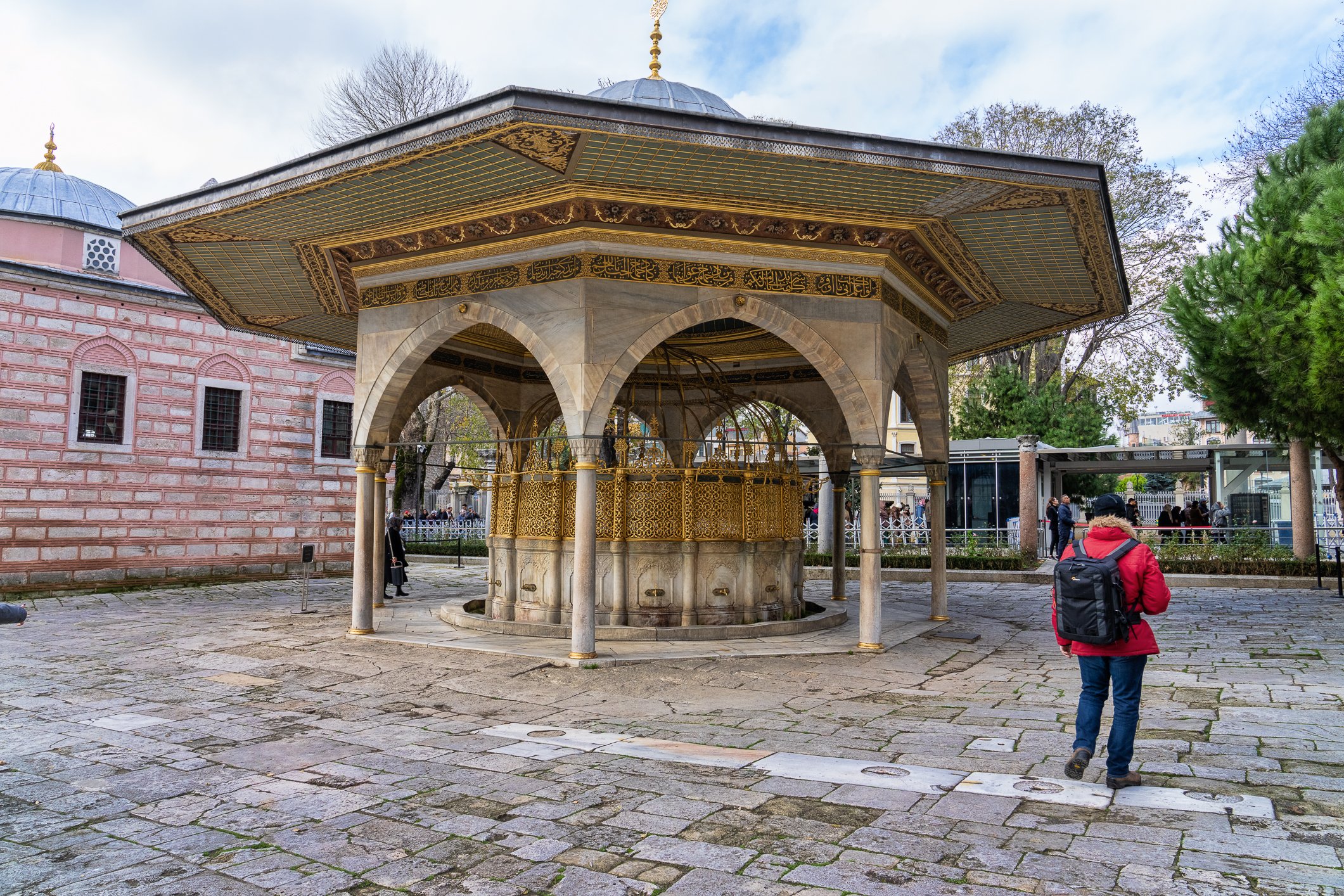A place nearly everyone knows about, a must-see on millions of bucket lists. Today we are visiting Hagia Sophia (or Aya Sofya, as they call it here). English name used to be the Church of the Divine Wisdom, but I doubt people would even know we are talking about Hagia Sophia when hearing this name.
We came quite early to take a few photos of the square, but even though it was still one hour to the opening, the queue had started to form already. So, I took my place at the relative front of it while Marcin went on with photography. It was a good decision. An hour later, when they opened the mosque for the visitors, the queue was already enormous.
Miejsce, o którym wiedzą prawie wszyscy; miejsce, które jest na liście „rzeczy do obejrzenia zanim umrzesz” milionów ludzi. Dziś odwiedzamy Hagię Sophię (nazywana tutaj Aya Sofya).
Przywlekliśmy się na miejsce dość wcześnie, aby zrobić kilka zdjęć placu bez tłumów ludzi, ale mimo że do otwarcia została jeszcze godzina, kolejka już zaczęła się formować. Zajęłam więc miejsce na jej początku, podczas gdy Marcin kontynuował robienie zdjęć placu. I to była dobra decyzja. Godzinę później, kiedy otworzyli meczet dla zwiedzających, kolejka była już ogromna. Stalibyśmy godzinami i zwiedzali w wielkim tłumie. Kto rano wstaje…
Hagia Sophia was commissioned by the emperor Justinian and first consecrated as a church (537) before conversion to a mosque (1453), It was then declared a museum by the Ataturk in 1935. And recently, it has been converted back into a mosque. It was also decided that Hagia Sophia’s icons of the Virgin Mary and infant Christ would be veiled by fabric curtains. The interesting thing is that when Sultan Mehmed II took over Constantinople and declared Hagia Sophia a mosque, he did not ask to veil anything. The images remained uncovered until 1973. There is a long dispute about this decision happening in Turkey, but at the moment, the mosaics inside remain hidden.
Hagia Sophia została zbudowana na zlecenie cesarza Justyniana i najpierw konsekrowana jako kościół (537), zanim została przekształcona w meczet (1453), a następnie uznana za muzeum przez Ataturka w 1935 roku. Ostatnio została ponownie przekształcona w meczet. Zdecydowano przy tym, że ikony Marii Panny i Dzieciątka Chrystusa w świątyni zostaną zasłonięte welonem z materiału. Interesujące jest to, że kiedy sułtan Mehmed II przejął Konstantynopol i ogłosił Hagię Sophię meczetem, nie wprowadzil zasłaniania czegokolwiek. Mozaiki pozostały odsłonięte aż do 1973 roku. W Turcji toczy się wciąż dyskusja na temat tej decyzję, ale na tą chwilę mozaiki w środku pozostają zakryte.
The exterior, if quite characteristic, is rather modest.
Wygląd zewnętrzny świątyni, choć dość charakterystyczny, jest raczej skromny.
The interior is breath-taking, with a vast, magnificent domed roof spread above without any interference from supporting columns—the golden mosaics glitter in the light of many low-hanging chandeliers.
Wnętrze za to jest fantastyczne. Ogromna kopuła rozpościera się nad całą nawą bez żadnej widocznej ingerencji ze strony podtrzymujących kolumn, a złote mozaiki błyszczą w świetle wielu nisko zawieszonych żyrandoli.
After entering the building, through the outer and inner narthexes, you can reach the huge (7 m high) Imperial Door made of oak and with a bronze frame. The door is crowned with a mosaic of Christ as Pantocrator (Ruler of All), and this mosaic (as it is outside) remains unveiled.
Po wejściu do budynku, przez zewnętrzne i wewnętrzne narteksy można dotrzeć do ogromnych (7 m wysokości) Wrót Cesarskich wykonanych z dębu i osadzonych w ramie z brązu. Drzwi zwieńczone są mozaiką przedstawiającą Chrystusa Pantokratora (Władcę Wszystkich) i ta mozaika (jako, że jest na zewnątrz) pozostaje odsłonięta.
Through the door, you enter the enormous nave, where the focal point is the apse. As discussed above, the famous mosaic of the Virgin and Christ Child in the apse remains covered.
The dome is 30m in diameter and 56m in height. It is supported by 40 ribs made from hollow bricks that rest on four huge pillars hidden in the walls. Thus, the dome seems to be floating above the mosque.
Przez Wrota Cesarskie wchodzi się do ogromnej nawy, której centralnym punktem jest absyda, ale mieszcząca się tu słynna mozaika Matki Boskiej i Dzieciątka Jezus pozostaje zakryta materiałem, jak omówiono powyżej. Kopuła ma 30 m średnicy i 56 m wysokości. Wsparta jest na 40 żebrach wykonanych z pustych cegieł, które spoczywają na czterech ogromnych filarach ukrytych w ścianach. Kopuła wydaje się więc unosić nad wnętrzem meczetu.
A great pulpit (called mimber) was added during the Ottoman period, as well as the mihrab, the prayer niche indicating the direction of Mecca.
W okresie osmańskim dobudowano wielką ambonę (zwaną mimber) oraz mihrab, niszę modlitewną wskazującą kierunek Mekki.
The section of the inlaid marble on the floor is called the omphalion (or omphalos), and according to some historical sources, it was used to hold the throne for the Byzantine emperors during coronation ceremonies.
Część inkrustowanego marmuru na podłodze nazywana jest omphalionem (lub omphalosem) i według niektórych źródeł historycznych to tutaj stał tron cesarzy bizantyjskich podczas ceremonii koronacyjnych.
The huge medallions with gilded Arabic letters come from the XIX century and measure 7.5 m in diameter.
Ogromne medaliony z pozłacanymi literami arabskimi pochodzą z XIX wieku i mierzą 7,5 m średnicy.
The Sultans used the imperial lodge on the left of the altar during religious ceremonies so that they could pray unseen. The grills of the lodge are made from carved marble in the Turkish rococo style, and the columns are Byzantine.
Loża cesarska po lewej stronie ołtarza była używana przez sułtanów podczas ceremonii religijnych, aby mogli modlić się niewidoczni dla tłumów. Kraty loży są wykonane z rzeźbionego marmuru w tureckim stylu rokoko, a kolumny są bizantyjskie.
The ornate library at the southern aisle is a rectangular room, with half of the walls decorated with marble and half on top with Iznik tiles. The library’s front has six columns with bronze grills in between them.
Bogato zdobiona biblioteka w nawie południowej to prostokątne pomieszczenie, którego ściany są w połowie ozdobione marmurem, a w połowie płytkami z Iznika. Na przedniej ścianie biblioteki znajduje się sześć kolumn połączonych okratowaniem z brązu.
Leaving through the magnificent bronze Beautiful Gate dating back to the 2nd century BC, we admire another unveiled mosaic depicting Constantine the Great, the Virgin Mary and the emperor Justinian.
Wychodząc przez tzw. Piękną Bramę, wykonaną z brązu w II wieku p.n.e. podziwiamy kolejną odsłoniętą mozaikę przedstawiającą Konstantyna Wielkiego, Marię Pannę i cesarza Justyniana.
The first thing we are drawn to on the outside is a rococo ablution fountain from 1740. From here, we will go to visit the Hagia Sophia tombs.
Pierwszą rzeczą, która z zewnątrz zwraca naszą uwagę jest rokokowa fontanna do rytualnych ablucji z 1740 roku. Stąd udamy się na zwiedzanie grobowców Hagia Sophia.


